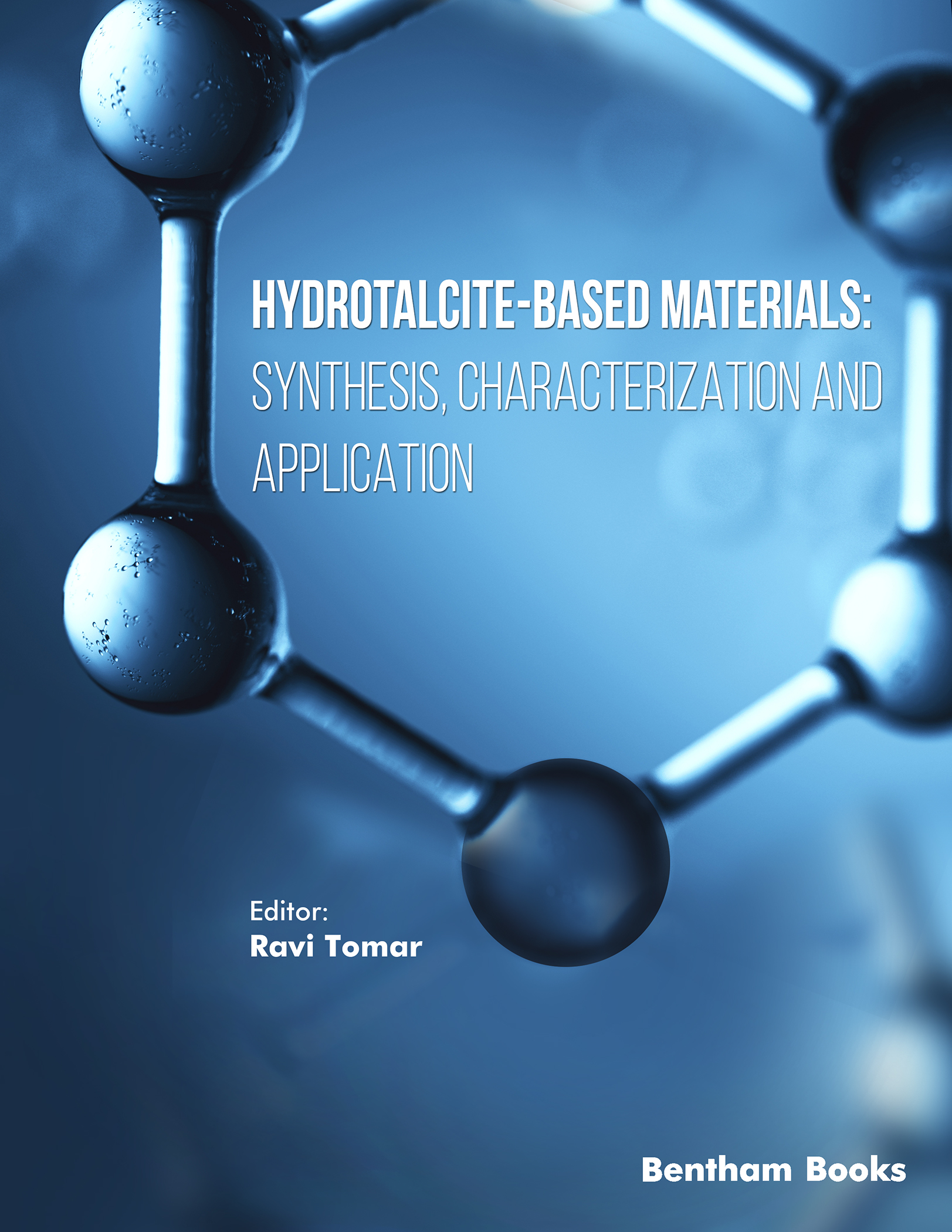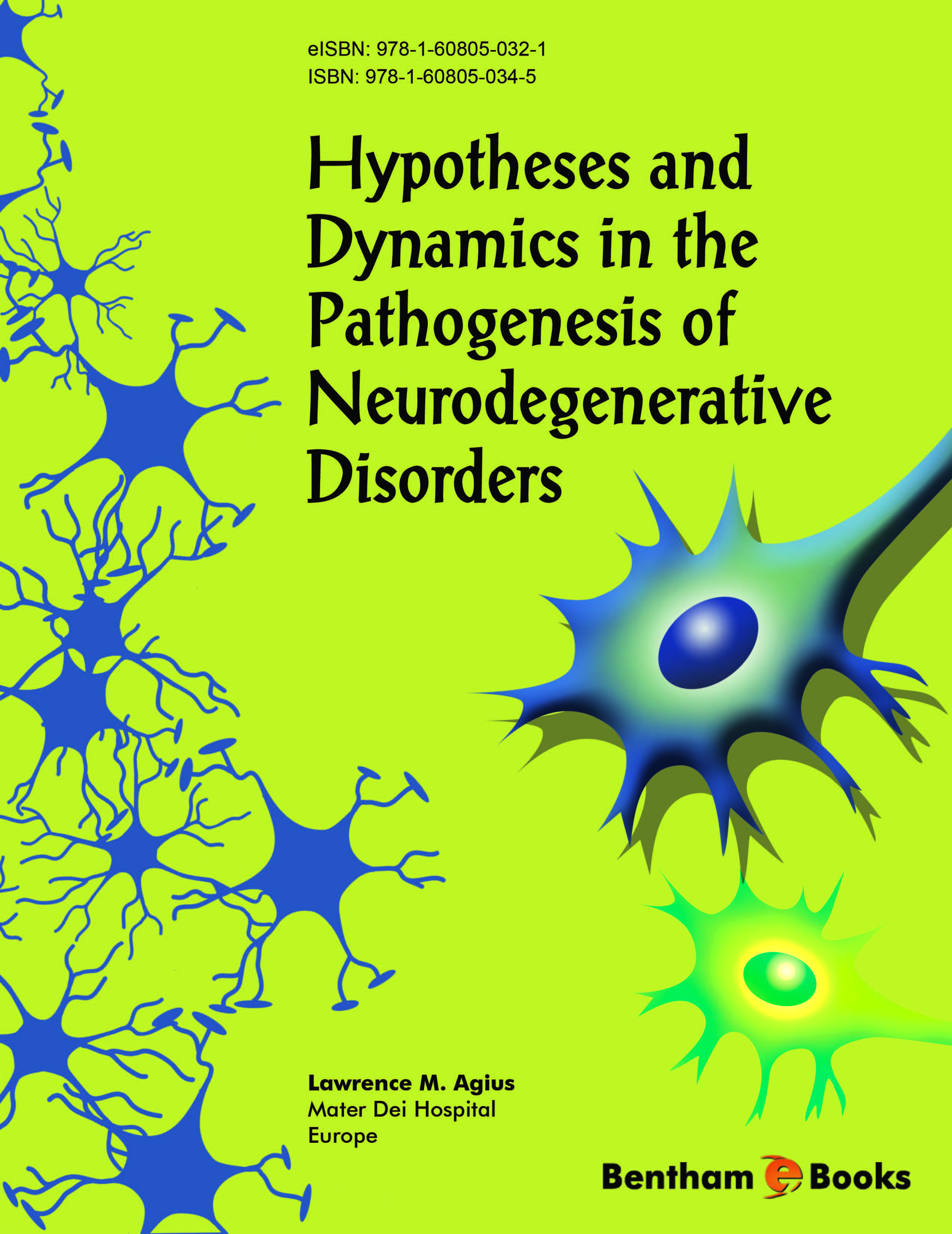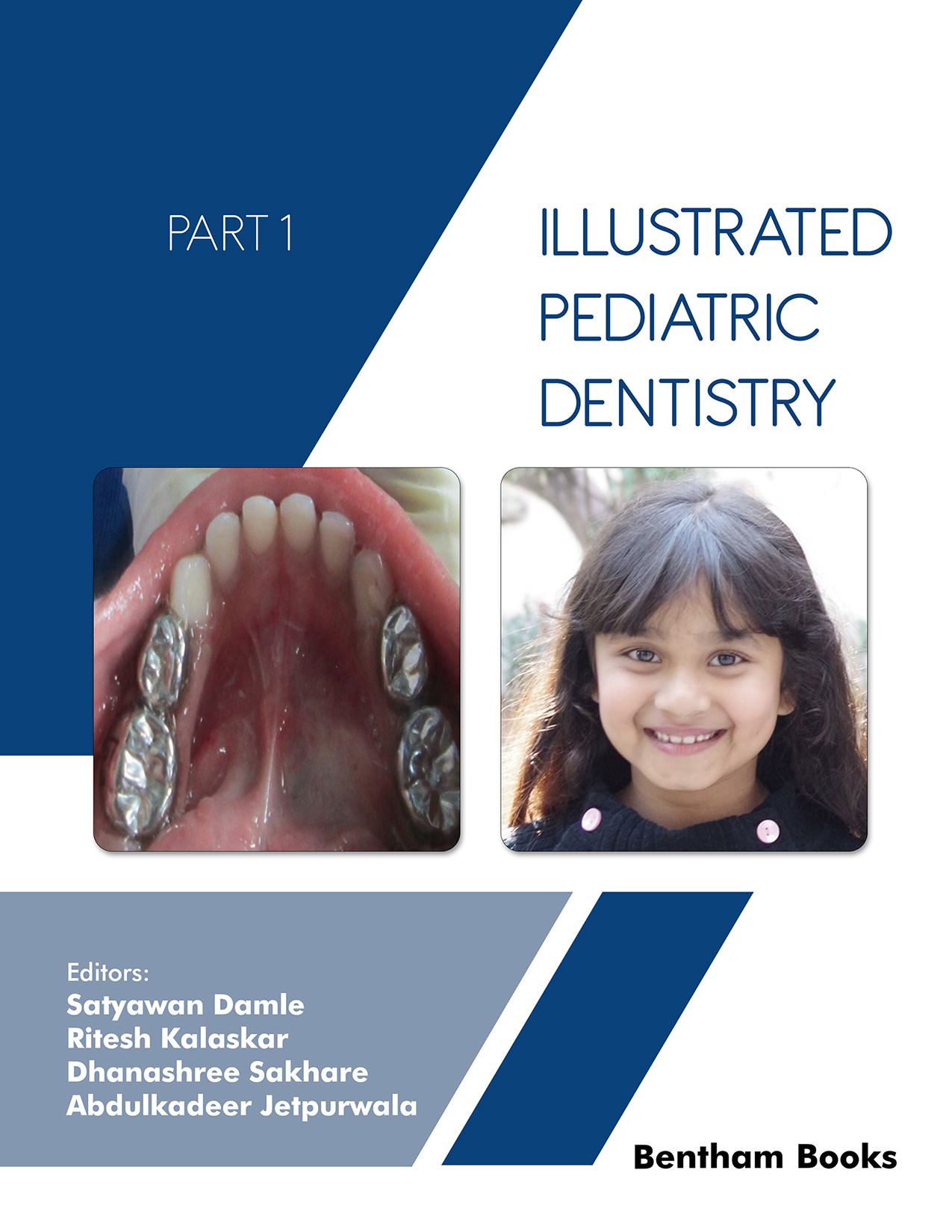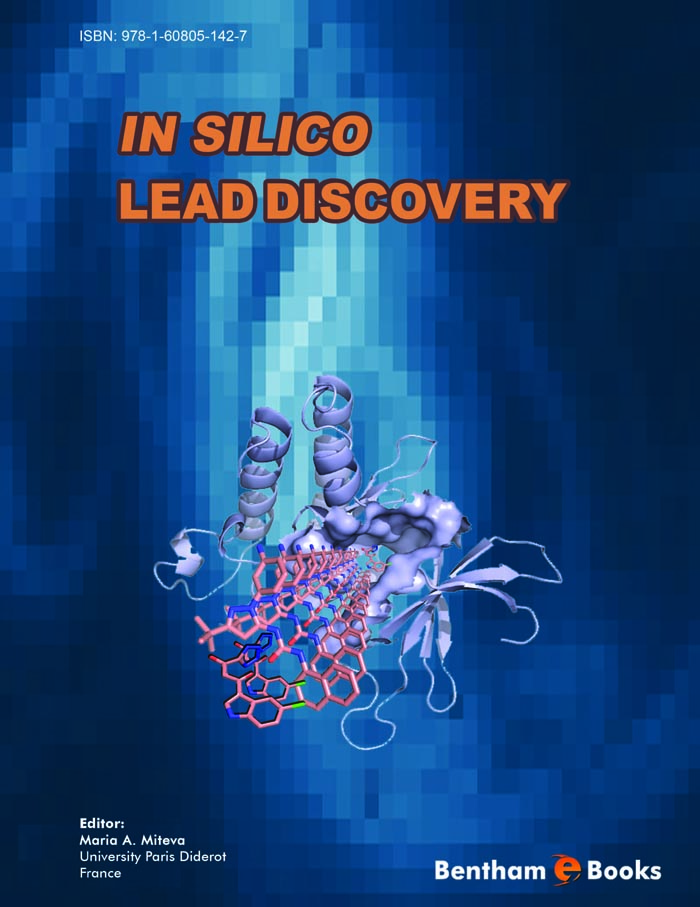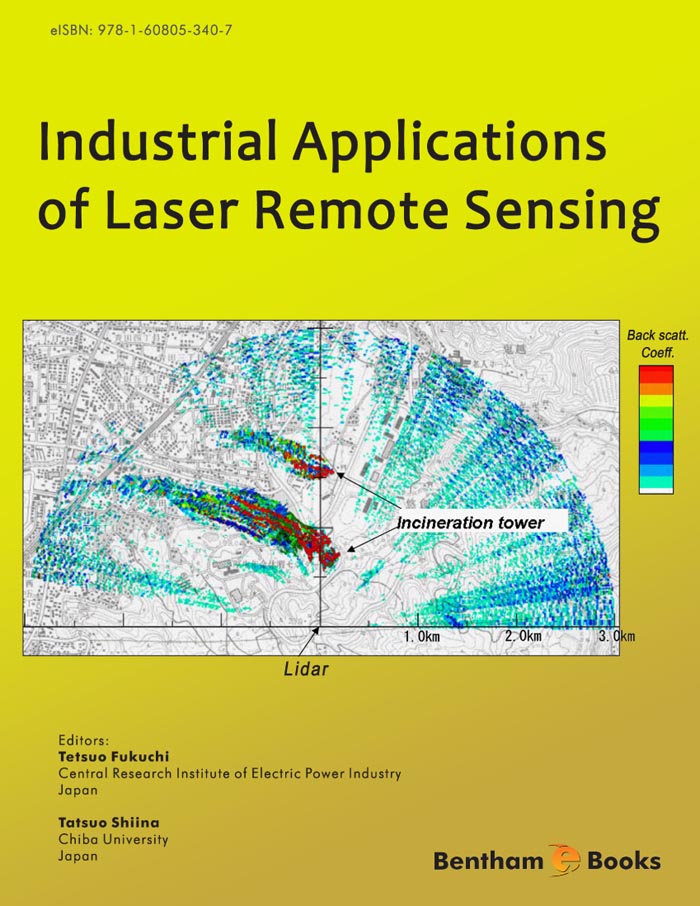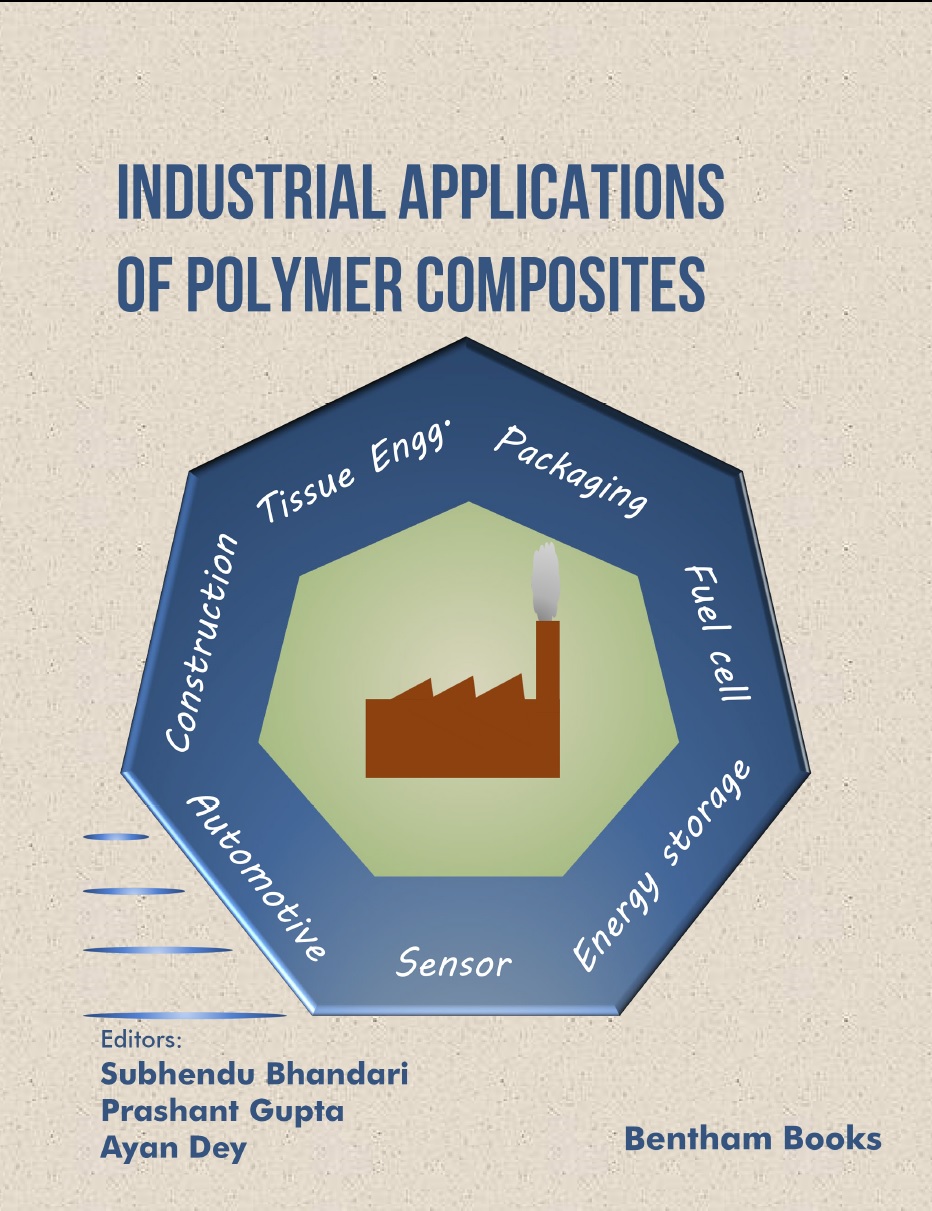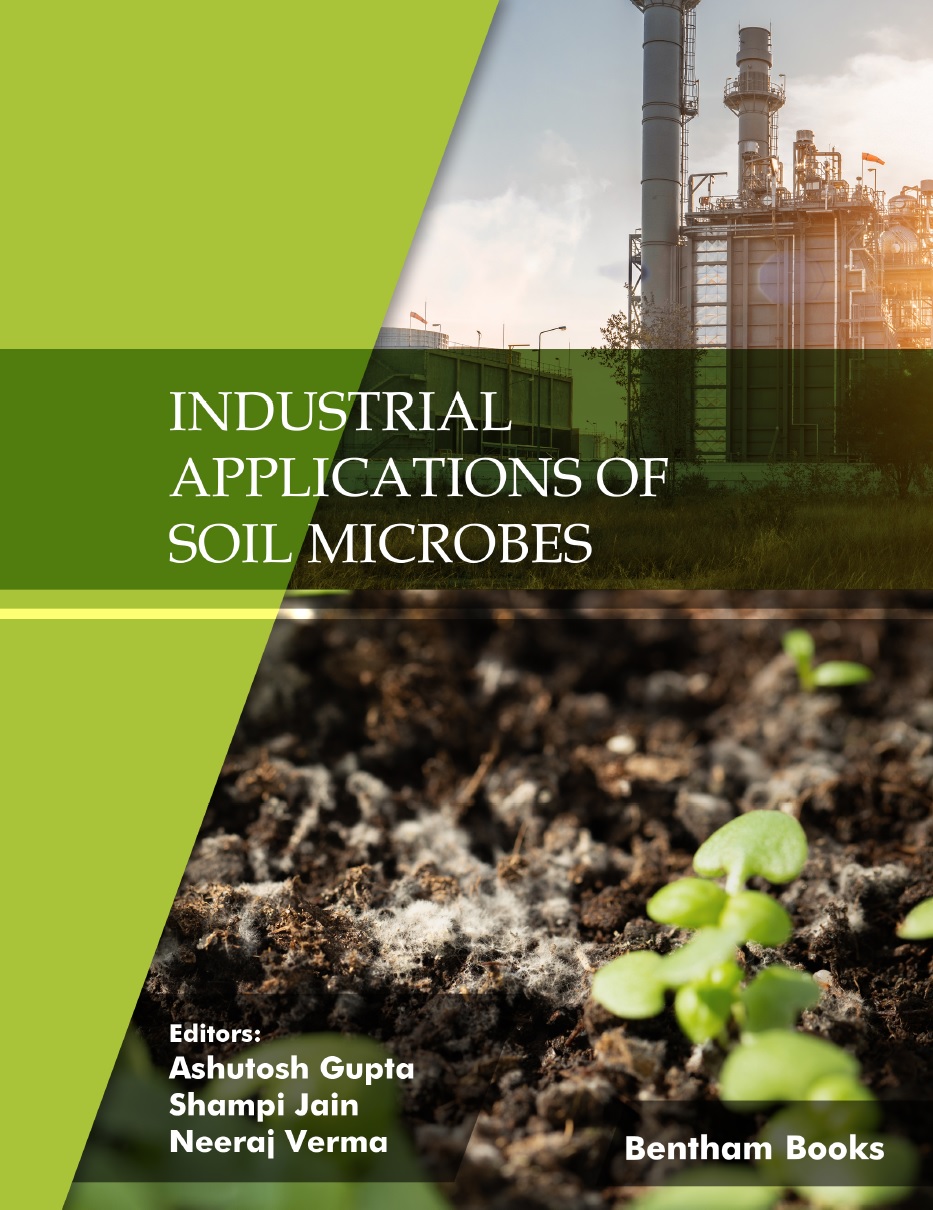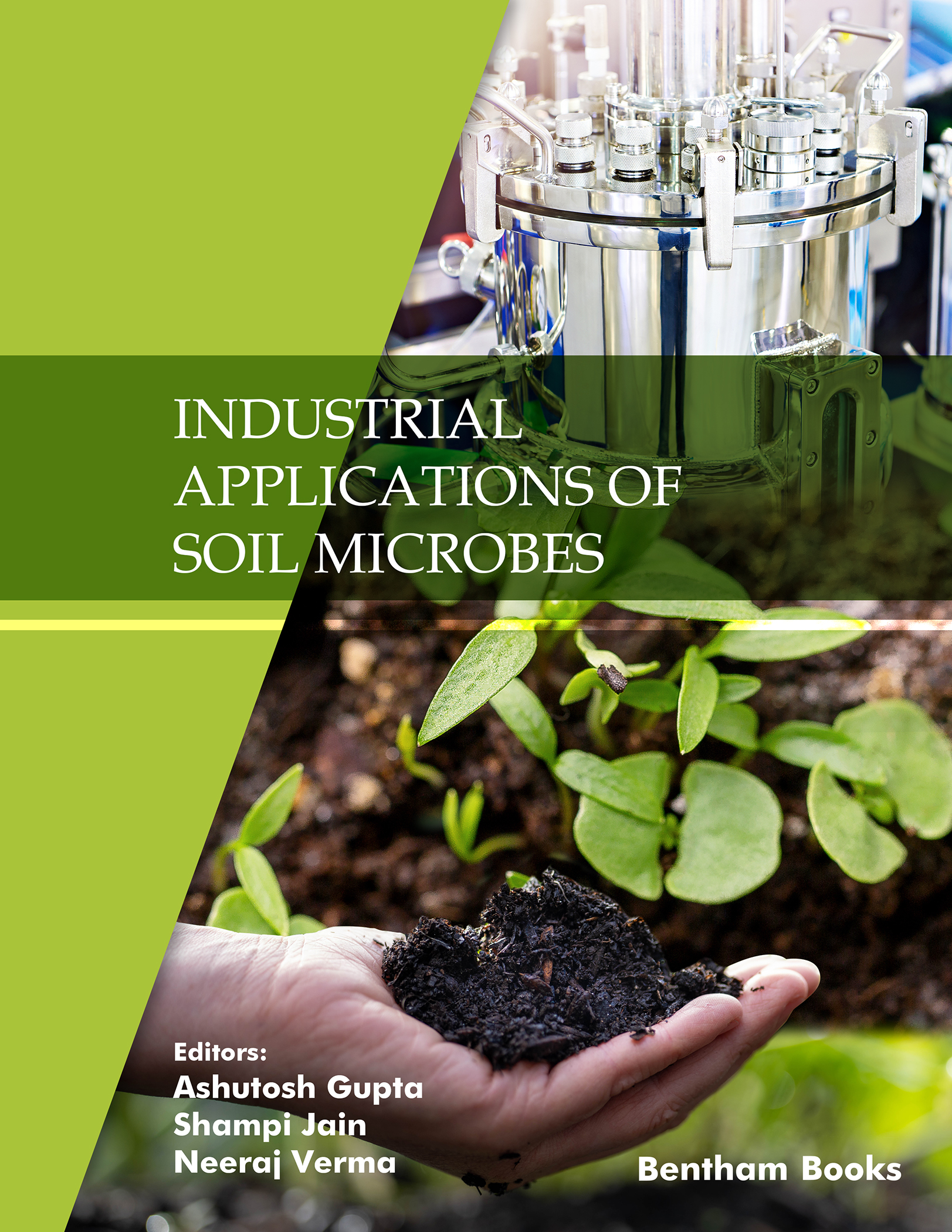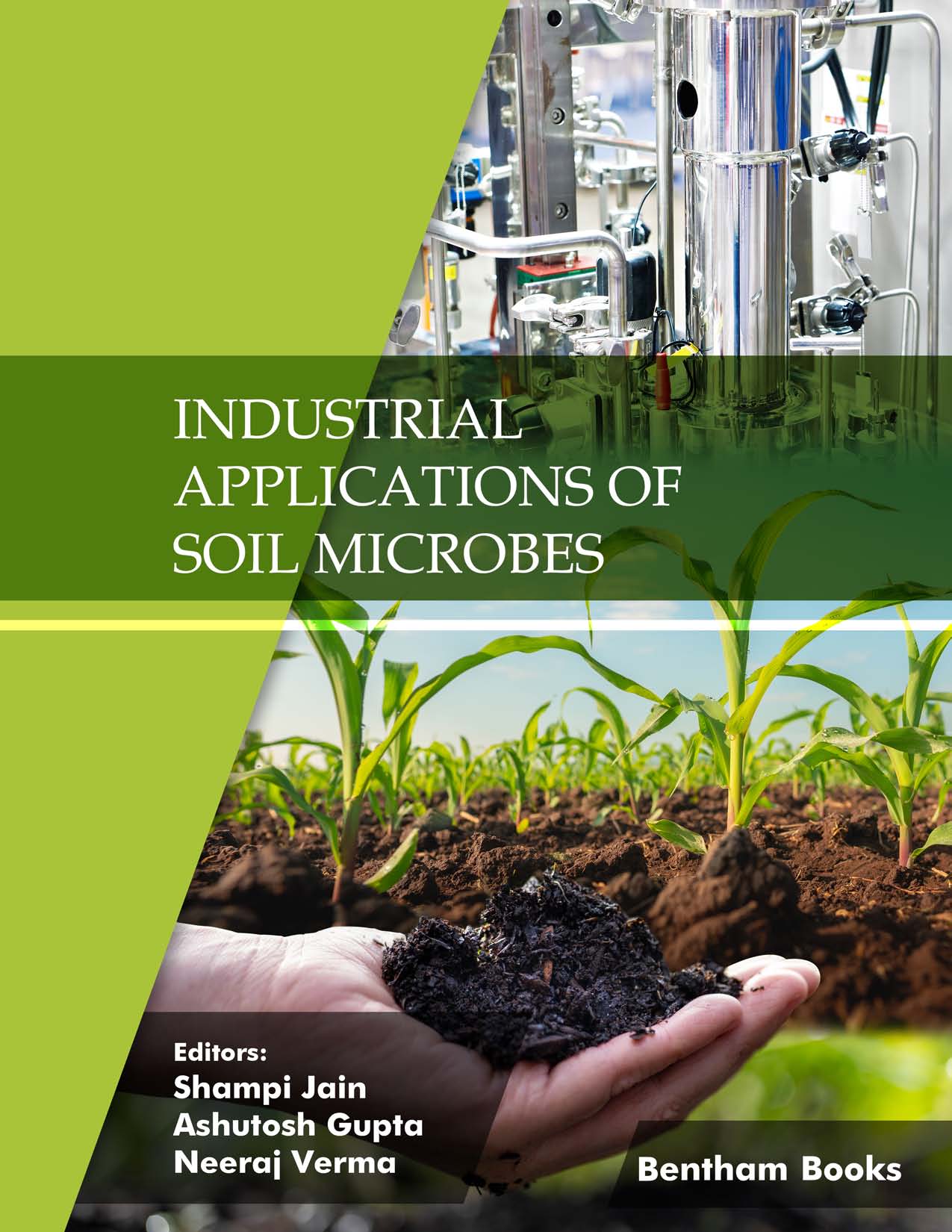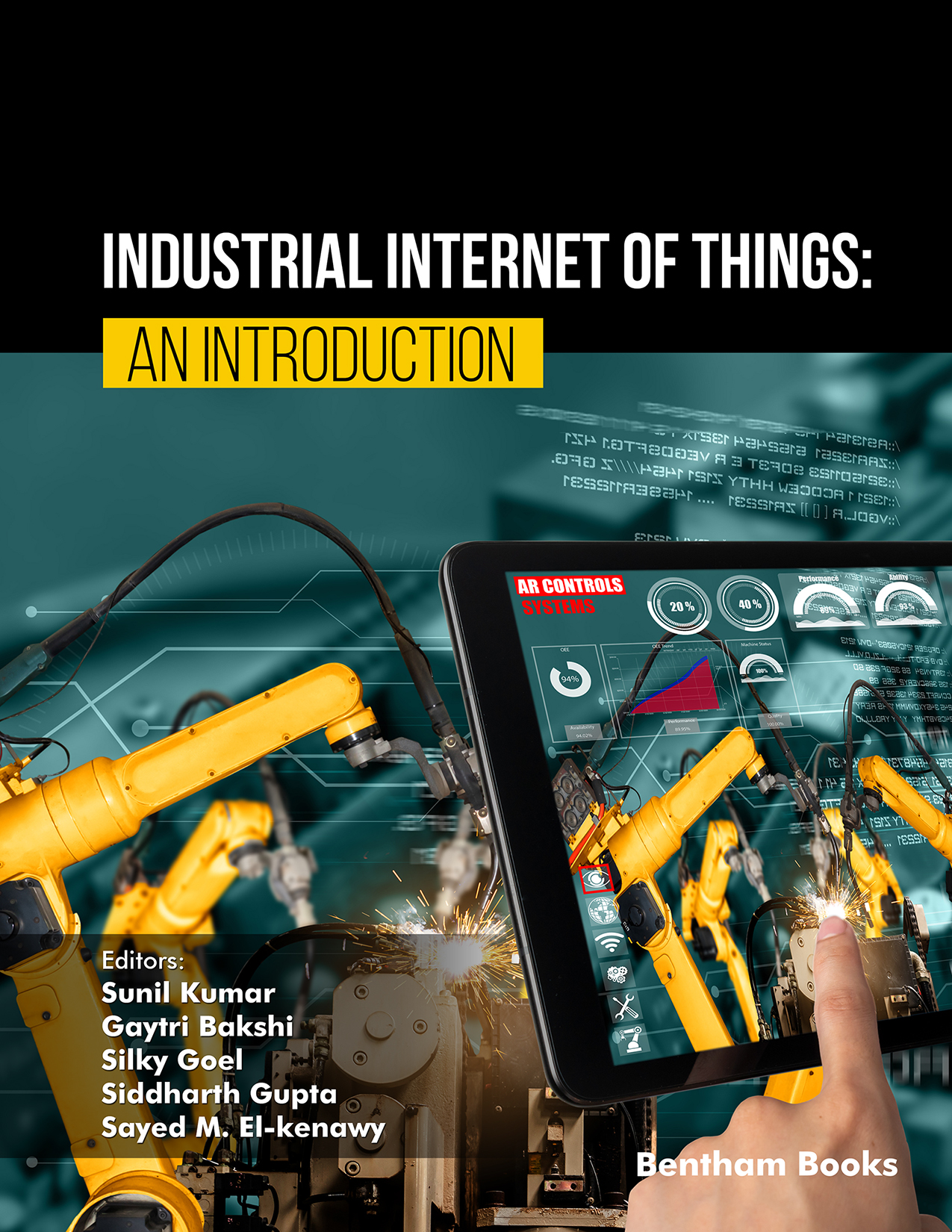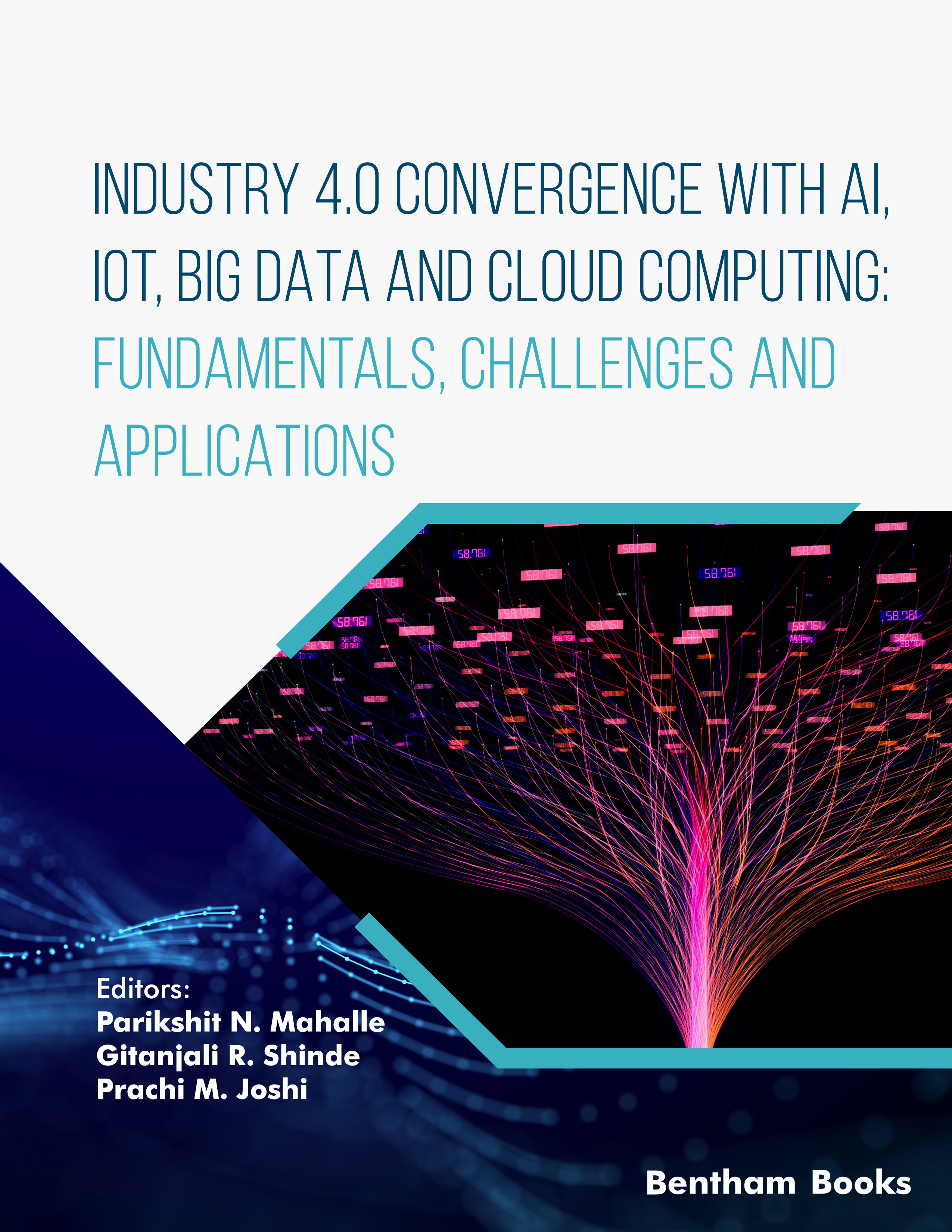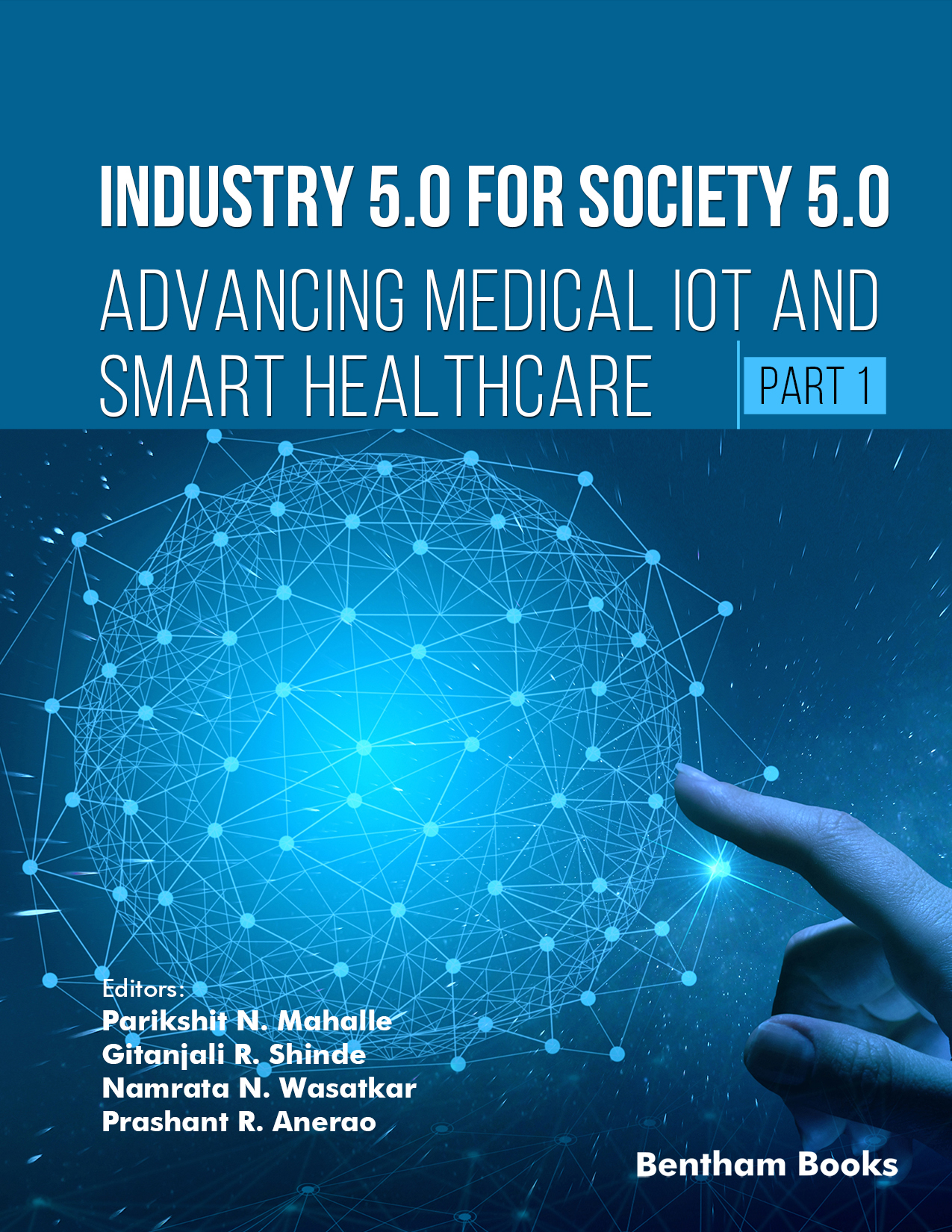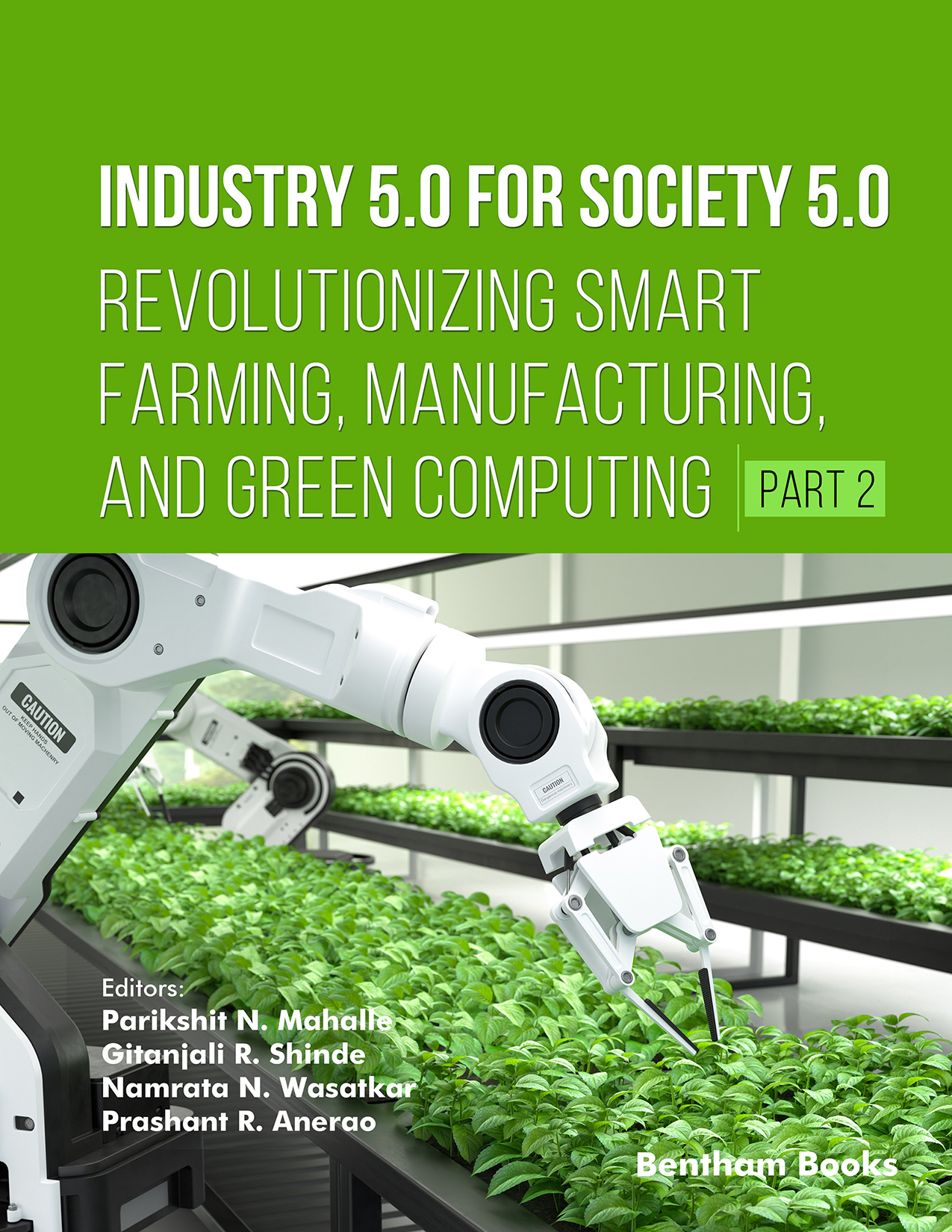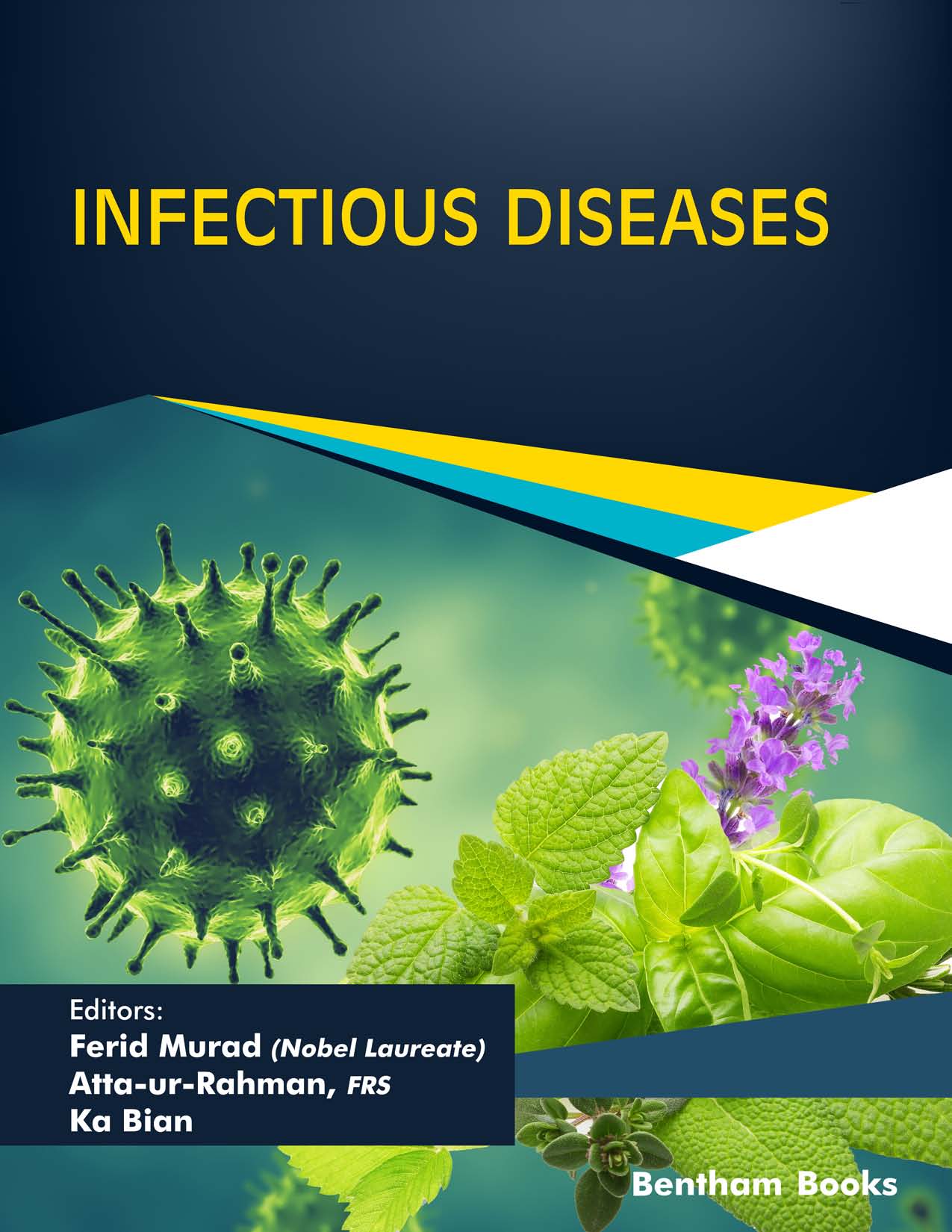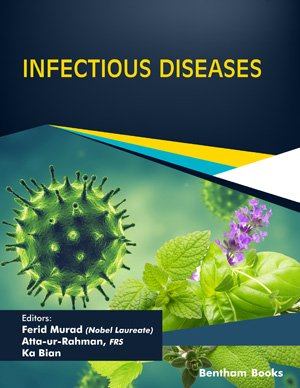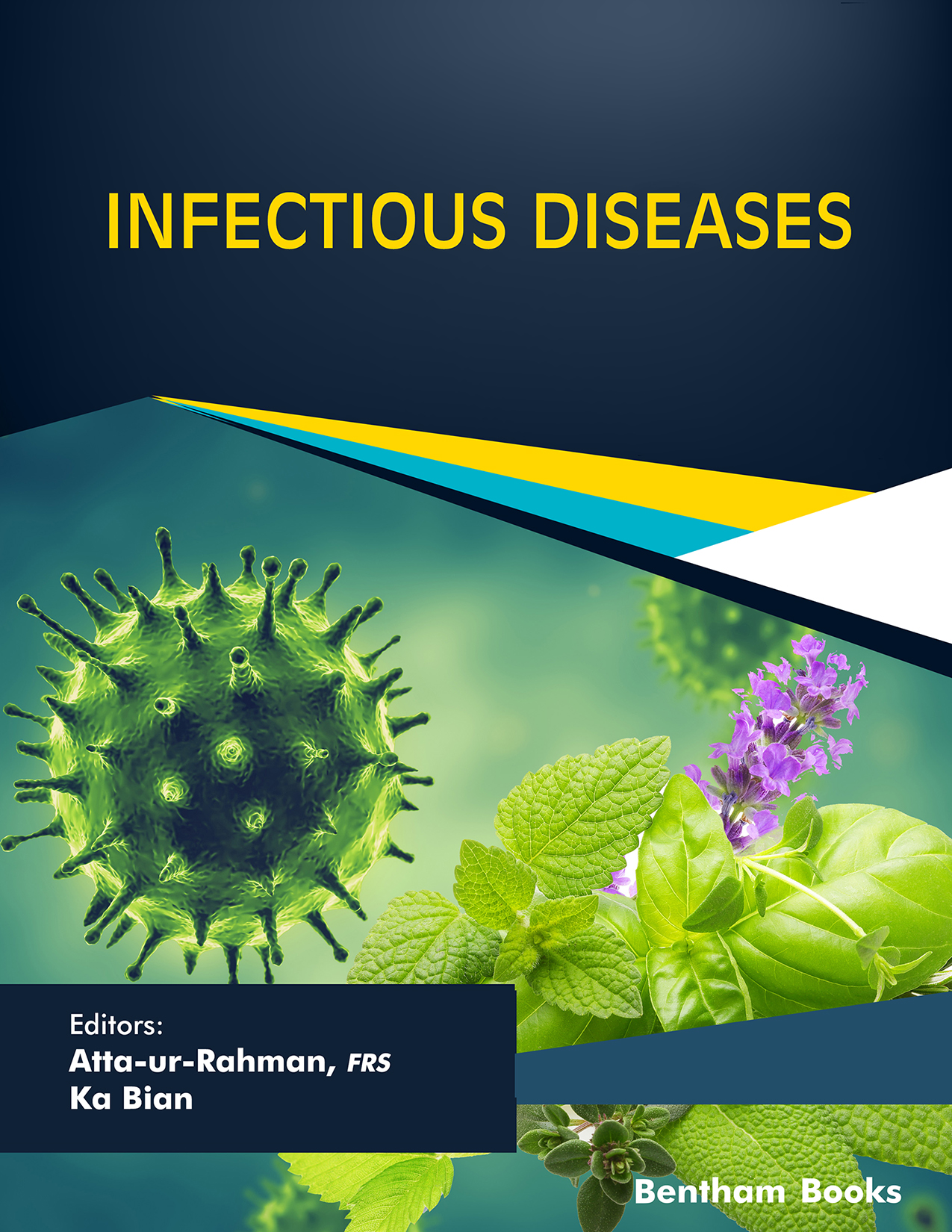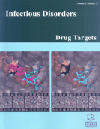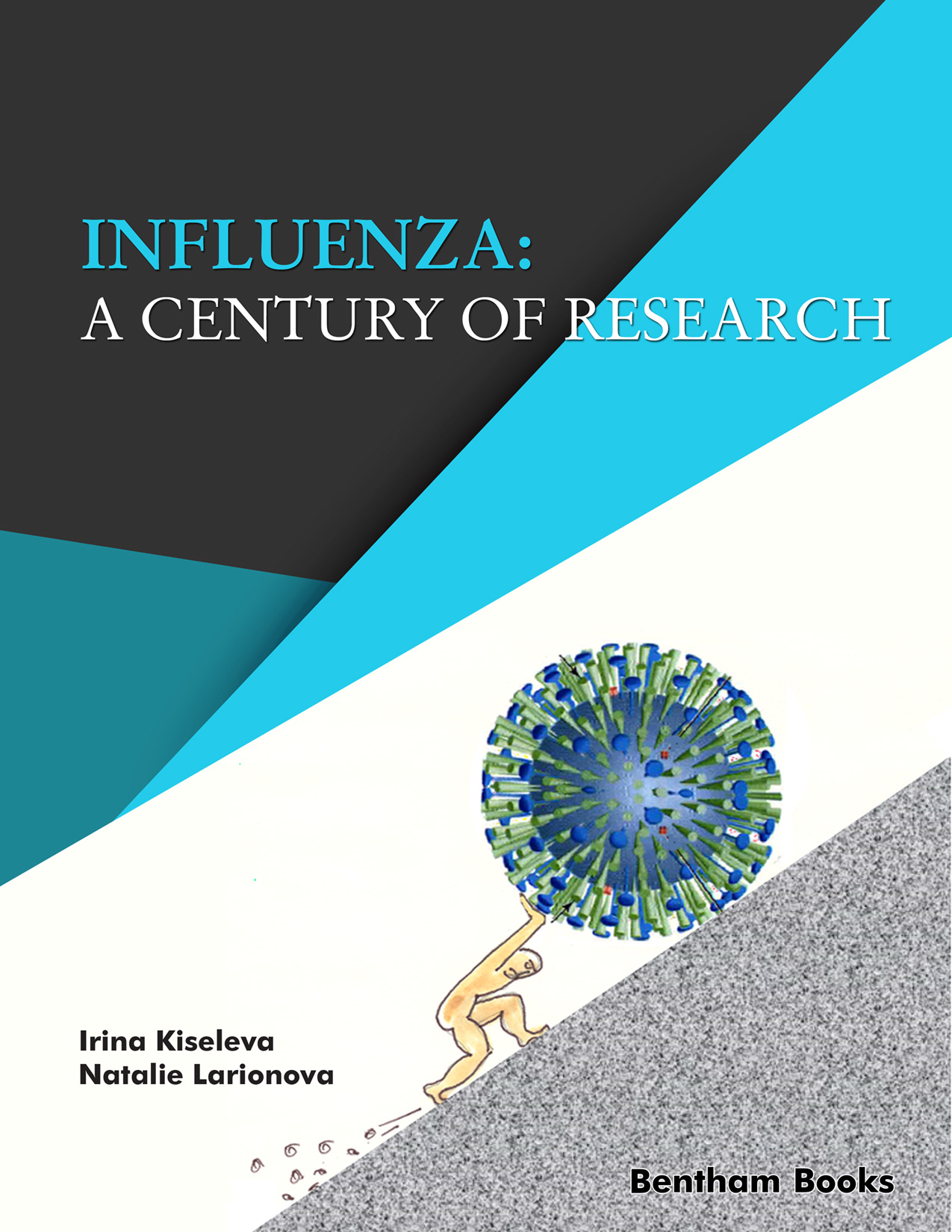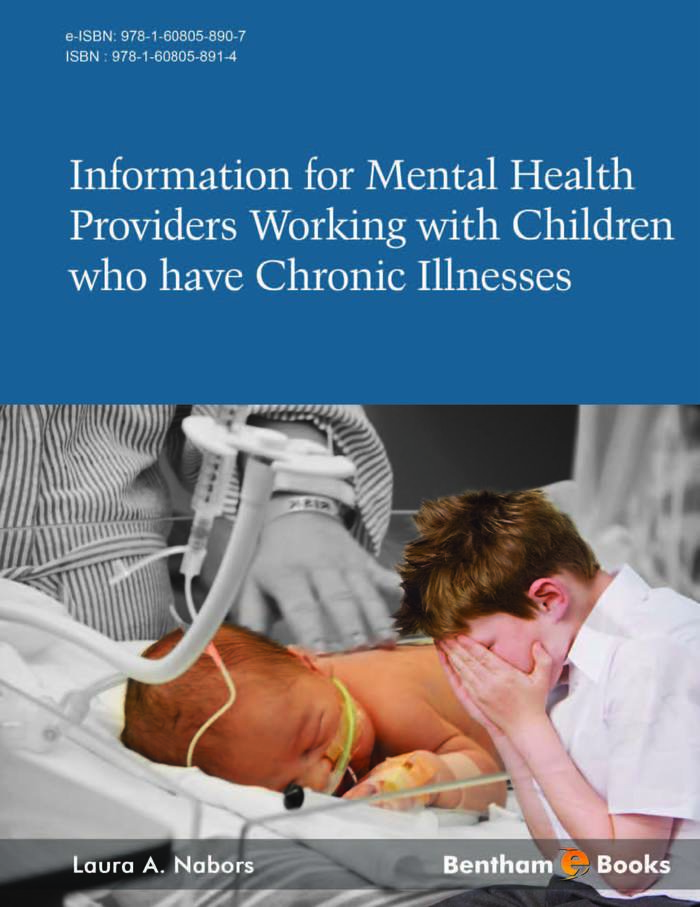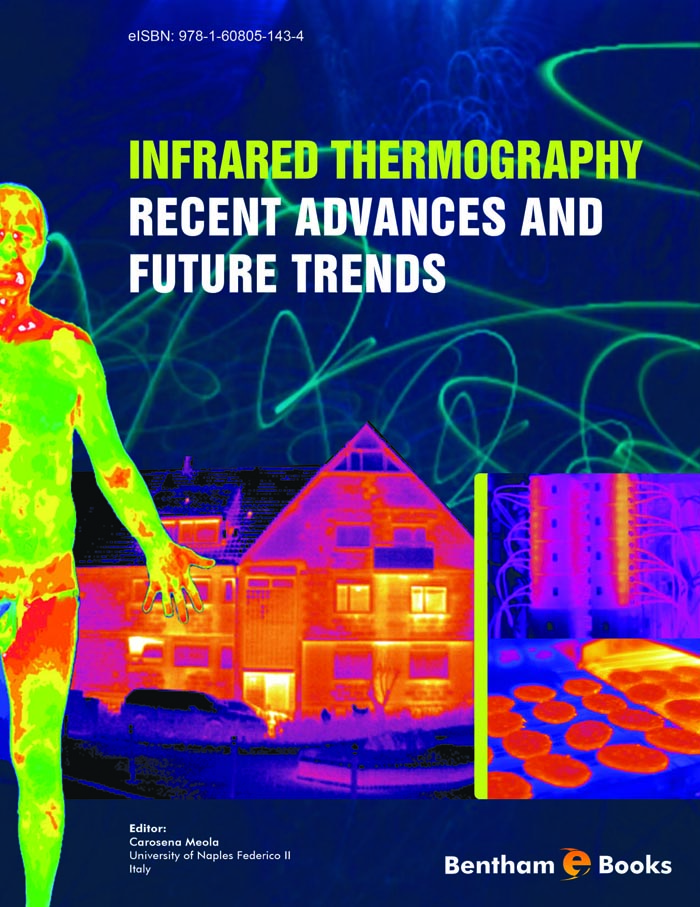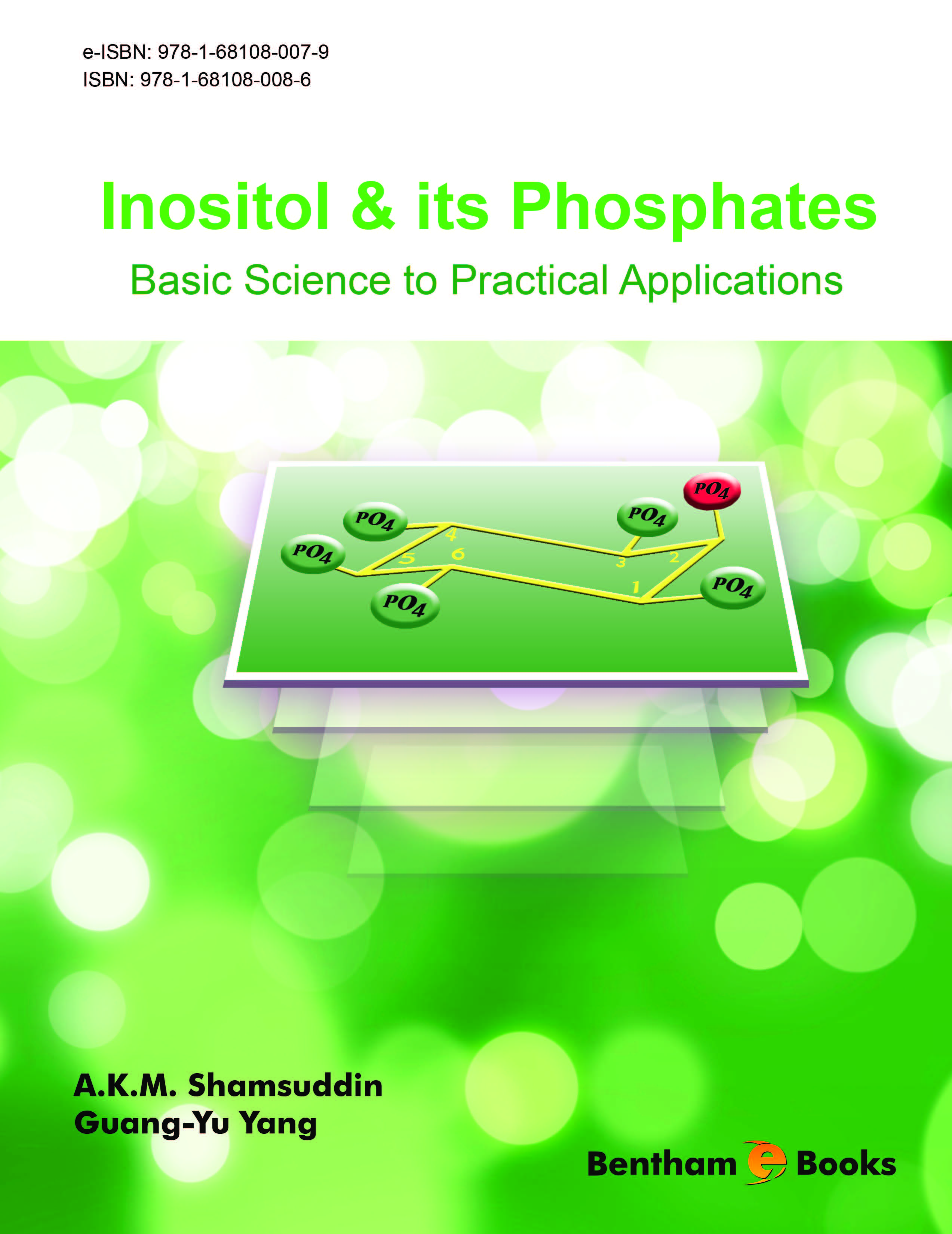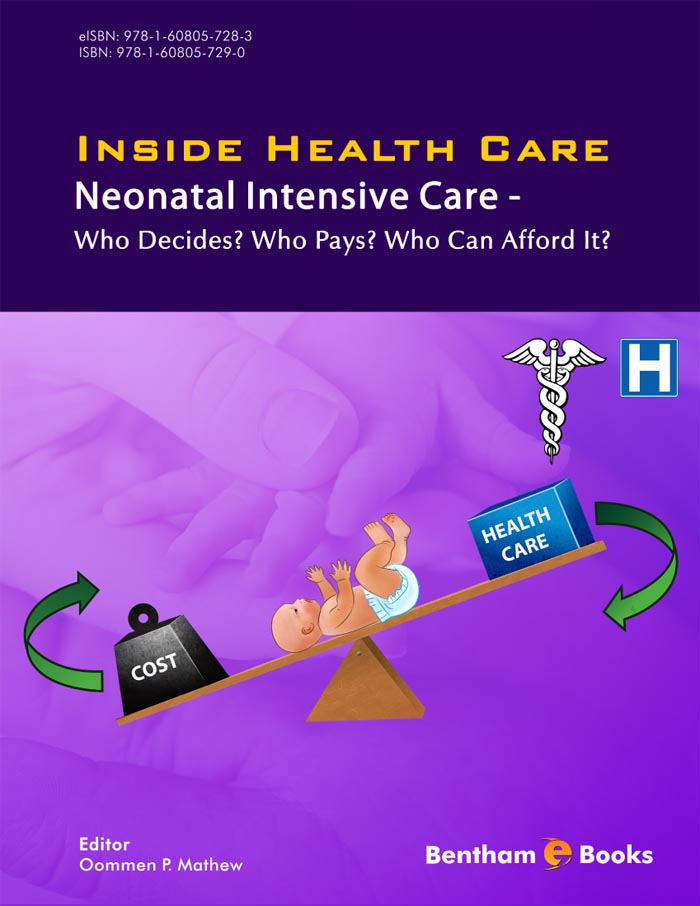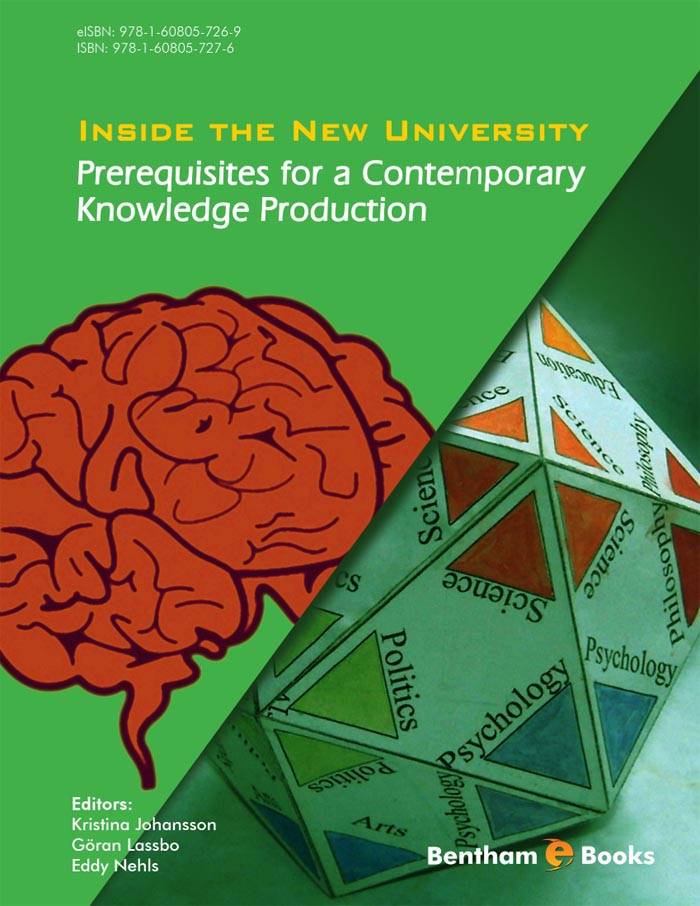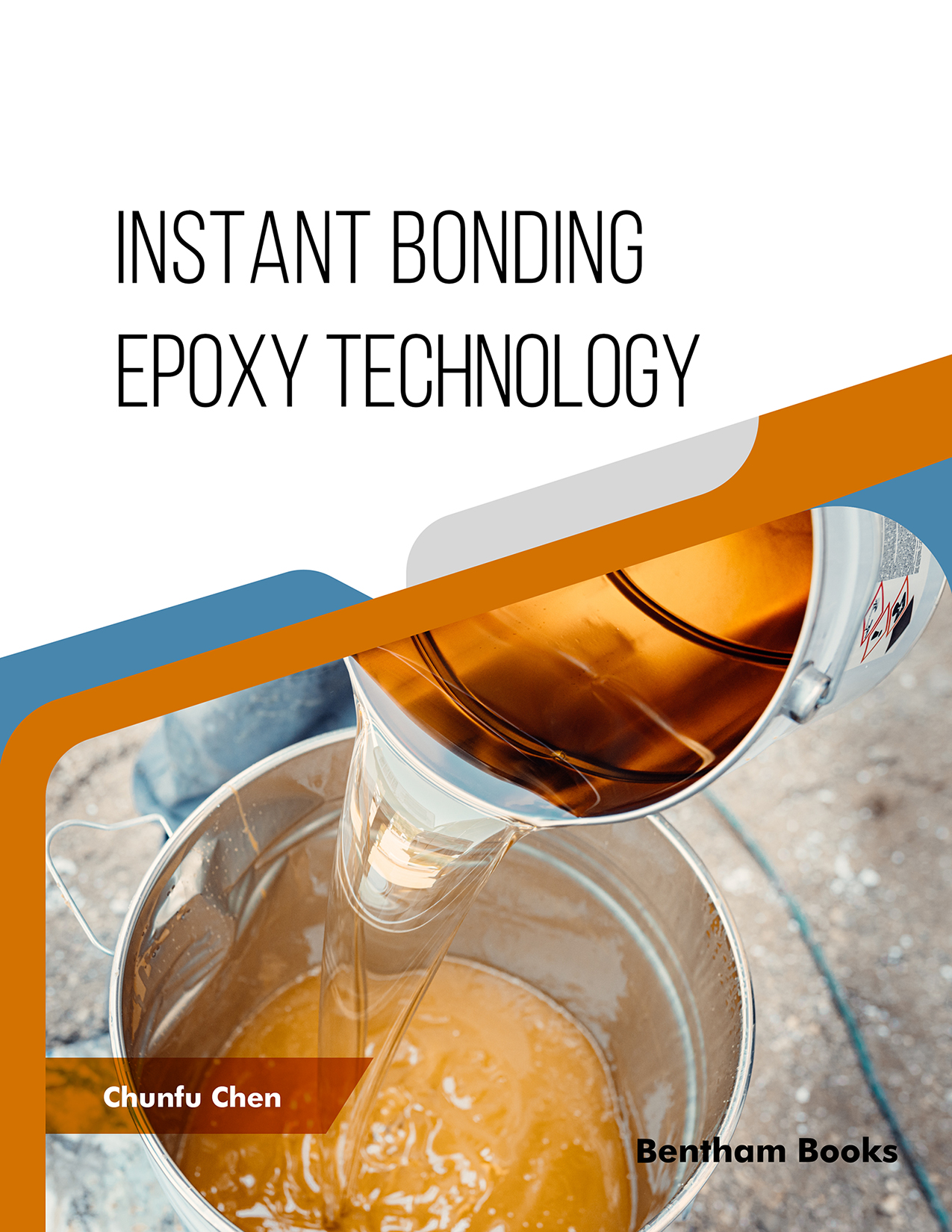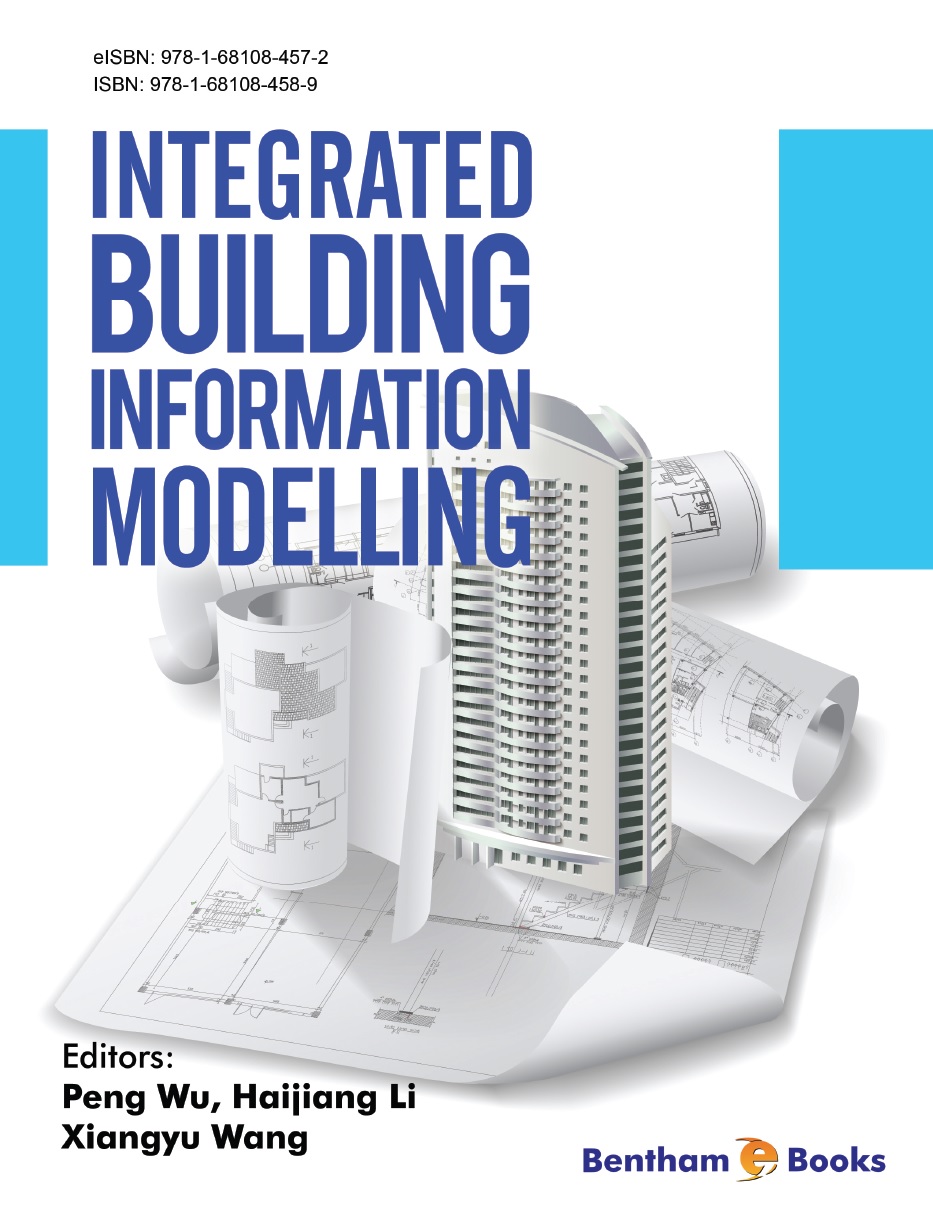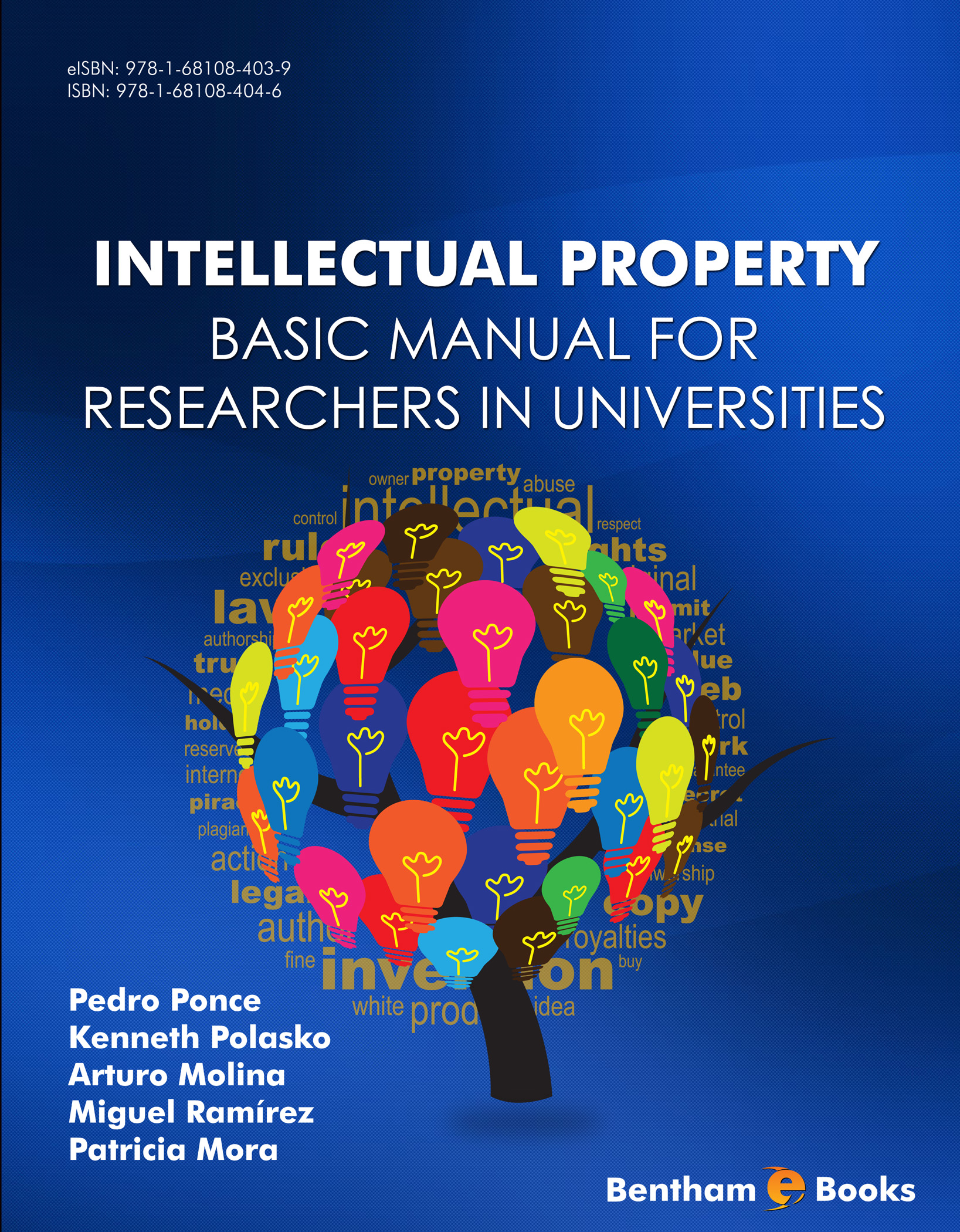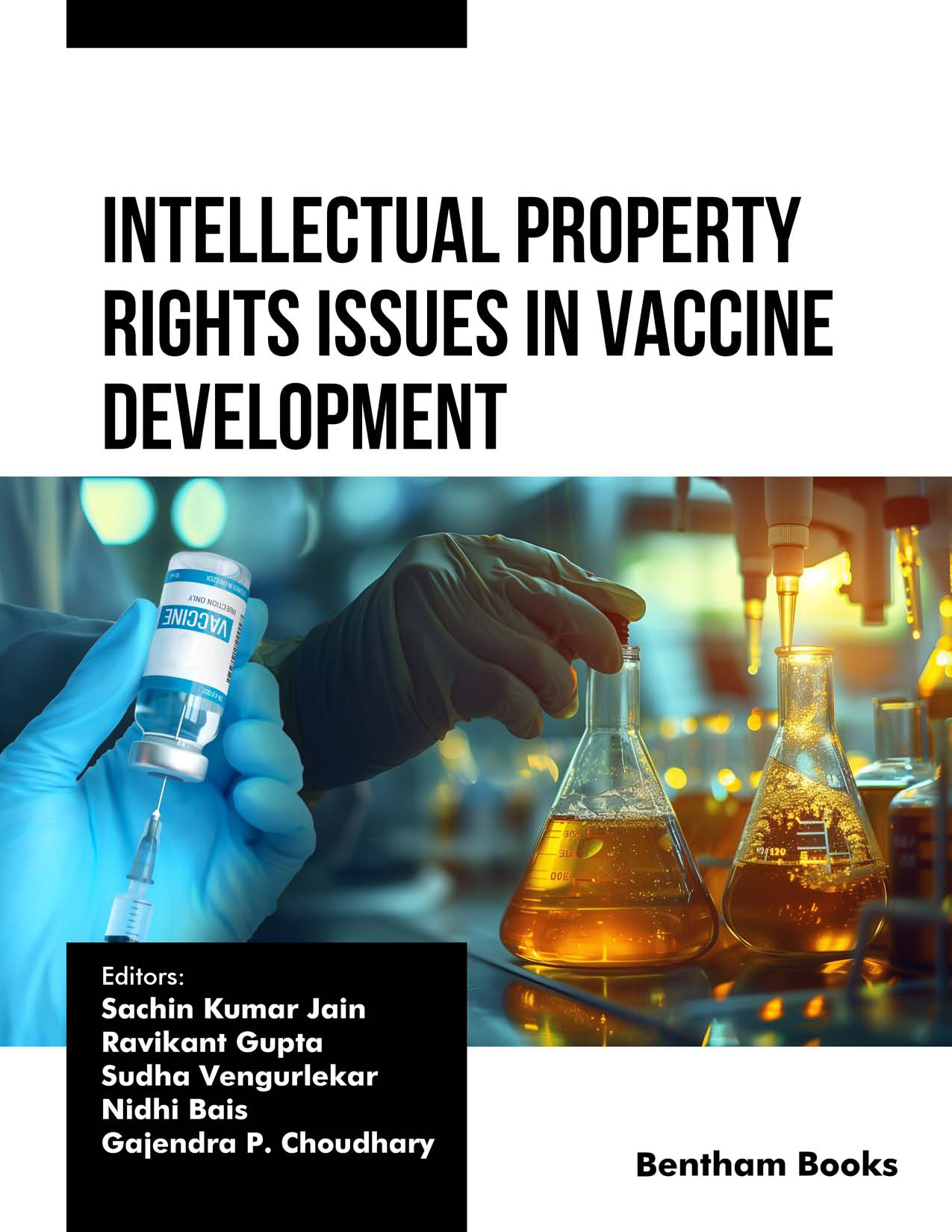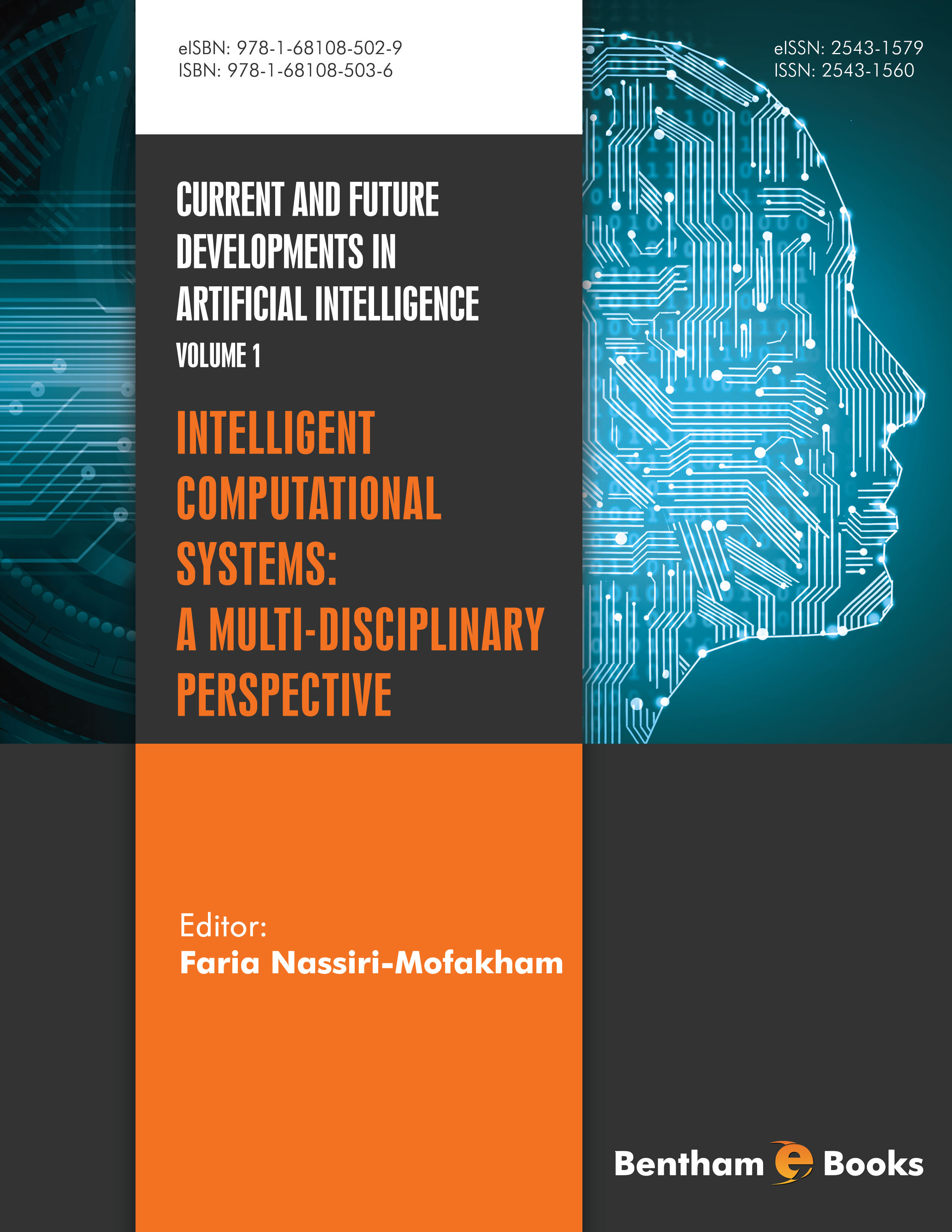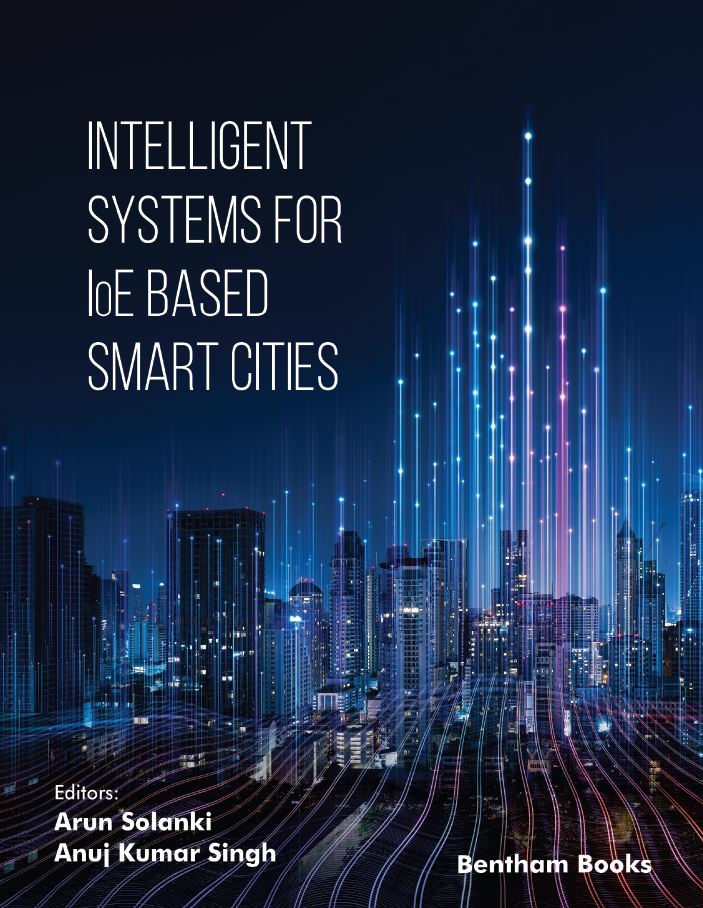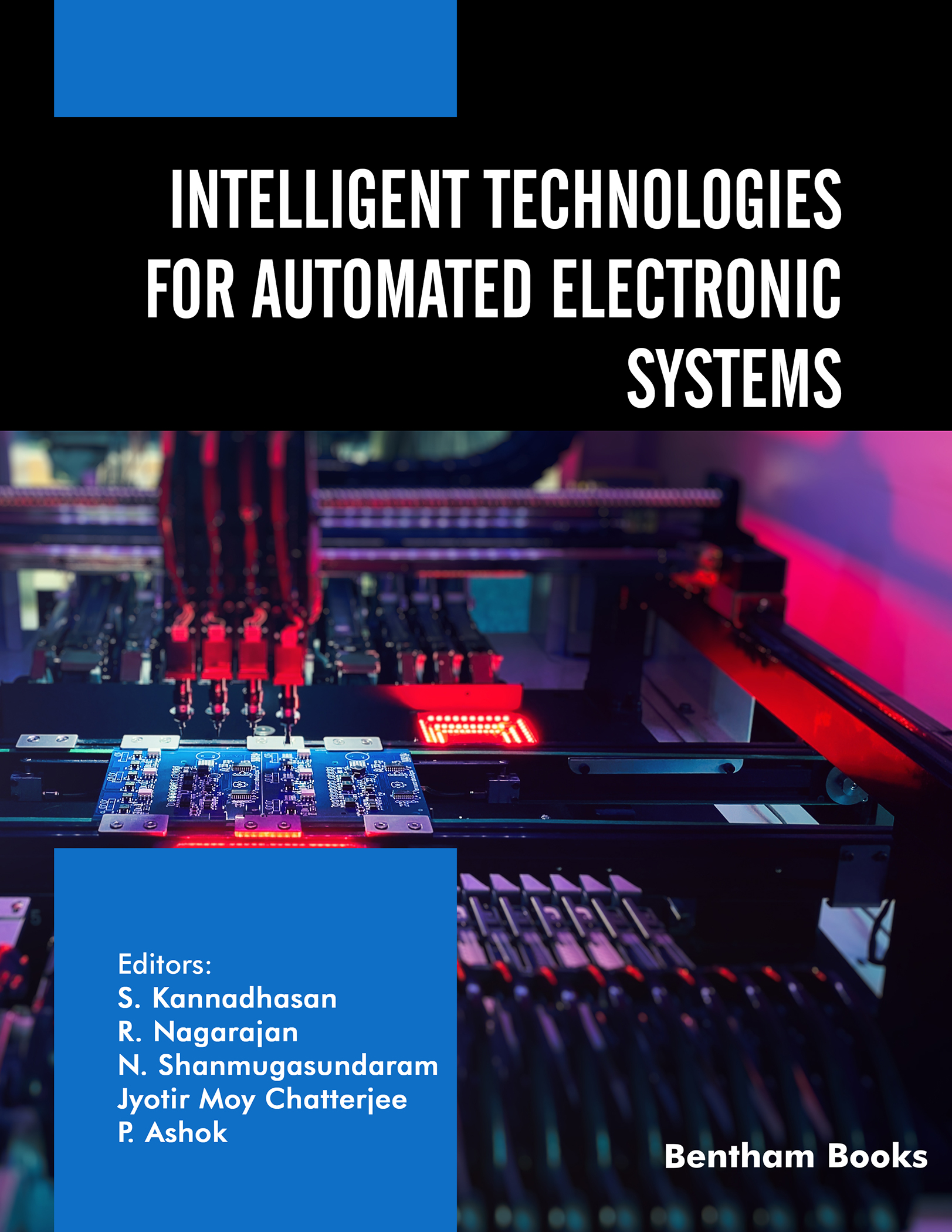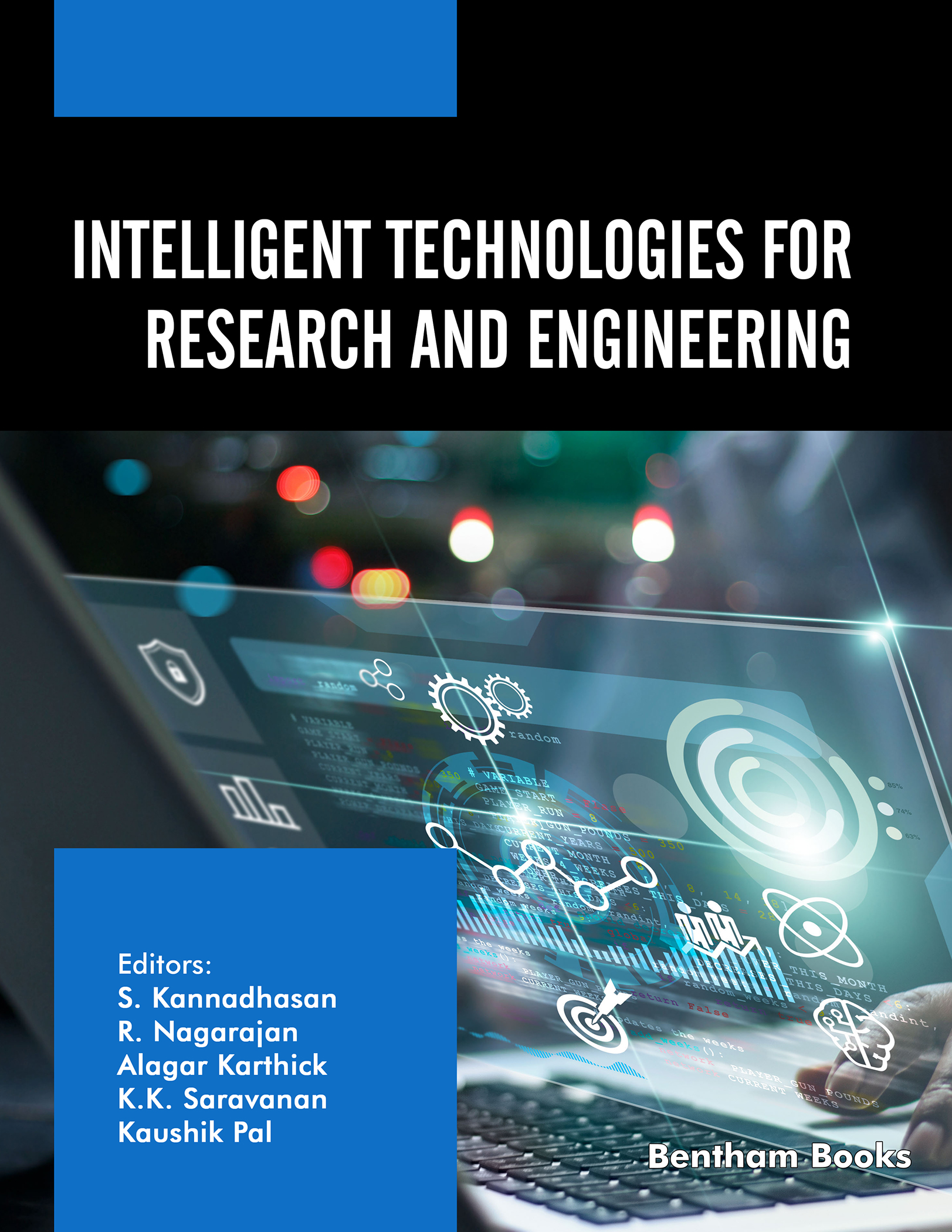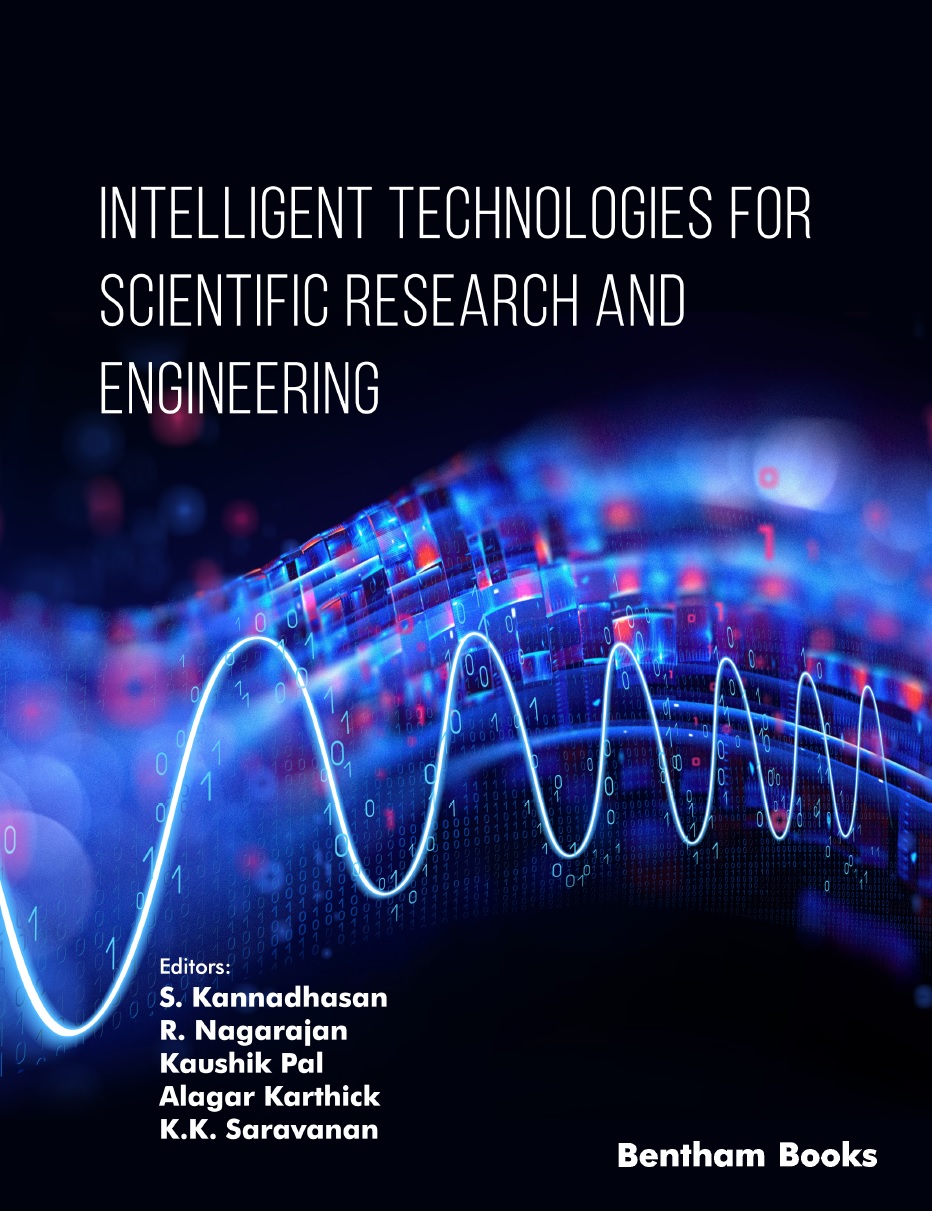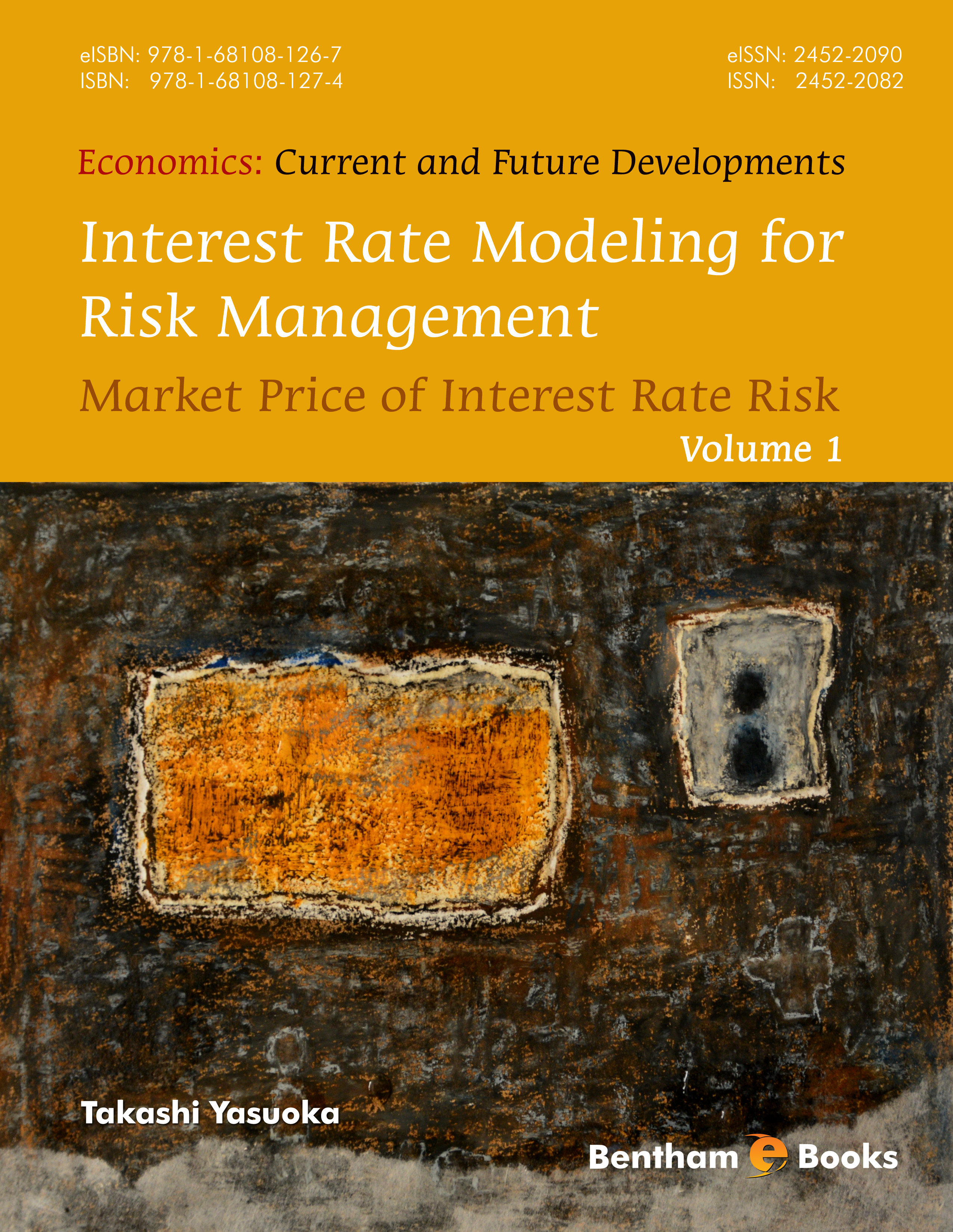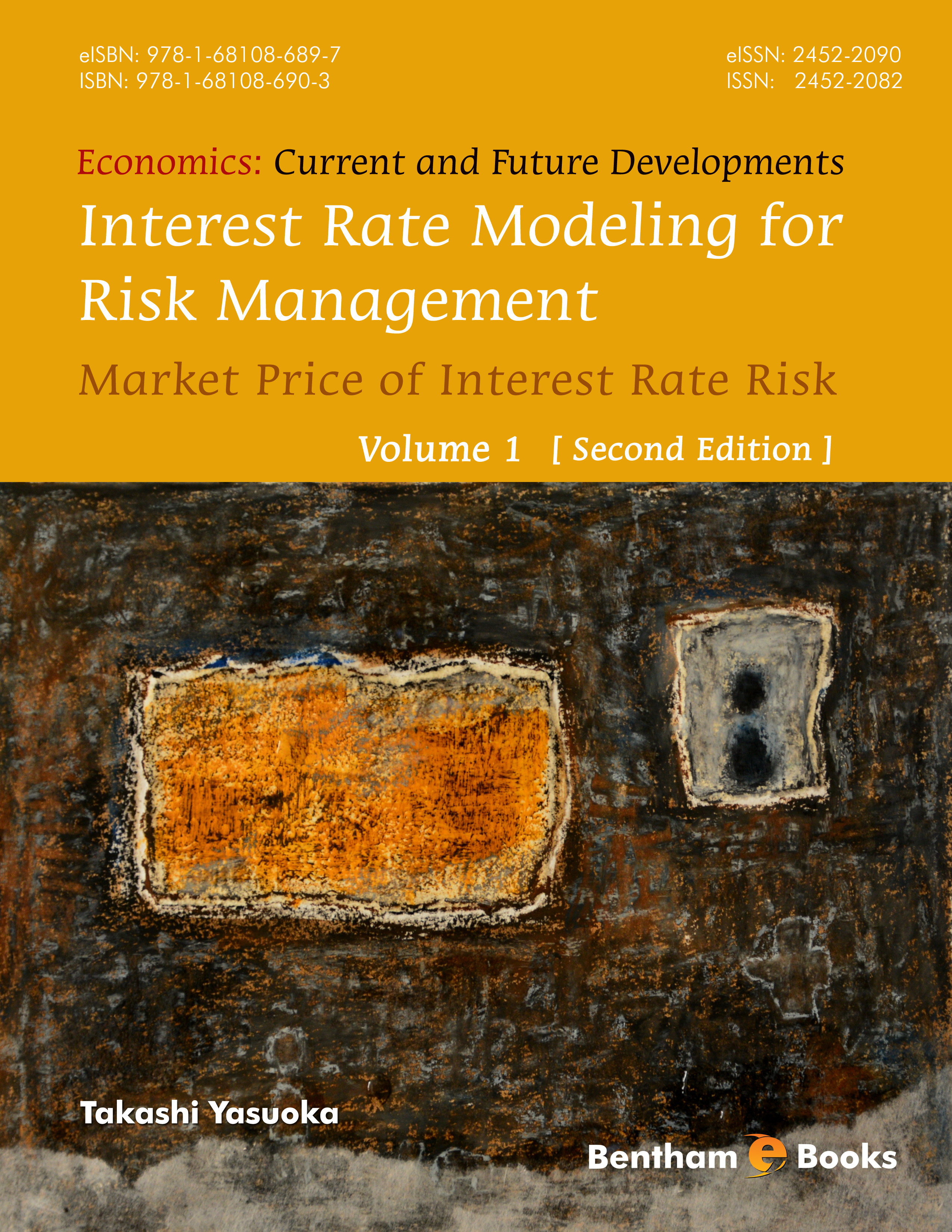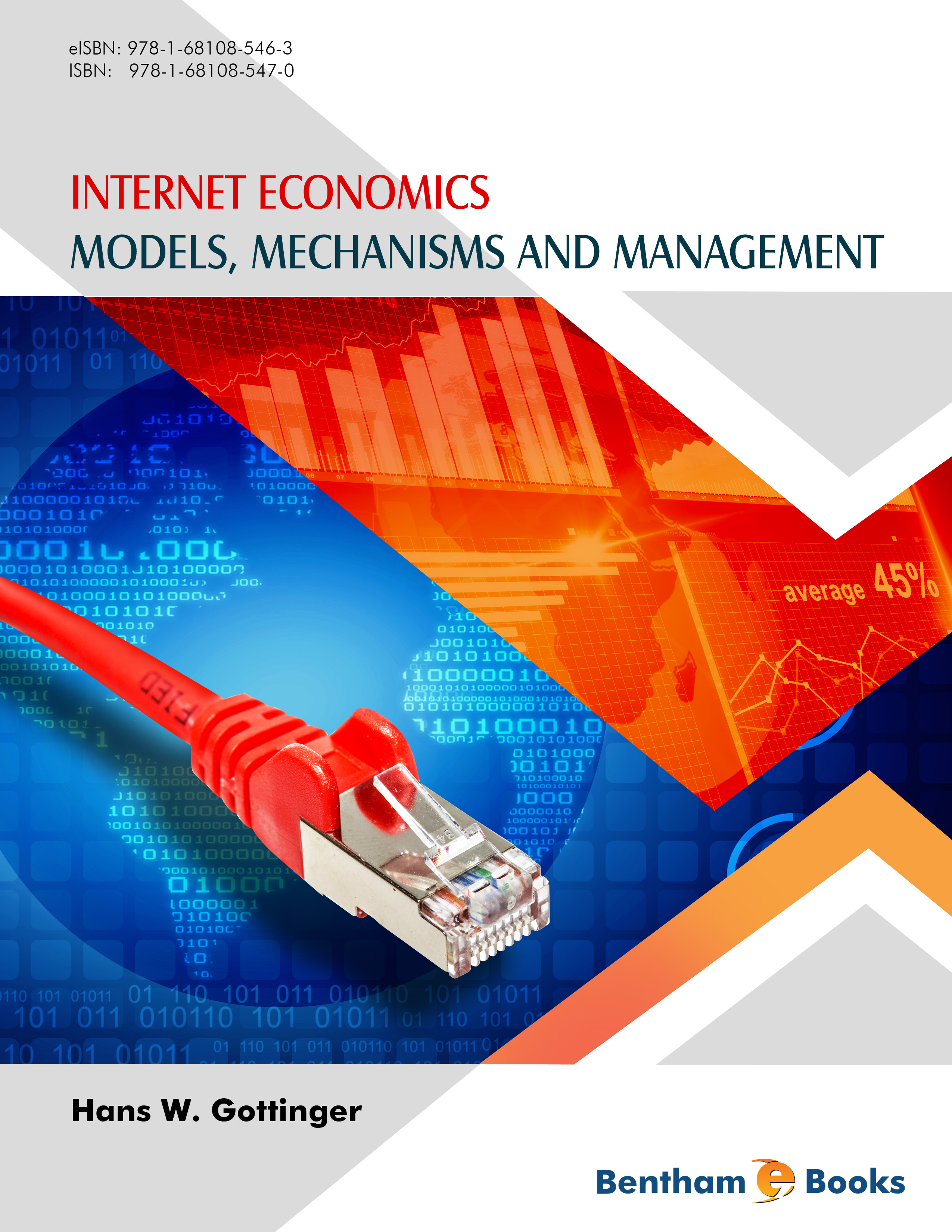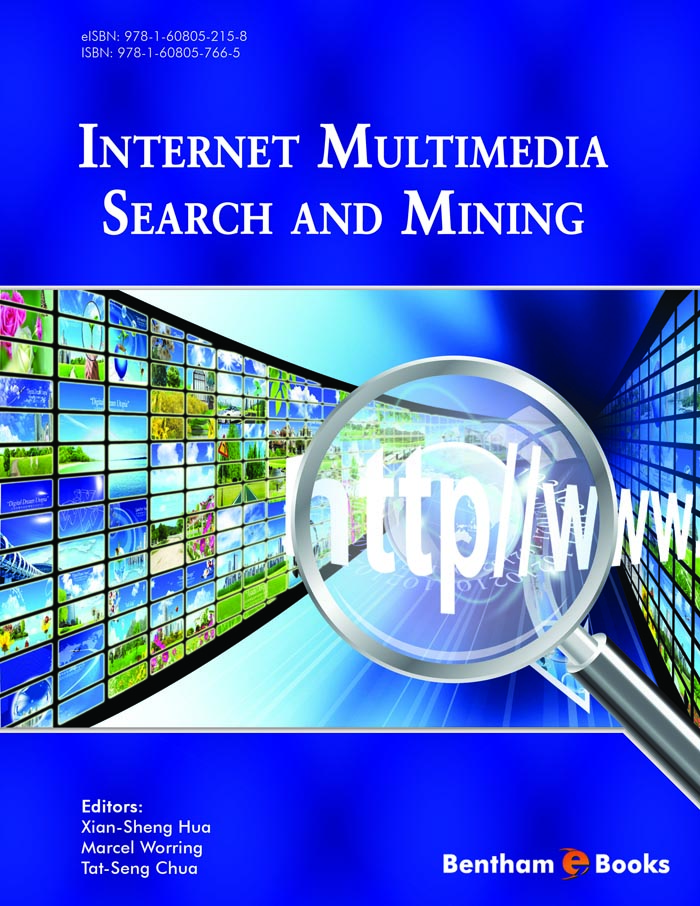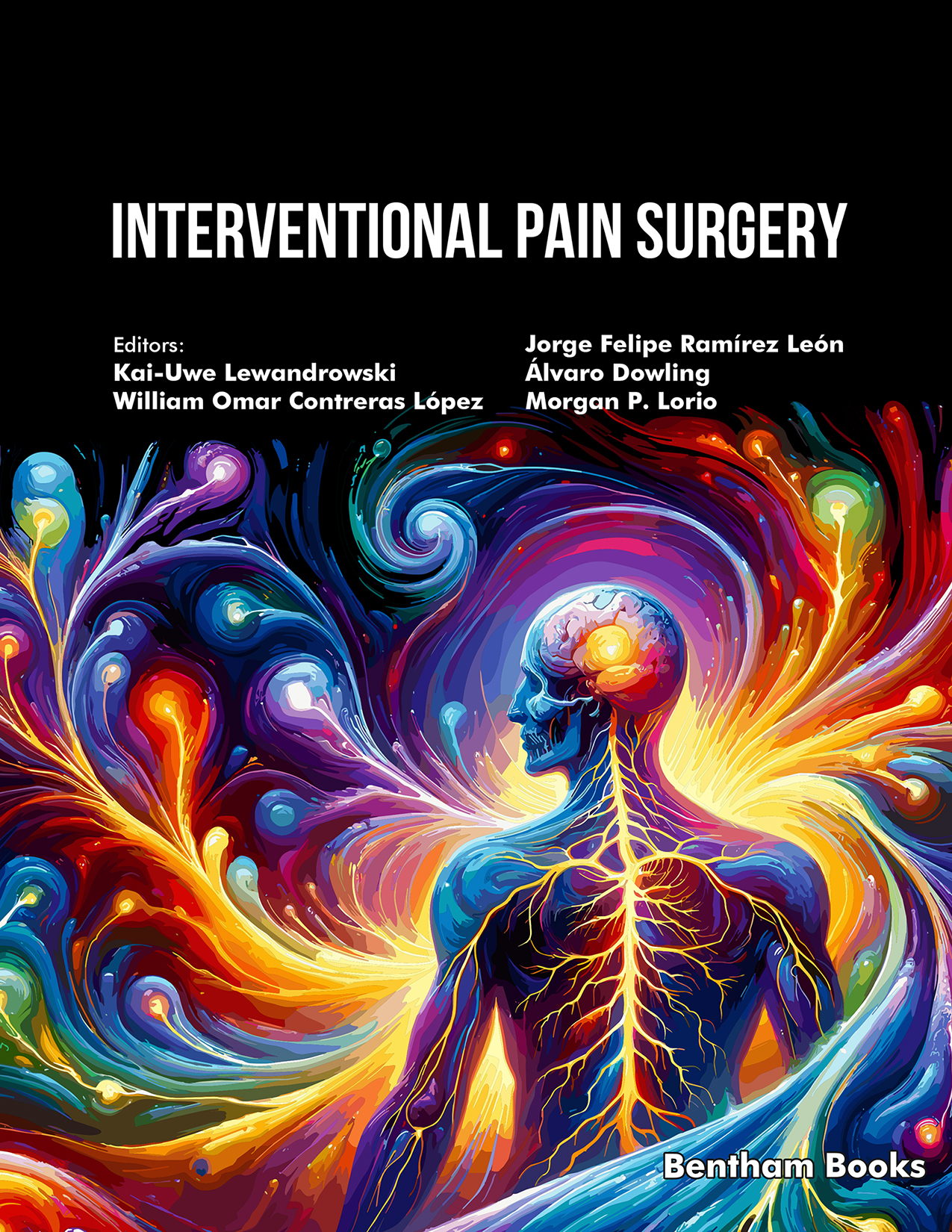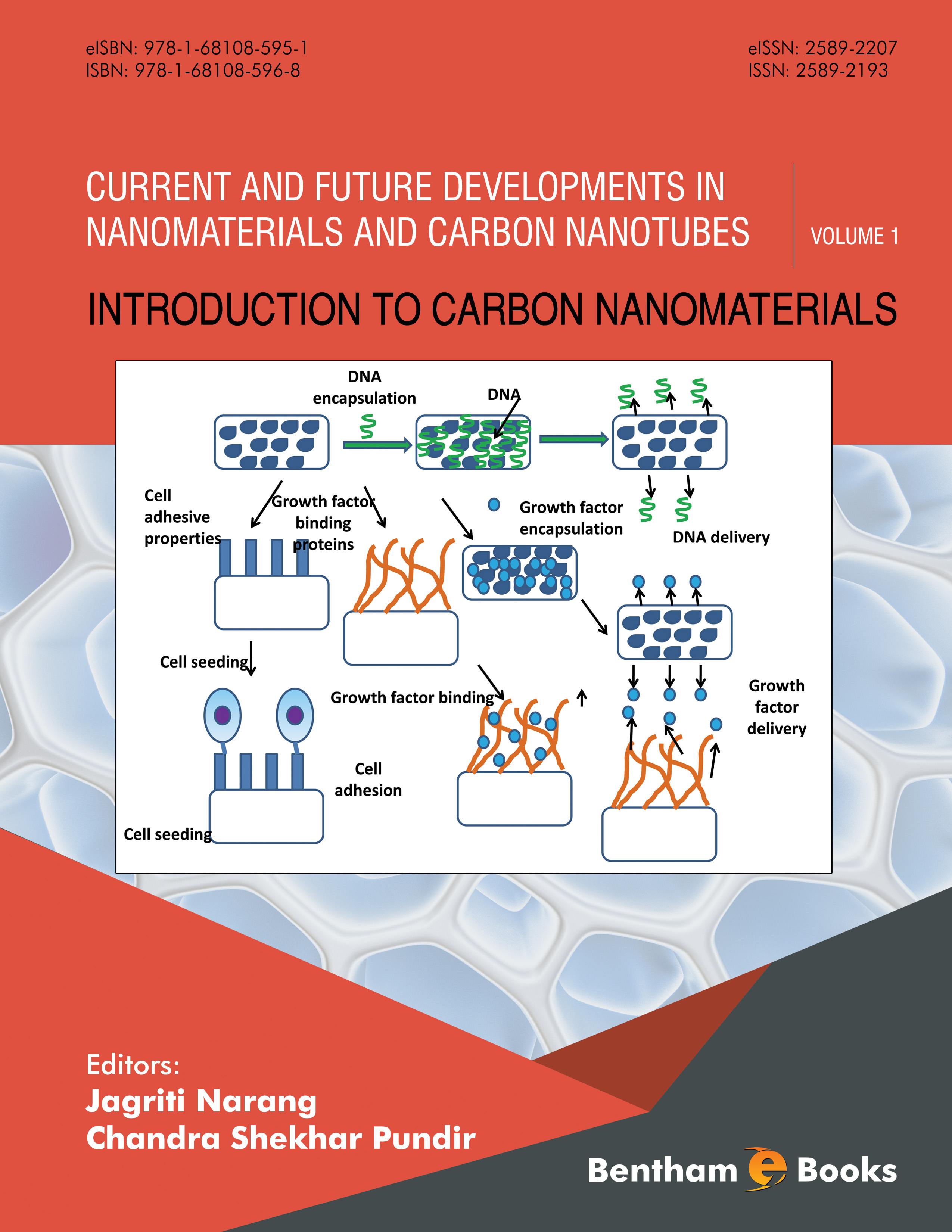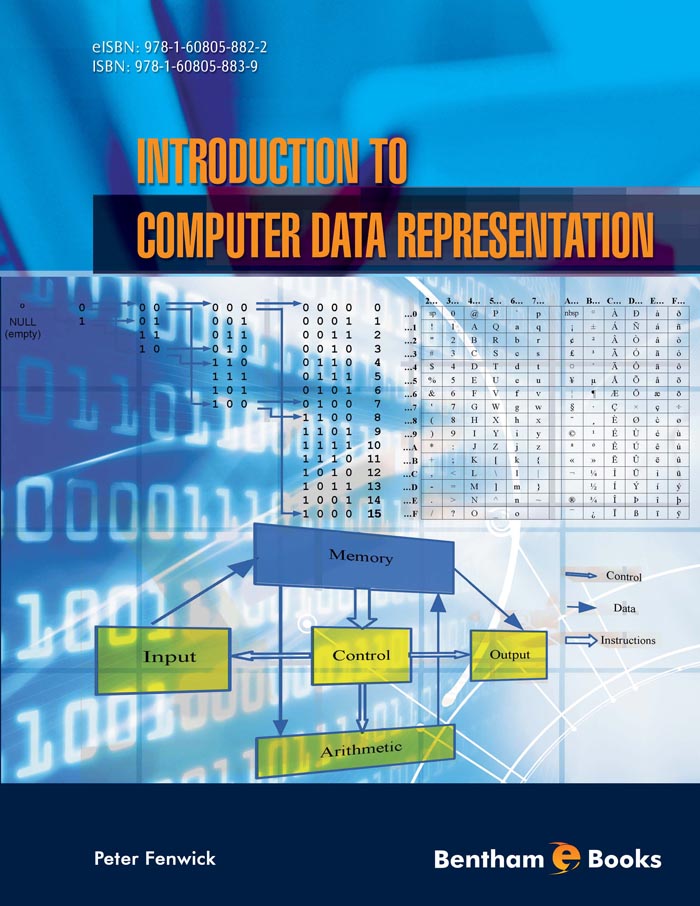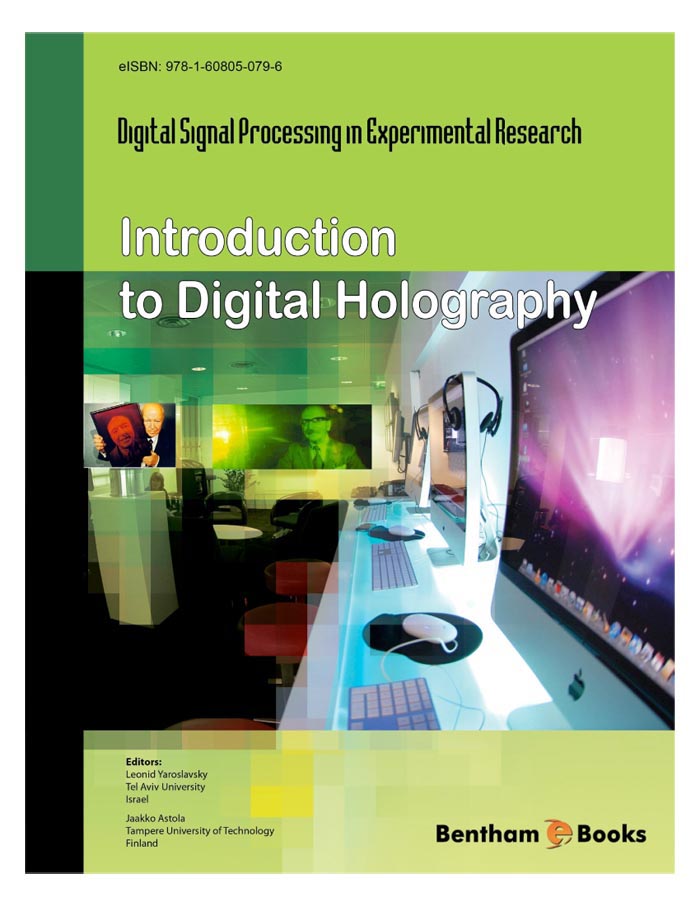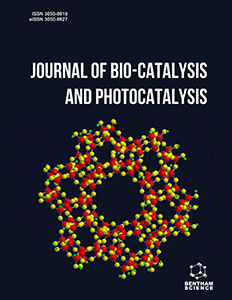Bentham Science Publishers
Bentham Science Publishers is a major publisher of more than 100 peer-reviewed science, technology and medical (STM) journals, along with a rapidly growing collection of eBooks. Since 1993, Bentham Science Publishers has been catering to the information needs of the pharmaceutical, engineering, biomedical and medical research community.1001 - 1100 of 1900 results
-
-
Human-Computer Interaction and Beyond: Advances Towards Smart and Interconnected Environments Part II
More LessHuman-Computer Interaction and Beyond: Advances Towards Smart and Interconnected Environments is a 2-part book set which presents discoveries, innovative ideas, concepts, practical solutions, and novel applications of Human-Computer Interaction (HCI) and related disciplines such as artificial intelligence, machine learning, data mining, computer vision, and natural language processing. The book provides readers with information about HCI trends which are shaping the future of smart, interconnected urban and industrial environments.
This is the second of the two volumes of the edited books. The chapters of this volume cover topics like ERP usability in educational settings, the role of AI in enhancing HCI functionality, usability of local mobile healthcare apps, analyzing the usage of social media apps and a review of HCI systems for disaster management and systems for tracking traffic safety violations. Contributions are authored by experts and scientists in the field of HCI and its interrelated disciplines from 9 different countries Albania, China, India, Indonesia, Nigeria, Pakistan, Spain, the United Kingdom, and the United States.
Human-Computer Interaction and Beyond: Advances Towards Smart and Interconnected Environments is an informative reference for scientists, researchers, and developers in both academia and industry who wish to learn, design, implement, and apply these emerging technologies in HCI in different sectors, with the goal of realizing futuristic technology-driven living and functional smart cities and environments.
-
-
-
Humanitarian Crises and International Relations 1959-2013
More LessHumanitarian Crises and International Relations (1959-2013) presents a brief study of the relations between sovereign nations from 1959 to the current Afghanistan crisis (post NATO intervention). Each chapter is going to analyze a specific crisis in a chronological order. The chapters demonstrate how humanitarian crises linked to civil and military conflicts have reshaped international relations in our world today.
This book is a key tool for students undertaking courses related to the history of international relations as well as human rights and on international migrations. The topics in this book are connected to different disciplines (Anthropology, History and Political Science) and attempt to trace the most important change in the history of international relations related to the world crisis viz civil or external conflicts.
-
-
-
Hydraulic Power Plants: A Textbook for Engineering Students
More LessHydraulic Power Plants is a textbook for engineering students which explains the construction of hydraulic power plants. The book presents the theory of the working process for each part, i.e. the kinematics and molecular dynamics of liquids flowing through hydraulic machines and systems. The information is presented in a simple manner necessary for understanding their operational conditions and basic numerical relationships. The chapters explain concepts with several drawings and charts to aid the reader, along with relevant specifications, working examples and solved problems, which can be applied in designing practice and maintenance of hydroelectric power plants, pumping stations and pump installations.
Hydraulic Power Plants emphasizes the need of young engineers to acquire knowledge about efficiency in using the tools for the study and design for components of hydraulic power plants such as turbines, pumps and penstocks in a straightforward format, making it an ideal reference for introductory hydraulics and mechanical engineering courses.
-
-
-
Hydrotalcite-based Materials: Synthesis, Characterization and Application
More LessHydrotalcite-based materials, characterized by their unique composition are integral to diverse applications in heterogeneous catalysis and beyond. Renowned for their catalytic prowess, these compounds serve as versatile bases for organic reactions, support structures for metal catalysts, and facilitators in organic transformations and water treatment. This comprehensive book introduces readers to hydrotalcite-like compounds, with ten chapters exploring variations in metal ion ratios and interlayer anions, and their impact on properties crucial for industrial applications (ranging from industrial catalysis to medicine).
Key Features
• Detailed exploration of hydrotalcite and hydrotalcite-like compounds
• Recent trends and applications in industrial catalysis, organic synthesis, and environmental remediation
• Hydrotalcite synthesis including methods like coprecipitation, sol-gel processing, and advanced techniques
• Contributions from leading researchers in the field with references
• Comprehensive overview for each topic suitable for both academics and industry professionals
With its exhaustive coverage of hydrotalcite-based materials and their multifaceted applications, this book promises to be an indispensable resource for anyone who wants to understand the utilization of hydrotalcites for advanced catalytic processes.
-
-
-
Hypercalcemia Pathophysiology & Treatment
More LessHypercalcemia is a relatively common disorder, which requires specific treatment in order to control symptoms and prevent the development of organ damage. Primary hyperparathyroidism and malignancy are responsible for most cases of hypercalcemia, and treatment has therefore been focused towards these two areas.
The aim of this book is to present updated knowledge on hypercalcemia, its association with renal disorders, and benign and malignant diseases, diagnostic methodologies, as well as surgical and medical treatment. Insights into the etiology, pathogenesis and pathophysiology of hypercalcemia are included along with details on biochemical findings and ways to monitor complications and therapy. Suggestions on current imaging techniques and surgical treatment of hypercalcemia, are also presented. The book presents an overview on the pharmacology of anti-hypercalcemic drugs, also providing information on new drugs and future perspectives.
The book will serve as a comprehensive reference source for oncologists, nephrologists, endocrinologists, clinicians, biochemists and pharmacologists, as well those involved in hypercalcemia management and research.
-
-
-
Hypersensitivity to Vitamins
More LessVitamins are heterogenous bioactive substances required by the human body for its healthy functioning. Vitamins are required through a diet as they are normally not produced by the body. Their deficiency may lead to the development of diseases like scurvy, rickets, pellagra, beri-beri and many others. Vitamins have also been produced synthetically and used in supplements. However, they may induce hypersensitivity reactions, ranging from an allergic contact dermatitis to, urticaria as well as life-threatening anaphylaxis.
Hypersensitivity to Vitamins summarizes knowledge from case reports, studies and investigations on hypersensitivity reactions to all types of vitamins (A, B, C, D, E and K). Chapters explain the identification, diagnosis and management of hypersensitivity reactions to vitamins.
Key Features:
- Provides a general introduction to vitamin allergies
- Covers the major vitamin types: water soluble (B and C) and fat soluble (A, D, E and K) with chapters dedicated to each type
- Provides information about identification, diagnosis and management of the specific hypersensitivity reactions in a clear and concise manner
- Includes a chapter on unusual aspects of vitamin hypersensitivity.
Hypersensitivity to Vitamins is an essential handbook for clinicians, nutritionists and pharmacists who want to quickly access information about vitamin allergies. Students of clinical immunology and pharmacology will also be able to learn about the subject.
-
-
-
Hypotheses and Dynamics in the Pathogenesis of Neurodegenerative Disorders
More LessThis book presents a series of clinical and pathologic observations that are thought to contribute to progressive incremental severity in neuronal cell loss and tissue atrophy in the cerebral cortex. The book includes a critical reappraisal of lesions in conditions such as Alzheimer's disease. Common disorders such as cardiovascular disease appear to be prime inducing agents in neurodegenerative diseases. These observations should help researchers to reevaluate the investigative approach towards diseases of the central nervous system. The style follows the current text adopted by morphologists in terms that allow for further investigation by research workers. The text represents an attempt to generate a refreshing viewpoint of end stage CNS disorders that follow a long pre-clinical pathogenic course implicating common generically related and interacting etiologic agents. This book is meant to be a useful guide for researchers and clinicians interested in the development and treatment of CNS disorders.
-
-
-
IInd International Conference "Open Science and Innovation in Ukraine 2023"
More LessOpen Science and Innovation in Ukraine is dedicated to contemporary scientific communication and the technological transformations driving open science policy principles. The conference explores the transformative journey of Ukraine's scientific community towards embracing open science principles amidst geopolitical challenges. It focuses on the implementation of the National Plan for Open Science and Ukraine's alignment with European standards, emphasizing the importance of collaboration, transparency, and accessibility in advancing scientific research and innovation.
This conference proceedings volume compiles presentations from the second event held online on October 26-27, 2023. It includes presentations and discussions of new ideas for integrating modern technological achievements into scientific practices, including the development of scientific information systems and databases. The volume concludes with insights into Ukraine's strides toward global scientific integration and the crucial role of open science principles in fostering collaboration and innovation.
Highlights:
- In-depth analysis of Ukraine's transition towards open science and its alignment with European standards.
- Practical solutions and best practices for data management, open-access publishing, and adherence to FAIR principles.
- Insights from leading experts in academia, industry, and government sectors.
- Emphasis on collaboration, transparency, and accessibility as catalysts for scientific progress and innovation.
- Highlights the challenges and opportunities associated with Ukraine's integration into the global scientific community.
This conference proceedings volume serves as a valuable resource for academics, professional scientists, and policymakers who want to understand the Open Access publishing landscape in Ukraine.
-
-
-
Illustrated Pediatric Dentistry - Part 1
More LessIllustrated Pediatric Dentistry is intended to be a guide to undergraduate and postgraduate students in their understanding of pediatric dentistry.
This textbook is modernized with the latest information and techniques in pediatric dentistry. The chapters cover primary pediatric dentistry, its clinical aspects, preventive dentistry, and information about the latest trends in the specialty. The text will equip readers with the knowledge suited to the changing environment of this vital domain. This textbook's editor has over forty-four years of teaching experience in pediatric dentistry and gives their broad perspective through the book content. This book is also the amalgamation of the thoughts of numerous subject experts of international repute.
Part 1 of this book features information about the developmental psychology of a child, dental caries, craniofacial growth and development, growth of the maxilla and mandible, dentition and occlusion, and oral mucosa.
Key Features:
- The 15, structured chapters keep the latest trends of the subject in mind
- The book content is illustrated with quality clinical images,
- Chapters cover contemporary concepts of problems experienced when treating multiple dental disorders
- The contributions exhibit distinct clinical expertise and the capability of imparting inimitable knowledge to budding professionals
- The book includes modern and current state-of-the-art techniques used in the clinic
- Topic outlines help to quickly review and easily locate content. Also, the Contents of the book are well structured and presented in a very lucid manner, making it easy to understand for students.
-
-
-
Illustrated Pediatric Dentistry - Part 2
More LessIllustrated Pediatric Dentistry is intended to be a text book for enhancing the knowledge and understanding of paediatric dentistry amongst undergraduate and postgraduate students. This textbook is updated with the latest information on techniques employed in paediatric dentistry. Chapters in this part cover primary paediatric dentistry, its clinical aspects, preventive dentistry, and information about the latest trends prevalent in this specialty field of dentistry. The text will equip readers with the knowledge suited to the changing environment of this vital domain. The editor of this textbook has over forty-four years of teaching experience in paediatric dentistry and is able to successfully impart a broad perspective of the subject through the book's contents. This textbook is the amalgamation of the experience and knowledge of various subject experts that command a high international reputation. Part 2 covers orofacial swelling, pediatric space management, interceptive orthodontics and myofunctional therapy, gingival and periodontal diseases, oral hygiene, minimum intervention dentistry (MID), molar incisor hypoplasia (MIH), restorative dentistry, and oral examination and diagnostic aids used in pediatric dentistry. Key Features: - The 15, structured chapters present the latest trends in paediatric dentistry - The book content is illustrated with quality clinical images, - Chapters cover contemporary concepts of problems experienced when treating multiple dental disorders in young patients - Contributions from subject experts present distinct clinical expertise and a unique style of imparting important current knowledge to budding professionals - The book includes modern and current state-of-the-art techniques used in the clinic - Topic outlines throughout the book will greatly help readers to quickly locate and review the content. Contents of the book are very well structured and presented in a lucid manner, making it easy to understand.
-
-
-
Illustrated Pediatric Dentistry - Part 3
More LessIllustrated Pediatric Dentistry is intended to be a guide to undergraduate and postgraduate students in their understanding of pediatric dentistry. This textbook is modernized with the latest information and techniques in pediatric dentistry. The chapters cover primary pediatric dentistry, its clinical aspects, preventive dentistry, and information about the latest trends in the specialty. The text will equip readers with the knowledge suited to the changing environment of this vital domain. This textbook's editor has over forty-four years of teaching experience in pediatric dentistry and gives their broad perspective through the book content. This book is also the amalgamation of the thoughts of numerous subject experts of international repute. Part 3 covers several topics relevant to practical dentistry such as, pediatric crowns, prosthetic management, pental pulp, pediatric endodontics, (including regenerative medicine and instruments), traumatic dental injuries, sports dentistry, Systemic Fluorides, (like SDF) and pit and fissure sealants. Special topics like fental caries vaccine and post-COVID dental practice round up this book. Key Features: - The 18, structured chapters keep the latest trends of the subject in mind - The book content is illustrated with quality clinical images, - Chapters cover contemporary concepts of problems experienced when treating multiple dental disorders - The contributions exhibit distinct clinical expertise and the capability of imparting inimitable knowledge to budding professionals - The book includes modern and current state-of-the-art techniques used in the clinic Topic outlines help to quickly review and easily locate content. Also, the Contents of the book are well structured and presented in a very lucid manner, making it easy to understand for students.
-
-
-
Illustrated Pediatric Dentistry - Part 4
More LessThis textbook presents the latest information and techniques in pediatric dentistry. The chapters cover primary pediatric dentistry, its clinical aspects, preventive dentistry, and information about the latest trends in the specialty. The text will equip readers with the knowledge suited to the changing environment of this vital domain. This textbook's editor has over forty-four years of teaching experience in pediatric dentistry and gives a broad perspective through the book content. This book is also an amalgamation of the knowledge brought forth by numerous subject experts of international repute. Part 4 covers specialized topics for clinical practice that professionals need to understand. The book covers drugs in pediatric dentistry, anesthesia, dental surgery, implants and lasers. Special topics like the management of special needs children and HIV/AIDs patients, new advances and genetics are also covered in this part. Key Features: - The 16, structured chapters keep the latest trends of the subject in mind - The book content is illustrated with quality clinical images - Chapters cover contemporary concepts of problems experienced when treating multiple dental disorders - The contributions exhibit distinct clinical expertise and the capability of imparting inimitable knowledge to budding professionals - The book includes state-of-the-art techniques used in the clinic Topic outlines help to quickly review and easily locate content. Also, the Contents of the book are well structured and presented in a very lucid manner, making it easy to understand for students.
-
-
-
Image Processing for Embedded Devices
More LessEmbedded imaging devices such as digital still and video cameras, mobile phones, personal digital assistants, and visual sensors for surveillance and automotive applications make use of the single-sensor technology approach. An electronic sensor (Charge Coupled Device/Complementary Metal-Oxide-Semiconductor) is used to acquire the spatial variations in light intensity and then use image processing algorithms to reconstruct a color picture from the data provided by the sensor. This book is devoted to cover algorithms and methods for the processing of digital images acquired by single-sensor imaging devices. Typical imaging pipelines implemented in single-sensor cameras are usually designed to find a trade-off between sub-optimal solutions (devoted to solve imaging acquisition) and technological problems (e.g., color balancing, thermal noise, etc.) in the context of limited hardware resources. The various chapters of this book cover all aspects of algorithms and methods for the processing of digital images acquired by imaging consumer devices; this includes all processing stages. The e-book is intended as a detailed resource for visual and imaging systems engineers.
-
-
-
Image Processing in Renewable Energy Resources: Opportunities and Challenges
More LessThis book is a compilation of innovative work on image processing applications for renewable energy systems. The chapters in the book describe the use of neural networks in multi-direction dynamic, topographical data frameworks which are designed to account for the distinctive contemporary issues faced when managing environmentally friendly power generation systems.
The topics covered include uncertainty analysis methods, computing technologies, automated control systems, performance analysis, riverfront analysis through image processing and solar power estimation methods, to name a few. The information is also complemented with a review of problems in the electric power sector in India.
This book is beneficial for professionals and researchers who work on hybrid techniques of GIS, remote sensing, image processing and the implementation of these techniques for utilizing renewable energy resources. Engineers who work on advanced algorithms for renewable energy applications will also get an updated perspective about relevant innovations in this industrial sector.
-
-
-
Immunity to Helminths and Novel Therapeutic Approaches
Immune Response to Parasitic Infections: Volume 2
More LessThis volume covers research on the interaction of major helminth parasites with the immune system. The main focus of the e-book is the ability of helminths to subvert host immune responses, on the one hand. On the other hand, the immunological armamentarium of the host against invading parasites is described also in the light of new findings on innate and adaptive immunity. These include the discovery of a new category of lymphocytes, innate lymphoid cells, and the role of T helper cels such as Th1, Th2 and Th3 cells, T regulatory (Treg) and Th17 cells in helminth diseases and inflammation. The balance between these two T cell subsets during the various stages of helminth diseases is also discussed. The book concludes with a review of new therapeutic approaches to combat helminth parasites (biotherapy, vaccines and natural products).
Immunity to Helminths and Novel Therapeutic Approaches provides updated information for medical students, clinicians and researchers in the fields of parasitology, applied immunology and novel drug delivery.
-
-
-
Immunology of Pregnancy 2013
More LessSince a September, 1992, Nature article which read: “Can there be life without LIF?”, researchers now realize that the maternal immune system is both a foe (it can reject the conception) and a friend (immune cells and molecules are also necessary for successful pregnancy). Leukemia Inhibitory Factor (LIF) when absent, prevents embryo implantation in rodents. From fecundation to parturition, immunity acts as a Janus, required but potentially dangerous. However, the complexity and the diversity of immunity in pregnancy deters many from entering the field. This book will try to give a complete overview of immunity from gametes till parturition, in brief, but with complete chapters and subsections, each written by specialists in the field.
The importance of the topic relies not only on “the riddle of the fetal allograft”, which is per se fascinating, but on its consequences, linked to the development of IVF and in general, Assisted Reproductive Technologies (ART) / Medicine. Since the discovery that there would not be (mammalian) life without LIF, it has become clear that Immune Molecules, and in general, transient post mating inflammatory reactions are required for successful implantation. Disruptions of this process can lead to implantation failure / sterility.
In later stages of pregnancy immunological cells, mostly of the innate immune system, control formation of local spiral arteries. Finally, a state of tolerance establishes itself, whose “break' leads to immune abortion and the vascular bed is further transformed and enlarged, till delivery, and here again “immunological cytokines” do play a major role and can eventually cause immune mediated abortion.
Failure of, not just, the cytokine and cell recognition mediated dialogue, but also the pre and peri-implantation “preparation of the uterus”, as stated, leads to sterility, early pregnancy loss and recurrent abortions. There is also an increasingly stronger argument to implicate immunology in pre-eclampsia. Further still, immunology is also implicated in the control of local infection, mother to child transmission of pathogens (notably, but not limited to, HIV). Finally, pregnancy is the only known physiological phenomenon where the once named “suppressor T cells,” re-emerge as “regulatory T cells”, and play a cardinal role.
This E-book provides a complete compendium of gynecological immunology, spanning from fecundation to delivery. Topics also include the role of various cell types (such as T regs ad NK cells) in implantation and uterine changes as well as the genetic regulation of immunological processes. As such it will be of interest not only to fundamental and reproductive immunologists, but more importantly, clinicians in obstetrics and gynecology.
-
-
-
Immunology, Endocrine & Metabolic Agents in Medicinal Chemistry (Discontinued)
More LessImmunology, Endocrine & Metabolic Agents in Medicinal Chemistry aims to cover all the latest and outstanding developments in the medicinal chemistry and rational drug design for the discovery of new Immunology, Endocrine & Metabolic Agents. Each issue contains a series of timely in-depth reviews written by leaders in the field covering a range of current topics in Immunology, Endocrine & Metabolic medicinal chemistry.
Immunology, Endocrine & Metabolic Agents in Medicinal Chemistry is an essential journal for every medicinal chemist who wishes to be kept informed and up-to-date with the latest and most important developments in Immunology, Endocrine & Metabolic drug discovery.
-
-
-
Improved Indirect Power Control (IDPC) of Wind Energy Conversion Systems (WECS)
More LessWind power capacity in the world has been increased by more than 30% over the last decade in countries which have prominent installations. Wind energy conversion systems (WECSs) based on the doubly-fed induction generator (DFIG) have dominated the wind power generation sector due to the outstanding advantages they provide, including small converter ratings (around 30% of the generator rating) and lower converter costs.
Due to the non-linearity of wind power systems, the DFIG power control setup presents a big challenge especially under conditions of high variance in wind-speed and parameter sensing. To overcome these major problems, an improved IDPC (Indirect Power Control) system based on PID (Proportional-Integral-Derivative) controller, has been proposed instead of the conventional power inverters.
This handbook covers information about IDPC based WECS. The book starts with a general introduction to wind power system basics. Subsequent chapters provide additional knowledge about robustness tests and adaptive / intelligent control systems employed in wind energy systems. The new concept of direct and quadrature current control (Ird & Irq) under MPPT (Maximum Power Point Tracking) strategy is also explained along with novel fuzzy logic type control systems. The authors have included detailed diagrams and an appendix of WECS parameters, making this handbook a useful primer for engineering students working towards completing licenses, Masters degrees and Post-graduation programs in advanced wind power energy systems.
-
-
-
In Memory of Ethics: A Dissection of Ethical and Social Issues in Pakistani Professional Healthcare Practice
More LessIn Memory of Ethics: A Dissection of Ethical and Social Issues in Pakistani Professional Healthcare Practice explores the ethical challenges faced within the healthcare sector with a focus on Pakistan. From workplace behaviors to medical procedures, COVID-19 era dilemmas, and broader social health concerns, the book explores the intricate intersection of ethics and healthcare in the region.
The book is divided into five sections. Section I covers topics such as workplace behaviors and ethical conducts while section II covers medical procedures, and patient-doctor relationships. Section III addresses the unique ethical challenges brought forth by the COVID-19 pandemic, including guidelines for therapists and the ethics of mandatory vaccinations. Section IV examines the impact of social media on healthcare, gender discrimination, and the ethical considerations surrounding prisoner rehabilitation. The final section offers insightful essays on ethical and social Issues, covering topics like body shaming, free healthcare, and patient privacy. The editors also explore controversial topics, including euthanasia, abortion, and assisted reproductive technology.
The key feature of this book is that it provides a comprehensive coverage of diverse ethical dilemmas in healthcare. Furthermore, it is an attempt to give a subjective understanding of healthcare ethics through thought-provoking essays shedding light on contemporary ethical issues in a Pakistani context. The contributors have incorporated real-world examples and case studies to illustrate ethical principles in action.
In Memory of Ethics: A Dissection of Ethical and Social Issues in Pakistani Professional Healthcare Practice book is essential reading for anyone interested in understanding complex ethical and social issues and promoting integrity in healthcare practices.
-
-
-
In Silico Lead Discovery
More LessComputer-aided drug design and in silico screening have contributed to the discovery of several compounds that have either reached the market or entered clinical trials. In silico Lead Discovery is a compilation of the efforts of several experts on bioinformatics and drug design in developing the latest advances of in silico approaches for lead discovery. It contains an overview of structure-based, ligand-based methods and current fragment-based methods as well as examples for successful applications of such methods in discovering new hit/lead molecules for important therapeutic targets. Treatment of receptor flexibility - which is one of the most important challenges for in silico screening today – has also been highlighted in the eBook. Biomedical scientists, biologists and chemists can find valuable information here that could help them to initiate or to complete chemical biology projects with the goal of designing new hit-to-lead molecules or chemical probes for chemogenomics projects.
-
-
-
In Vitro Propagation and Secondary Metabolite Production from Medicinal Plants: Current Trends (Part 1)
More LessThis book is a comprehensive review of secondary metabolite production from plant tissue culture. The editors have compiled 12 meticulously organized chapters that provide the relevant theoretical and practical frameworks in this subject using empirical research findings. The goal of the book is to explain the rationale behind in vitro production of secondary metabolites from some important medicinal plants. Biotechnological strategies like metabolic engineering and the biosynthesis, transport and modulation of important secondary metabolites are explained along with research studies on specific plants. In addition to the benefits of secondary metabolites, the book also aims to highlight the commercial value of medicinal plants for pharmaceutical and healthcare ventures. Topics covered in this part include: 1. Elicitation Strategies and Metabolic Engineering to boost metabolite production with case studies in metabolic engineering with examples of Scaevola Taccada and Catharanthus Roseus. 2. Stress response investigation and the role of glandular trichomes as bio-cell factories 3. Plant growth regulators and rapid regeneration techniques using swift plantlets regeneration and phytochemical characterization 4. Nutraceuticals, antimicrobials, and genomic applications of in vitro cultures with an example of Hassawi rice and its genomics 5. Sustainable approaches for saving endangered medicinal plants The book caters to a wide readership. It primarily prepares graduate students, researchers, biotechnologists, giving them a grasp of the key methodologies in the secondary metabolite production. It is a secondary reference for support executives, industry professionals, and policymakers at corporate and government levels to understand the importance of plant tissue culture and maximizing its impact in the herbal industry.
-
-
-
In Vitro Propagation and Secondary Metabolite Production from Medicinal Plants: Current Trends (Part 2)
More LessThis book is a comprehensive review of secondary metabolite production from plant tissue culture. The editors have compiled 12 meticulously organized chapters that provide the relevant theoretical and practical frameworks in this subject using empirical research findings. The goal of the book is to explain the rationale behind in vitro production of secondary metabolites from some important medicinal plants. Biotechnological strategies like metabolic engineering and the biosynthesis, transport and modulation of important secondary metabolites are explained along with research studies on specific plants. In addition to the benefits of secondary metabolites, the book also aims to highlight the commercial value of medicinal plants for pharmaceutical and healthcare ventures.
Topics covered in this part include:
1. In vitro propagation and tissue culture for several plants including Withania somnifera (L.) Dunal, Aloe vera, Oroxylum indicum (L) Kurz, Ocimum basilicum L, Rhubarb, Tea, and many others (including plants in Northern India).
2. Genetic Improvement of Pelargonium
3. Bioactive Components in Senna alata L. Roxb
4. Plant tissue culture techniques
The book caters to a wide readership. It primarily prepares graduate students, researchers, biotechnologists, giving them a grasp of the key methodologies in the secondary metabolite production. It is a secondary reference for support executives, industry professionals, and policymakers at corporate and government levels to understand the importance of plant tissue culture and maximizing its impact in the herbal industry.
-
-
-
In the Shadow of Neoliberalism: Thirty Years of Educational Reform in North America
Educating the Global Citizen: Volume 1
More LessGlobalization has emerged as one of the key social, political and economic forces of the twenty-first century, challenging national borders, long established institutions of governance and cultural norms and behaviors around the world. Yet how has it affected education? The series explores the complex and multivariate ways in which changing global paradigms have influenced education, democracy and citizenship from Latin America, Europe and Africa to Asia, the Middle East and North America. It seeks to unearth how these changes have manifest themselves in daily classroom experiences for teachers and administrators the world over and how recent events might influence future change.
-
-
-
In-Silico and In-Vitro Approaches to Screen the Antituberculosis Activity of Benzothiazole Analogs
More LessThis monograph presents information about the history and evolution of tuberculosis treatment, and the potential of the benzothiazole moiety for anti-tuberculosis (anti-TB) activity. The book introduces the reader to basic information about benzothiazole as a drug candidate before delving into the anti-tubercular properties of derivative compounds in subsequent chapters. The contributors explain quantitative structural-activity relationships of benzothiazole with anti-TB activity along with the importance of in-silico (computer aided) techniques in the drug design process. This is followed by a chapter which details Mycobacterium tuberculosis biology, strains as well as symptoms of tuberculosis infections. The book then explains in-vitro and in-vivo methods used to evaluate drug efficacy against tuberculosis along with the synthesis and anti-TB activity of the benzothiazole derivatives (benzothiazole diamide, benzothiazole guanidinyl derivatives and benzothiazole conjugated pyrazole derivatives).
This book, therefore, is a quick reference on TB diseases, methods of in-silico and in-vitro screening of anti-TB drugs and the importance of the benzothiazole in TB treatment regimens. The book is suitable for readers, researchers and post graduate students who are interested in general tuberculosis drug design, screening and discovery, as well as the application of benzothiazole as an anti-TB drug.
-
-
-
Indicator Displacement Assays (IDAs): An Innovative Molecular Sensing Approach
More LessThis book explores a revolutionary sensing technique called Indicator Displacement Assays (IDAs). It is designed to provide readers with a comprehensive understanding of the conceptual foundation and wide-ranging applications of IDAs. The book aims to fulfill a crucial gap in the existing references on the subject.
The content starts by explaining fundamental concepts, design strategies, and the scope of IDAs. Subsequent chapters elaborate on the intricate molecular recognition of various analytes, offering insights into sensing mechanisms for cationic, anionic, and neutral molecules. The design and construction of colorimetric, fluorescence, and metal complexing IDAs are also thoroughly explored in later chapters, followed by recent extensions of IDAs, including enantioselective indicator displacement assays, intramolecular indicator displacement assays, reaction-based indicator displacement assays, and more. Innovative applications of IDAs, such as sensory arrays and electrochemical sensors, are also discussed in detail, providing a comprehensive understanding of their conceptual foundations and practical implementations.
The book is a primer on IDAs for researchers who want to understand the fundamentals of the technique, as well as postgraduate students aiming to specialize in supramolecular and analytical chemistry.
-
-
-
Indopathy for Neuroprotection: Recent Advances
More LessDegenerative nerve diseases are age-related, progressive and cause irreversible neurological loss that may lead to death. Chronic diseases like amyotrophic lateral sclerosis, Huntington's disease, Alzheimer's disease, and Parkinson's disease are associated with insoluble protein depositions and pose serious health challenges that may intensify in the coming decades. Current therapies only help to alleviate some of the physical or mental symptoms associated with neurodegenerative diseases, although there is currently no remedy for slow disease progression. In recent years, attempts have been made to discover a mechanism for neurodegenerative diseases and prospective treatment that may help mitigate aging effects and prevent these diseases. Natural products have been a constant source of new approaches for the treatment of neurodegenerative diseases, in particular plant alkaloids and polyphenolic compounds.
Indopathy for Neuroprotection: Recent Advances highlights herbal treatments that are preferred over conventional treatments in some regions. Book chapters focus on the effects of various medicinal plants that have shown promise in reversing pathological symptoms of neurodegenerative disease and highlight the neuroprotective role of medicinal herbal phytochemicals and their mechanism of action. The book serves as a reference for pharmacology and herbal medicine scholars as well as healthcare workers interested in information about alternative and complementary therapies for neurological disorders.
-
-
-
Induction Motor Computer Models in Three-Phase Stator Reference Frames: A Technical Handbook
More LessThis book is a compilation of knowledge about computer models in the three-phase stator reference frame. Chapters explore several aspects of the topic and build upon research previously presented by contributors. The book aims to provide interesting solutions to problems encountered in the design of railway and analysis in railway motors. The modeling approaches proposed by the authors in this book may become an incentive for readers and researchers to develop their lifehacks to solve new problems in induction motor design and testing.
Key topics presented in the book:
- Approximate calculations of induction motor equivalent T-shaped circuit parameters with the use of catalogue data
- Simulations of different types of shaft load, including fluid coupling
- Receiving static characteristics of an electric machine during simulation by means of dynamic model
- Simulation of the electric drives specific applications with three-phase induction motors building
- Direct start of an induction motor as part of an auxiliary drive of an AC electric locomotive, containing a capacitor phase splitter, starting with different types of shaft loads (fan or compressor).
Special attention has been given to the description of the thermal model of an induction motor with a squirrel-cage rotor, which makes it possible to simulate operating modes when powered by an unbalanced voltage, as well as with squirrel cage defects. The thermal model is presented as a detailed superstructure to the model of electromechanical processes of an induction electric machine.
Other key features of the book include references for further reading, an appendix for the parameters of the equivalent thermal circuit of an NVA-55 induction motor.
The material presented in the book is of interest to railway motor engineers, specialists in electromechanics and electric drives who use SPICE-compatible CAD applications in their work.
-
-
-
Industrial Applications of Laser Remote Sensing
More LessThis e-book is an essential review of land-based laser sensing methods, such as differential absorption, Raman scattering, laser-induced fluorescence, Doppler effect methods, laser-induced breakdown spectroscopy, and laser ultrasonics, and their respective application to specific industrial needs, such as natural gas leak detection, hydrogen gas leak detection, pollutant detection, wind profiling for windmill sites, minor constituent monitoring and concrete structure health monitoring. Readers will gain an updated overview of laser remote sensing techniques and their applications to the industrial environment.
-
-
-
Industrial Applications of Polymer Composites
Frontiers in Polymer Science: Volume 1
More LessThis volume is a comprehensive guide to the industrial use of polymer composites. Edited contributions demonstrate the application of these materials for different industrial sectors. The book covers the benefits, future potential, and manufacturing techniques of different types of polymers. Contributors also address challenges in using nanopolymers in these industries. Readers will find valuable insights into the current demand and supply of polymer composites and future scope for research and development in this field of polymer science. The volume presents seven chapters, each exploring a different application of polymer composites. Chapter 1 discusses the use of polymer additives for improving classical concrete and the workability and durability of polymer composite concrete. Chapter 2 explores the use of polymer nanocomposites in packaging, including smart/intelligent packaging, modified atmosphere packaging, and vacuum packaging. Chapter 3 delves into the use of polymer composites in tissue engineering, including manufacturing techniques and various applications. Chapter 4 explores energy storage applications for polymer composites, while Chapter 5 discusses their use in microbial fuel cells. Chapter 6 explores the use of carbon nanotubes in polymer composite gas sensors. Finally, Chapter 7 discusses the use of polymer composites in automotive applications. This is an ideal reference for researchers, scientists, engineers, and professionals in the fields of materials science, polymer science, engineering, and nanotechnology. The content is also suitable for graduate and postgraduate students studying industrial manufacturing.
-
-
-
Industrial Applications of Soil Microbes: Volume 2
More LessThis volume is a compilation of reviews on the industrial usage of soil microorganisms. The contents include 16 brief reviews on different soil microbe assisted industrial processes. Readers will be updated about recent applications of soil bacteria, fungi and algae in sectors such as agriculture, biotechnology, environmental management.
The reviews also cover special topics like sustainable agriculture, biodiversity, ecology, and intellectual property rights of patented strains, giving a broad perspective on industrial applications of soil microbes.
Volume 2 includes reviews on destructive microbes like Macrophomina Phaseolina, eco-friendly microbes like Beauveria Bassiana, the identification of fungi in the rhizosphere, the industrial application of Trichoderma, and other topics. The text is easy to understand for readers of all levels, with references provided for the benefit of advanced readers.
-
-
-
Industrial Applications of Soil Microbes: Volume 1
More LessThis volume is a compilation of reviews on the industrial usage of soil microorganisms. The contents include 15 brief reviews on different soil microbe assisted industrial processes. Readers will be updated about recent applications of soil bacteria, fungi and algae in sectors such as agriculture, biotechnology, environmental management.
The reviews also cover special topics like sustainable agriculture, biodiversity, ecology, and intellectual property rights of patented strains, giving a broad perspective on industrial applications of soil microbes. The text is easy to understand for readers of all levels, with references provided for the benefit of advanced readers.
-
-
-
Industrial Applications of Soil Microbes: Volume 3
More LessThis volume is a compilation of reviews on the industrial usage of soil microorganisms. The contents include 16 brief reviews on different soil microbe assisted industrial processes. Readers will be updated about recent applications of soil bacteria, fungi and algae in sectors such as agriculture, biotechnology, environmental management.
The reviews also cover special topics like sustainable agriculture, biodiversity, ecology, and intellectual property rights of patented strains, giving a broad perspective on industrial applications of soil microbes.
Volume 3 emphasizes various soil microorganisms including cyanobacteria and mycorrhiza. The 16 chapters cover the ecological significance of mycorrhiza to and their role in sustainable agriculture, microbial interactions with nematodes, microbes as biocontrol agents, and the use of endophytes in agriculture, Chapters also shed light on industrial aspects and microbial biotransformation, providing a comprehensive view of sustainable agricultural practices. Special topics such as the microbial carotenoids are also included.
-
-
-
Industrial Applications of Soil Microbes: Volume 4
More LessIndustrial Applications of Soil Microbes is a compilation of reviews on the industrial usage of soil microorganisms. Readers will be updated about recent applications of soil bacteria, fungi and viruses in sectors such as agriculture, biotechnology, environmental management.
Volume 4 includes review on mycorrhizal fungi, endophytes and a range of microbial chemicals and processes beneficuall at industrial scale. The 19 chapters start with an overview of mycorrhizae as biofertilizers, their symbiosis with plants, and their applications in improving crop yield, stress management, and soil health. Case studies on Lycopersicon esculentum highlight practical benefits. Soil microbes, endophytes, and microbial proteases are discussed for their role in biocontrol, disease management, and crop improvement. The volume also explores eco-friendly nematicides, viruses in temperate fruit crops, mushrooms' nutritional value, and metagenomics for bioinoculants. Overall, the volume emphasizes sustainable practices and future prospects involving microbes and microbe-assisted processes.
-
-
-
Industrial Internet of Things: An Introduction
More LessIndustrial Internet of Things: An Introduction explores the convergence of IoT and machine learning technologies in transforming industries and advancing economic growth. This comprehensive guide examines foundational principles, innovative applications, and real-world case studies that showcase the power of IoT-enabled intelligent systems in enhancing efficiency, sustainability, and adaptability.
The book is structured into five parts. The first part introduces industrial IoT concepts, including algorithms, deep learning prediction models, and smart production techniques. The second section addresses machine learning and collaborative technologies, focusing on artificial neural networks, and AI`s role in healthcare and industrial IoT. Subsequent chapters explore real-world applications, such as IoT adoption in healthcare during COVID-19 and intelligent transportation systems. The final sections address advanced IIoT progressions and the role of IoT in energy production using byproducts.
Key Features:
- Foundational concepts and algorithms for industrial IoT.
- Integration of machine learning in IoT systems.
- Case studies on healthcare, transportation, and sustainability.
- Insights into energy production using IoT.
-
-
-
Industry 4.0 Convergence with AI, IoT, Big Data and Cloud Computing: Fundamentals, Challenges and Applications
IoT and Big Data Analytics: Volume 4
More LessThis volume showcases upcoming trends and applications that are set to redefine our technological landscape. Chapters comprise referenced reviews focused on the recent research that introduces new methods and techniques for using AI in Industry 4.0, and the integration of Internet of Things (IoT) to drive new industrial processes. The contributors have discussed challenges in industry 4.0 along with the applications and the way it is shaping different industries.
Key themes:
AI in Communication Media: Uncover the latest research, with insights into the challenges and adoption of AI in remote processes.
New AI Techniques for Industry 4.0: Learn about technologies such as blockchains and applications of machine learning, deep learning, and image processing.
IoT and AI for Smart Systems: Understand IoT with a special focus on enhancing smart systems, in different industries, including agriculture and transaction processing
Explorable AI: Gain a quick understanding of Explainable AI (XAI) and its role in improving the predictability and transparency of IoT applications.
Whether you're a tech enthusiast, researcher, or industry professional, this book offers a glimpse into the innovative world of Industry 4.0 and its intersection with AI, IoT, big data, and cloud computing.
-
-
-
Industry 5.0 for Society 5.0: Advancing Medical IoT and Smart Healthcare (Part 1)
More LessThis timely and comprehensive volume explores the evolving concept of Society 5.0 a forward-looking, human-centered society where cutting-edge technologies such as the Internet of Things (IoT), Artificial Intelligence (AI), robotics, and augmented reality seamlessly integrate into daily life, healthcare, industry, and public services to enhance quality of life and social well-being. Industry 5.0, as a vital enabler of this vision, emphasizes collaborative interactions between humans and smart systems, driving innovations in personalized healthcare, sustainable industries, and connected communities.
This first part of a multi-volume set provides readers with foundational insights into the principles, enabling technologies, and strategic opportunities shaping Industry 5.0 and Society 5.0. Edited contributions from subject matter experts offer a roadmap for harnessing Medical IoT (Internet of Medical Things) applications within this new societal framework. The book covers essential topics such as high-performance computing in healthcare decision support, AI-driven diagnostic solutions, cybersecurity in digital health systems, and ethical data practices in patient care. It also highlights emerging use cases, including IoT-enabled wearable devices for women's security and smart diagnostic tools for early disease detection.
Key features:
Presents a detailed overview of Industry 5.0 and Society 5.0, their fundamentals, enabling technologies, and future prospects.
Examines the role of Industry 5.0 in transforming medical and healthcare services through the integration of IoT and AI-driven solutions.
Explores innovative applications such as AI-based diabetic retinopathy detection, IoT applications in digital healthcare, and patient-centric data ethics frameworks.
Discusses advances in smart farming and sustainable industrial practices within the Industry 5.0 paradigm.
Highlights opportunities for bridging research gaps in high-performance computing for holistic healthcare decision support.
Provides use case studies on IoT-enabled healthcare security solutions and digital health systems.
-
-
-
Industry 5.0 for Society 5.0: Revolutionizing Smart Farming, Manufacturing, and Green Computing (Part 2)
More LessThis second installment in a two part series delves deeper into practical applications and domain-specific implementations of industry 5.0 principles, particularly in smart agriculture, next-generation manufacturing, and green computing.
Through a multidisciplinary lens, the book examines the fusion of intelligent systems, medical IoT, and sustainable practices that contribute to societal well-being. Structured across three major themessmart farming, current-era manufacturing, and green computingthe chapters provide in-depth analyses of enabling technologies, evolving methodologies, and real-world case studies. The narrative emphasizes co-evolution of industrial and social needs, encouraging readers to explore the transformative potential of AI, IoT, and Industry 5.0 innovations.
Key Features
Analyzes AI-driven innovations in agriculture and sustainable food systems
Explores medical IoT, intelligent diagnostics, and healthcare transformation
Gives an understanding of Industry 5.0's impact on predictive maintenance and smart factories
Applies green computing and deep learning for sustainable development
Bridges theory and practice through real-world use cases and emerging solutions
-
-
-
Infectious Diseases
Herbal Medicine: Back to the Future: Volume 5
More LessHerbal Medicine: Back to the Future compiles expert reviews on the application of herbal medicines (including Ayurveda, Chinese traditional medicines and alternative therapies) to treat different ailments. The book series demonstrates the use of sophisticated methods to understand traditional medicine, while providing readers a glimpse into the future of herbal medicine.
Volume 5 continues the theme of the previous volume by featuring reviews of plant based therapies useful for treating different infectious diseases. Topics in this volume are of general interest to computational chemistry researchers, physicians and a broad range of allied healthcare practitioners. Other highlights of this volume include contributions about COVID-19, and traditional medicine in Algeria and China. The topics included in this volume are:
- Improving curcumin and eugenol through computational chemistry and nanotechnology
- Herbal remedies for respiratory tract infections
- COVID-19 pandemic: a comprehensive overview of epidemiological, pathogenesis, diagnostic aspects and therapeutic interventions to tackle current outbreak
- Application of mid-infrared spectroscopy on therapeutic effects of herbal medicine in infectious diseases
- Traditional herbal uses from Algerian pharmacopoeia against infectious diseases
- Traditional Chinese medicine for treating infectious diseases: history, progress, and perspectives
This volume is essential reading for all researchers in the field of natural product chemistry and pharmacology. Medical professionals involved in internal medicine who seek to improve their knowledge about herbal medicine and alternative therapies for tropical and other infectious diseases will also benefit from the contents of the volume.
-
-
-
Infectious Diseases
Herbal Medicine: Back to the Future: Volume 4
More LessHerbal Medicine: Back to the Future compiles expert reviews on the application of herbal medicines (including Ayurveda, Chinese traditional medicines and alternative therapies) to treat different ailments. The book series demonstrates the use of sophisticated methods to understand traditional medicine, while providing readers a glimpse into the future of herbal medicine.
This volume presents reviews of plant based therapies useful for treating different infectious diseases. The list of topics includes some niche reviews in this area including a review of the neem plant, the historical use of herbs in infectious disease therapy in Russia, and natural remedies from garlic, among other topics., The topics included in this volume are:
- Improving anti-microbial activity of allicin and carvacrol through stabilized analogs and nanotechnology
- Plant phenolics as an alternative source of antimicrobial compounds
- Herbal medicine in Russia’s history: the use of herbal medicine for infectious diseases in Russia’s history
- Azadirachta indica (neem) in various infectious diseases
- Contribution of novel delivery systems in the development of phytotherapeutics
This volume is essential reading for all researchers in the field of natural product chemistry and pharmacology. Medical professionals involved in internal medicine who seek to improve their knowledge about herbal medicine and alternative therapies for tropical and other infectious diseases will also benefit from the contents of the volume.
-
-
-
Infectious Diseases
Herbal Medicine: Back to the Future: Volume 6
More LessHerbal Medicine: Back to the Future compiles expert reviews on the application of herbal medicines (including Ayurveda, Chinese traditional medicines and alternative therapies) to treat different ailments. The book series demonstrates the use of sophisticated methods to understand traditional medicine, while providing readers a glimpse into the future of herbal medicine.
This volume presents reviews of plant based therapies useful for treating different infectious diseases. The reviews highlight different sources of antiviral, antibacterial and antifungal herbs. The volume concludes with a review on the therapeutic potential of herbs for treating rheumatoid arthritis. The chapters included in this volume are as follows:
- Brazilian Siparuna species as a Source of antiviral agents
- Antimicrobial and antifungal potential of Indian spices
- Role of herbal medicines in the treatment of infectious diseases
- Herbal medicine: traditional approach to treat infectious diseases
- Exploring the therapeutic potential of medicinal plants for rheumatoid arthritis
This volume is essential reading for all researchers in the field of natural product chemistry and pharmacology. Medical professionals involved in internal medicine who seek to improve their knowledge about herbal medicine and alternative therapies for tropical and other infectious diseases will also benefit from the contents of the volume.
-
-
-
Infectious Disorders - Drug Targets
More LessInfectious Disorders - Drug Targets aims to cover all the latest and outstanding developments in medicinal chemistry, pharmacology, molecular biology, genomics and biochemistry of contemporary molecular targets involved in infectious disorders, e.g. disease disease-specific proteins, receptors, enzymes and genes. Each issue of the journal contains a series of timely, in-depth reviews/mini-reviews and research articles written by leaders in the field, covering a range of current topics on drug targets involved in infectious disorders. As the discovery, identification, characterization and validation of novel drug targets for anti-infective drug discovery continue to grow, this journal will be essential reading for all pharmaceutical scientists involved in drug design, discovery and development. All aspects of the epidemiology, pathogenesis, clinical relevance, theranostics, as well as preventive measures related to infectious disorders caused by bacteria, fungi, parasites, viruses, HIV and other sexually transmitted diseases (STDs) are also included in the scope of the journal.
Infectious Disorders - Drug Targets is an international, peer-reviewed journal on all aspects of drug targets involved in infectious disorders, published bi-monthly (print & online) by Bentham Science Publishers.
-
-
-
Inflammation & Allergy-Drug Targets (Discontinued)
More LessInflammation & Allergy - Drug Targets aims to cover all the latest and outstanding developments on the medicinal chemistry, pharmacology, molecular biology, genomics and biochemistry of contemporary molecular targets involved in inflammation and allergy e.g. disease specific proteins, receptors, enzymes, genes. Each issue of the journal contains a series of timely in-depth reviews written by leaders in the field covering a range of current topics on drug targets involved in inflammation and allergy. As the discovery, identification, characterization and validation of novel human drug targets for anti-inflammation and allergy drug discovery continues to grow, this journal has become essential reading for all pharmaceutical scientists involved in drug discovery and development.
-
-
-
Influenza: A Century of Research
More LessInfluenza is one of the most ancient and intriguing diseases that has been accompanying our civilization for millennia. While mankind has successfully defeated many dangerous influenza infections in the last couple of centuries, influenza control remains a serious problem for public health. A number of influenza vaccines and antiviral compounds have been licensed in recent times. However, the influenza virus is still ahead of us, as it continues to persistently infect humans to this day. Influenza: A Century of Research shows how influenza virology has developed historically and the tremendous knowledge that has been uncovered in the study of influenza. In this monograph, the authors present a historical perspective on influenza, chronologically, with an emphasis on its virology. Chapters cover information about the isolation of the first influenza viruses, substrates, and models for studying influenza, structure, and life cycle of the influenza virus, mechanisms of attenuation and virulence. Chapters progress into the multidisciplinary aspects of influenza research such as influenza virus ecology and the evolutionary origin of epidemic and pandemic influenza viruses. A significant part of the book also covers the description of the prevention and treatment of influenza and reasons that have contributed to insufficient control for influenza. The questions of how the COVID-19 pandemic affects the circulation of seasonal respiratory viruses, and if we can eliminate this virus are also addressed.
Influenza: A Century of Research is an informative source of information for a broad range of readers, academic or otherwise, who are interested in knowing more about the disease.
-
-
-
Information for Mental Health Providers Working with Children who have Chronic Illnesses
More LessThis eBook provides critical information for mental health providers, including counselors, psychologists, and social workers, who are interested in providing services for children with chronic illnesses. The contents of the eBook focus on enhancing resilience in children with chronic illnesses or medical conditions and their families as they strive to adjust as the child copes with the waxing and waning symptoms of his or her illness. Practical suggestions for working with children and families are also provided along with a thorough review of relevant literature. Readers of this eBook will gain a better understanding of social work and health care issues related to promoting health and wellness among children suffering from long term illnesses. This eBook is also useful for graduate students training to become counselors or therapists.
-
-
-
Infrared Thermography Recent Advances and Future Trends
More LessInfrared thermography (IRT) is a non-contact, non-invasive methodology which allows for detection of thermal energy that is radiated from objects in the infrared band of the electromagnetic spectrum, for conversion of such energy into a visible image (such as a surface temperature map). This feature represents a great potential to be exploited in a vast variety of fields from aerospace to civil engineering, to medicine, to agriculture, etc. However, IRT is still not adequately enclosed in industrial instrumentation and there are still potential users who might benefit from the use of such a technique and who are not aware of their existence.
This e-book conveys information about basic IRT theory, infrared detectors, signal digitalization and applications of infrared thermography in many fields such as medicine, foodstuff conservation, fluid-dynamics, architecture, anthropology, condition monitoring, non destructive testing and evaluation of materials and structures. The volume promotes an exchange of information between the academic world and industry, and shares methodologies which were independently developed and applied in specific disciplines.
-
-
-
Inositol & its Phosphates: Basic Science to Practical Applications
More LessInositol and its phosphates are ubiquitous across most life forms, wherein they play important roles in cellular integrity and functions such as signal transduction, DNA damage repair ion transport and mRNA transport. This reference details the biochemistry and industrial applications of inositol and its phosphate derivatives. Topics covered in this book include the use of inositol and its hexaphosphate (IP6) for numerous health benefits as antioxidants, as an anti-cancer drug, for the management of atherosclerosis, diabetes, osteoporosis, Alzheimer’s disease, sickle cell anemia, and even in fighting tooth decay. Readers will also learn about Industrial applications of Inositol including preservation of food and wine, nanotechnology, lithium ion battery, fuel cell technology etc.
Inositol & its Phosphates: Basic Science to Practical Applications is a valuable reference for any researcher or aspiring biomedical professional seeking to know more about this fascinating metabolite.
-
-
-
Inside Health Care: Neonatal Intensive Care -Who Decides? Who Pays? Who Can Afford It?
More LessHealth care in the US is facing a crisis, but there is polarization and disagreement among policy makers and the public about how to solve this crisis. The overall outcome is ranked much lower than most developed nations and nearly 50 million people are uninsured. Health care is big business and is 17 % of the gross domestic product. Inside Health Care highlights the lifesaving nature of neonatal care while shining some light on what can be done to maximize neonatal well being and efficiency in healthcare access and delivery. In this book, health care issues are brought under the lens by physicians who are involved in neonatal care which gives a the reader an authentic, yet unique perspective. The contributors also offer potential solutions to highlighted issues.
Readers will be able to understand the current status of neonatal care in the US and the issues facing decision makers and the health care industry in optimizing outcomes while limiting costs.
-
-
-
Inside the New University: Prerequisites for a Contemporary Knowledge Production
More LessThis discourse on the concept of the ‘new university' encompasses a number of interconnected topics, ranging from the impacts of the market forces on the old academic territory to current perceptions about relationships between teachers and students. The book focuses on the inside features of the new academia. Some examples of issues and questions covered include:
- New media in education, which present opportunities and challenges for both learning students and teachers. But are these new possibilities for all, or just for members of the current ‘internet generation'? Moreover, How can new media be arranged to support a process of generic, collaborative learning?
- A discourse on the ‘new student'. Nowadays, terms such as rationality and ‘Bildung' have emerged coupled with a trend for searching for shortcuts and denying one's interests in deeper understanding of subjects. But does there really exist a new student on a qualitative level?
- Free dialogue has been brought forward by many educationalists as one important way to promote academic knowledge. How does free dialogue really contribute to this objective?
The e-book relates such issues to the specific features of the ‘new university'. For a broad insight into the issues forming the education of the future generation, Inside the New University offers important clues for the understanding of the ‘new university' concept to readers - including educationalists and government policy makers - interested in the qualitative evolution of contemporary educational institutions.
-
-
-
Instant Bonding Epoxy Technology
More LessInstant Bonding Epoxy Technology is a comprehensive guide on the chemistry, formulation, and applications of epoxy adhesive technology, focusing on instant bonding innovations. Authored by a leading expert in polymer science, the book explores the latest advancements across UV, thermal, hybrid, and ambient curing technologies.
Structured into six chapters, it begins with the fundamentals of epoxy resins, curing agents, and adhesive formulations. Subsequent chapters cover UV cure cationic epoxy chemistry, dual cure hybrid systems combining UV and thermal processes, and snap thermal cure adhesives leveraging latent curing agents. Advanced topics include induction cure epoxy technology with laser and weld bonding applications, as well as snap ambient cure systems for room-temperature bonding.
-
-
-
Integrated Building Information Modelling
More LessBuilding information modelling (BIM) is a set of interacting policies, processes and technologies that generates a methodology to manage the essential building design and project data in digital format throughout the building's life cycle. BIM, makes explicit, the interdependency that exists between structure, architectural layout and mechanical, electrical and hydraulic services by technologically coupling project organizations together.
Integrated Building Information Modelling is a handbook on BIM courses, standards and methods used in different regions (Including UK, Africa and Australia). 13 chapters outline essential information about integrated BIM practices such as the BIM in site layout plan, BIM in construction product management, building life cycle assessment, quantity surveying and BIM in hazardous gas monitoring projects while also presenting information about useful BIM tool and case studies. The book is a useful handbook for engineering management professionals and trainees involved in BIM practice.
-
-
-
Integrated Control of Citrus Pests in the Mediterranean Region
More LessThis book presents a definitive exposition of citrus pests and their integrated, mostly non-chemical , control in the Mediterranean area. This is the first book on this topic written by experts from various countries around the Mediterranean region. It provides useful information about the different agricultural management methods and how they impact pest control on various citrus plant species and varieties grown in the aforementioned region. The volume also describes methods of pest sampling, monitoring practices and determining the pests' economic thresholds. Special features of this text include updated data on various pests, their damage and control methods, key identification methods and a relevant glossary. The e-book should be a comprehensive guide for readers interested in citrus crops and integrated pest management.
-
-
-
Intellectual Property Basic Manual for Researchers in Universities
More LessResearchers involved in product development are expected to create a final product which is market ready. For products developed through a partnership between universities and commercial organizations, the technology transfer process is a fundamental bringing the final product into the market. One aspect of this process is the concept of intellectual property – the right of ownership to innovative ideas that drive product development. Ideas, being intangible, are distinct from products and these can be patented to control their commercial usage.
This manual is a primer on intellectual property regulation and technology transfer between university and industrial organizations. This book is concise reference for students, researchers, professors and anyone who is creating or developing products and learning the basics of the technology transfer process. The book also serves as a resource for technicians who want to learn more about how ideas are commercialized and protected in markets.
-
-
-
Intellectual Property Rights Issues in Vaccine Development
More LessIntellectual Property Rights Issues in Vaccine Development offers a timely exploration of the evolving role of intellectual property (IP) in shaping global vaccine research, innovation, and accessibility. As the world continues to grapple with public health challenges like the COVID-19 pandemic-this book provides a critical lens on how patents, trade secrets, and international agreements influence vaccine development and distribution.
The contents of the book explore the historical evolution of IP in vaccinology, the debate over patent protection, the intersection of legal frameworks and ethical concerns, and the tension between innovation and equitable access. Special attention is given to global case studies, the impact of international agreements, and recommendations for stakeholders across policy, industry, and healthcare sectors.
Key features:
Traces the history and legal evolution of vaccine-related IP
Analyzes global access challenges and equity concerns
Explores the role of IP during the COVID-19 pandemic
Examines real-world case studies of vaccine IP dynamics
Offers actionable policy and industry recommendations
-
-
-
Intelligent Computational Systems: A Multi-Disciplinary Perspective
Current and Future Developments in Artificial Intelligence: Volume 1
More LessIntelligent Computational Systems presents current and future developments in intelligent computational systems in a multi-disciplinary context. Readers will learn about the pervasive and ubiquitous roles of artificial intelligence (AI) and gain a perspective about the need for intelligent systems to behave rationally when interacting with humans in complex and realistic domains.
This reference covers widespread applications of AI discussed in 11 chapters which cover topics such as AI and behavioral simulations, AI schools, automated negotiation, language analysis and learning, financial prediction, sensor management, Multi-agent systems, and much more.
This reference work is will assist researchers, advanced-level students and practitioners in information technology and computer science fields interested in the broad applications of AI.
-
-
-
Intelligent Diagnosis of Lung Cancer and Respiratory Diseases
Intelligent Systems in Radiology: Volume 1
More LessIntelligent Diagnosis of Lung Cancer and Respiratory Diseases presents information about diseases of the respiratory system and the relevant diagnostic imaging techniques. The book focuses on intelligent diagnostic imaging systems.
The first section of the book deals with the physiological underpinnings of 3 major diseases that affect the respiratory system: tuberculosis, lung cancer and COVID-19. This section also explains the basic principles of artificial Intelligence that support the diagnosis of these diseases.
The next section presents applications of intelligent systems to support the imaging diagnosis of COVID-19 and lung cancer, with emphasis on digital health and telemedicine approaches.
Each chapter is organized into a readable format, and is accompanied with a detailed bibliographical information for further reading.
This book is a reference for everyone seeking to understand how artificial intelligence can provide solutions for diagnostic support systems by processing and analyzing radiological images to improve early diagnosis and, consequently, lung disease prognosis.
-
-
-
Intelligent Systems for IoE Based Smart Cities
More LessIntelligent Systems for IoE Based Smart Cities provides simplified information about complexities of cyber physical systems, the Internet of Everything (IoE) and smart city infrastructure. It presents 11 edited chapters that reveal how intelligent systems and IoE are driving the evolution of smart cities, making them more efficient, interconnected, and responsive to the needs of citizens.
The book content represents comprehensive exploration of the transformative potential and challenges of IoE-based smart cities, fueled by Artificial Intelligence (AI) and Machine Learning (ML) innovations.
Key Topics:
Physical layer design considerations that underpin smart city infrastructure
Enabling technologies for intelligent systems within the context of smart computing environments
Smart sensors and actuators, their applications, challenges, and future trends in IoE-based smart cities
Applications, enabling technologies, challenges, and future trends of IoE for smart cities.
The integration of Artificial Intelligence, Natural Language Processing, and smart cities for enhanced urban experiences
machine learning-based intrusion detection techniques for countering attacks on the Internet of Vehicles
Smartphone-based indoor positioning applications using trilateration and the role of sensors in IoT ecosystems
IoT, blockchain, and cloud-based technology for secure frameworks and data analytics
Blockchain and smart contracts in shaping the future of smart cities.
This is a timely reference for researchers, professionals, and students interested in the convergence of IoT, intelligent systems and urban studies into smart city planning and design.
-
-
-
Intelligent Technologies for Automated Electronic Systems
Advanced Technologies for Science and Engineering
More LessThis volume explores a diverse range of applications for automated machine learning and predictive analytics. The content provides use cases for machine learning in different industries such as healthcare, agriculture, cybersecurity, computing and transportation.
Chapter 1 introduces an innovative device for automatically notifying and analyzing the impact of automobile accidents. Chapter 2 focuses on the detection of malaria using systematized image processing techniques. In Chapter 3, an intelligent technique based on LMEPOP and fuzzy logic for the segmentation of defocus blur is discussed. Predictive analytics is introduced in Chapter 4, providing an overview of this emerging field. Chapter 5 delves into discrete event system simulation, offering insights into its applications.
The performance analysis of different hypervisors in OS virtualization is explored in Chapter 6. Load balancing in cloud computing is the subject of investigation in Chapter 7. Chapter 8 presents a survey on a facial and fingerprint-based voting system utilizing deep learning techniques. Chapter 9 explores IoT-based automated decision-making with data analytics in agriculture. Biometric recognition through modality fusion is investigated in Chapter 10. Chapter 11 offers a new perspective on evaluating machine learning algorithms for predicting employee performance. Pre-process methods for cardiovascular diseases diagnosis using CT angiography images are discussed in Chapter 12. Chapter 13 presents the implementation of a smart wheelchair using ultrasonic sensors and LabVIEW.
Cryptography using the Internet of Things is the focus of Chapter 14. Chapter 15 explores machine learning applications for traffic sign recognition, and the book concludes with Chapter 16, which analyzes machine learning algorithms in healthcare.
The book is a resource for academics, researchers, educators and professionals in the technology sector who want to learn about current trends in intelligent technologies.
-
-
-
Intelligent Technologies for Research and Engineering
Advanced Technologies for Science and Engineering: Volume 3
More LessThis volume explores diverse applications for automated machine learning and predictive analytics. The content provides use cases for machine learning in different industries such as healthcare, agriculture, cybersecurity, computing and transportation.
Key highlights of this volume include topics on engineering for underwater navigation, and computer vision for healthcare and biometric applications.
Chapters 1-4 delve into innovative signal detection, biometric authentication, underwater AUV localization, and COVID-19 face mask detection. Chapters 5-9 focus on wireless pH sensing, differential pattern identification, economic considerations in off-grid hybrid power, high optimization of image transmission, and ANN-based IoT-bot traffic detection. Chapters 10-12 cover mixed-signal VLSI design, pre-placement 3D floor planning, and bio-mimic robotic fish. Finally, Chapters 13 and 14 explore underwater robotic fish and IoT-based automatic irrigation systems, providing a comprehensive overview of cutting-edge technological advancements.
The book is a resource for academics, researchers, educators and professionals in the technology sector who want to learn about current trends in intelligent technologies.
-
-
-
Intelligent Technologies for Scientific Research and Engineering
More LessThis reference is a compilation of work from different technology groups that give an insight into strategies used for technology optimization and technical R&D. Each of the 14 chapters presented in the book are contributed by engineering experts and focus on different aspects of smart technologies. The chapters cover a wide range of technical disciplines with a list of references for further reading. The compilation demonstrates methods that are useful to apprentices and researchers involved in the development of technologies in different fields: & Wireless networking & Signal processing & Control and machine engineering & SOC design & Materials science and nanotechnology & Biomedical engineering & Power electronics The contributions in this book provide interesting examples for product development such as custom nanomaterials, digital electronics, smart devices and antennas. The content also serves as a reference for designing special components used for complex systems like wireless communication systems, automated control systems and organic waste processing systems. The content is structured in a format suitable for both learners and advanced researchers, making this reference essential to engineers at all levels.
-
-
-
Interest Rate Modeling for Risk Management: Market Price of Interest Rate Risk
Economics: Current and Future Developments : Volume 1
More LessInterest Rate Modeling for Risk Management introduces a theoretical framework - the ‘real-world’ model - that allows us to estimate the market price of interest rate risk based on practical and real life situations. The model can be briefly summarized as a process of estimating the market prices of risk through discretization of forward rates with a ‘space-state setup’ whilst considering historical data trends. The book starts with a brief explanation of interest rate stochastic analysis fundamentals before delving into standard models such as Heath-Jarrow-Morton, Hull-White and LIBOR models. The real-world model is then explained in subsequent chapters while applying different frameworks. Additionally, the book also explains some properties of the real-world model, along with the negative price tendency of the market price for risk and a positive market price for risk (with an example of this actually occurring). Readers will also find a handy appendix with proofs to complement the numerical methods explained in the book.
This book is intended as a primer for practitioners in financial institutions involved in interest rate risk management. It also presents a new perspective for researchers and graduates in econometrics and finance on the study of interest rate models.
-
-
-
Interest Rate Modeling for Risk Management: Market Price of Interest Rate Risk (Second Edition)
Economics: Current and Future Developments: Volume 1
More LessInterest Rate Modeling for Risk Management presents an economic model which can be used to compare interest rate and perform market risk assessment analyses. The key interest rate model applied in this book is specified under real-world measures, and the result is used as to generate scenarios for interest rates. The book introduces a theoretical framework that allows estimating the market price of interest rate risk. For this, the book starts with a brief explanation of stochastic analysis, and introduces interest rate models such as Heath-Jarrow-Morton, Hull-White and LIBOR models. The real-world model is then introduced in subsequent chapters. Additionally, the book also explains some properties of the real-world model, along with the negative price tendency of the market price for risk and a positive market price of risk (with practical examples). Readers will also find a handy appendix with proofs to complement the numerical methods explained in the book.
This book is intended as a primer for practitioners in financial institutions involved in interest rate risk management. It also presents a new perspective for researchers and graduates in econometrics and finance on the study of interest rate models.
The second edition features an expanded commentary on real world models as well as additional numerical examples for the benefit of readers.
-
-
-
International Journal of Sensors Wireless Communications and Control
More LessInternational Journal of Sensors, Wireless Communications and Control publishes timely research articles, full-length/ mini reviews and communications on these three strongly related areas, with emphasis on networked control systems whose sensors are interconnected via wireless communication networks.
The emergence of high speed wireless network technologies allows a cluster of devices to be linked together economically to form a distributed system. Wireless communication is playing an increasingly important role in such distributed systems. Transmitting sensor measurements and control commands over wireless links allows rapid deployment, flexible installation, fully mobile operation and prevents the cable wear and tear problem in industrial automation, healthcare and environmental assessment. Wireless networked systems has raised and continues to raise fundamental challenges in the fields of science, engineering and industrial applications, hence, more new modelling techniques, problem formulations and solutions are required.
International Journal of Sensors, Wireless Communications and Control is an international, peer-reviewed journal on wireless communication networks, published quarterly (print & online) by Bentham Science Publishers.
-
-
-
Internet Economics: Models, Mechanisms and Management
More LessThe internet represents a rapidly evolving set of technologies which is central to the development of a modern economy. Internet Economics: Models, Mechanisms and Management integrates knowledge about internet service design with economic modelling principles (pricing, cost and service models). Chapters highlight specific applications of the internet such as service provisioning, cloud computing, commerce, business security, network externalities, social media and more recent developments such as the Internet of Things (IoT), the industrial internet, data analytics and the use of big data to bring value to commercial ventures. Therefore, readers will have a conceptual and practical framework for understanding the economics of internet infrastructure and service delivery.
-
-
-
Internet Multimedia Search and Mining
More LessWith the explosion of video and image data available on the Internet, desktops and mobile devices, multimedia search has gained immense importance. Moreover, mining semantics and other useful information from large-scale multimedia data to facilitate online and local multimedia content analysis, search, and other related applications has also gained an increasing attention from the academia and industry. The rapid increase of multimedia data has brought new challenges to multimedia content analysis and multimedia retrieval, especially in terms of scalability. While on the other hand, large-scale multimedia data has also provided new opportunities to address these challenges and other conventional problems in multimedia analysis. The massive associated metadata, context and social information available on the Internet, desktops and mobile devices, and the large number of grassroots users, are a valuable resource that could be leveraged to solve the these difficulties. This is the first reference book on the subject of internet multimedia search and mining and it will be extremely useful for graduates, researchers and working professionals in the field of information technology and multimedia content analysis.
-
-
-
Interventional Pain Surgery
Neuroendoscopy and Interventional Pain Medicine: Volume 3
More LessNeuroendoscopy and Interventional Pain Medicine is a clinically focused medical monograph series. With contributions from a team of internationally recognized neurosurgeons and spinal surgery specialists, the series aims to illuminate the latest advancements in minimally invasive neurosurgical techniques and pain management. Each volume offers invaluable insights into the future of minimally invasive treatments in this medical subspecialty.
Interventional Pain Surgery is the third of the monograph series. This book comprehensively covers endoscopic techniques for spinal surgery. Topics include interlaminar lumbar endoscopy, transforaminal lumbar discectomy, endoscopic approaches for lumbar spinal canal stenosis, and management of chronic low back pain through rhizotomy and rhiziolysis. The endoscopic treatment of basivertebral neuropathy, cervical foraminotomy, and decompression techniques is explained in dedicated chapters. Finally, the book also addresses endoscopic posterior lumbar interbody fusion and procedures for adjacent segment disease after lumbar fusion.
Key Features
- Covers a wide range of topics in neuroendoscopy and interventional pain medicine
- Emphasizes evidence-based approaches to treatment
- Offers clinical perspectives from expert surgeons
- Includes scientific references for researchers and advanced learners
It is an essential resource for readers who need to enhance their understanding of the latest technological advancements in neuroendoscopy and interventional pain medicine and apply these innovative techniques to improve patient outcomes.
-
-
-
Introduction to Advanced Soft Robotics
Frontiers in Electrical Engineering: Volume 2
More LessIntroduction to Advanced Soft Robotics is an introductory textbook on soft body robotics. The content is designed to enable readers to better understand soft body robotics. Starting with an introduction to the subject, contents explain fundamental concepts such as perception and sensing, fabrication techniques and material design. These introductory chapters demonstrate the design concept and related design structures of soft robots from multiple perspectives, which can provide considerable design references for robotics learners and enthusiasts. Next, the book explains modeling and control for soft robotics and the applications. Key features of this book include easy-to-understand language and format, simple illustrations and a balanced overview of the subject (including a section on challenges and future prospects for soft robotics), and scientific references.
-
-
-
Introduction to Carbon Nanomaterials
Current and Future Developments in Nanomaterials and Carbon Nanotubes: Volume 1
More LessCurrent and Future Developments in Nanomaterials and Carbon Nanotubes presents thematic volumes that highlight research in the field of nanomaterials. The book series covers the theory and application of nanomaterials including carbon nanotubes, composites, metallic nanomaterials and much more. It is essential reading to researchers interested in keeping up to date with nanomaterial applications in a wide variety of fields such as medicine, engineering and biotechnology.
-
-
-
Introduction to Computer Data Representation
More LessIntroduction to Computer Data Representation introduces readers to the representation of data within computers. Starting from basic principles of number representation in computers, the book covers the representation of both integer and floating point numbers, and characters or text. It comprehensively explains the main techniques of computer arithmetic and logical manipulation. The book also features chapters covering the less usual topics of basic checksums and universal or variable length representations for integers, with additional coverage of Gray Codes, BCD codes and logarithmic representations. The description of character coding includes information on both MIME and Unicode formats. Introduction to Computer Data Representation also includes historical aspects of data representation, explaining some of the steps that developers took (and the mistakes they made) that led to the present, well-defined and accepted standards of data representation techniques. The book serves as a primer for advanced computer science graduates and a handy reference for anyone wanting to learn about numbers and data representation in computers.
-
-
-
Introduction to Digital Holography
Digital Signal Processing in Experimental Research: Volume 1
More LessThis eBook is a collection of comprehensive and cutting edge book articles written by leading experts on digital signal and image processing in general, and specifically book written by one of pioneers of digital holography, one of the foremost branches of the image sciences and modern information technology. It covers all the basic aspects of digital synthesis and numerical reconstruction of holograms, beginning from digital holographic transforms, going on to fast numerical algorithms for reconstruction of digitally recorded holograms, and then to computer generated holograms and their applications in hybrid digital-optical image processing and 3D visualization and communication. It also offers a comprehensive review of image digital processing methods most relevant to digital holography. The volume appears at an appropriate time, i.e. while the field of optics is mutating from micro to nano and advanced optical technologies are becoming digital. It is written for researchers and advanced graduate and PhD students in the field of optics, photonics, electrical engineering, and biomedical engineering and related branches of experimental physics and natural sciences and should prove to be of great value to them. It can also be used as a text book for one-semester course.
-
-
-
Introduction to Machine Learning with Python
More LessMachine learning is a subfield of artificial intelligence, broadly defined as a machine's capability to imitate intelligent human behavior. Like humans, machines become capable of making intelligent decisions by learning from their past experiences. Machine learning is being employed in many applications, including fraud detection and prevention, self-driving cars, recommendation systems, facial recognition technology, and intelligent computing. This book helps beginners learn the art and science of machine learning. It presens real-world examples that leverage the popular Python machine learning ecosystem,
The topics covered in this book include machine learning basics: supervised and unsupervised learning, linear regression and logistic regression, Support Vector Machines (SVMs). It also delves into special topics such as neural networks, theory of generalisation, and bias and fairness in machine learning. After reading this book, computer science and engineering students - at college and university levels - will receive a complete understanding of machine learning fundamentals and will be able to implement neural network solutions in information systems, and also extend them to their advantage.
-
-
-
Introduction to Molecular Genomics
More LessIntroduction to Molecular Genomics introduces the college student to the fundamental concepts of molecular biology and genomics. The text puts an emphasis on important topics in the subject that contribute to the learners understanding. These topics include molecular genomics, biodiversity and molecular phenomenon behind evolution of species, modern molecular methods for enhanced genomics research, DNA modifications at the molecular level for transgenic animal species, the role of cell environment on the gene expression, to name a few. The book has been designed to suit the requirements of educational courses in molecular biology, genomics and biochemistry.
Key features
- Covers basic concepts on key topics in molecular biology and genomics
- Simple easy-to-read layout
- Includes references for further reading
- Includes a section on ethical aspects of scientific research
Introduction to Molecular Genomics is a simple primer for students in applied or advanced life science courses at undergraduate levels
-
-
-
Introduction to Occupational Health Hazards
Frontiers in Occupational Health and Safety: Volume 2
More LessThe definition of occupational health hazards is constantly changing over time as technology advances and as the awareness of work place safety issues continues to grow. Introduction to Occupational Health Hazards focuses on work-related hazards which have evolved with the advent of more recent professions. The book introduces readers to the basic concept of occupational hazards. From this starting point, readers are introduced to the types of medical disorders that can occur as a result of occupational hazards, such as cancer and neurological disorders. The next section explains health hazards to medical and laboratory staff. The book concludes with a chapter that explains mental health issues (stress and psychosocial factors) that are related to occupational health – which is a recent addition to the spectrum of health risks in the working environment. As a handbook, the book provides information about occupational health risks for science and medical students along with professionals working in the health care and laboratory industries, respectively.
-
-
-
Introduction to Sensors in IoT and Cloud Computing Applications
More LessIntroduction to Sensors in IoT and Cloud Computing Applications provides information about sensors and their applications. Readers are first introduced to the concept of small instruments and their application as sensors. The chapters which follow explain Internet of Things (IoT) architecture while providing notes on the implementation, demonstration and related issues of IoT systems. The book continues to explore the topic by providing information about sensor-cloud infrastructure, mobile cloud, fog computing (an extension of cloud computing that takes cloud computing to the cutting-edge of networking where data is produced) and integration of IoT devices with cloud computing. The book also presents notes on the taxonomy of fog-computing systems. The six chapters in this book provide essential information for general readers, and students of computer science to understand the basics of cloud computing networks, related concepts and applications.
-
-
-
Introduction to the Study of the Neural Basis of Action and Thought
More LessHow do neurons work in processes that guide thought and action? This eBook answers this question by presenting an accurate analysis of all the physico-chemical phenomena occurring between interconnected neurons. Once researchers have this information, they can then build a functional catalog of neurons and understand the working behind the simplest physiological elements and these can hopefully be replicated into devices. Microscopic and macroscopic experimental results can assist in the study of sensorial analysis, instincts and motor control of skeletal muscles. The book also presents a description of memory at the cellular level and gives insights about the learning process in living systems. Such research has increased our understanding of the mechanisms of animal behaviors from the honeybee to the dog. In human beings, the efficiency of the same neural mechanisms overtakes a threshold when language allows building new abstract signals from previous abstract signals. Introduction to the Neural Basis of Action and Thought demonstrates to readers how physiological processes allow us to recall words and generate sentences and how these processes support abstract thought, action and self awareness. This book is a useful primer for anyone interested in cognitive sciences and related research.
-
-
-
Introductory Statistical Procedures with SPSS
More LessSPSS is beneficial for students and researchers in psychology, sociology, psychiatry, and other behavioural sciences, as it performs a wide range of univariate and multivariate operations commonly used in these fields.
Introductory Statistical Procedures with SPSS is an easy to use textbook that presents the core concepts of statistical theory with applications in SPSS. The goal of this book is to give learners simple and clear instructions on how to use recent versions of SPSS, to perform a range of statistical studies. The book chapters explain elementary statistics (descriptive and inferential) giving a detailed understanding of the discussed topics. Each chapter focuses on a specific type of analytical procedure that can be used to understand a wide range of data sets, the majority of which are from the social and behavioural sciences.
Key Features:
- Simple and clear instructions to use SPSS (Version 21) in 10 chapters
- Introduces the reader to core descriptive statistical and probability measures
- Covers inferential statistics
- Covers regression and correlation analysis
- Covers multivariate statistics
- Presents many illustrative examples and theoretical problems at the end of each chapter with real-life data
Introductory Statistical Procedures with SPSS is an essential guide for anyone who is interested in learning statistical applications of SPSS. Readers with no prior knowledge of statistics, students at all academic levels and professionals alike will benefit from the information in this textbook.
-
-
-
Introductory Statistics
More LessThis textbook is a primer for students on statistics. It covers basic statistical operations, an introduction to probability, distributions and regression. The book is divided into a series of 10 chapters covering a basic introduction to common topics for beginners. The goal of the book is to provide a sufficient understanding of how to organize and summarize datasets through descriptive and inferential statistics for good decision-making. A chapter on ethics also informs readers about best practices for using statistics in research and analysis. Topics covered: 1. Introduction to Statistics 2. Summarizing and Graphing 3. Basic Concepts of Probability 4. Discrete Random Variables 5. Continuous Random Variables 6. Sampling Distributions 7. Estimation 8. Hypothesis Testing 9. Correlation and Regression 10. Ethics
-
-
-
IoT-enabled Sensor Networks: Architecture, Methodologies, Security, and Futuristic Applications
Advances in Computing Communications and Informatics: Volume 6
More LessThis volume explores IoT architectures, their configuration, and operability in wireless sensor networks.
The topics are spread across nine structured chapters covering fundamental and applied knowledge about wireless sensor networks using IoT devices. The book starts with an introduction to the subject, giving readers a quick overview of IoT enabled networks and bio-inspired approaches towards network design. This is followed by chapters explaining optimized routing protocols for accident detection, efficiency and performance analysis. The book concludes with four chapters dedicated to security applications of wireless networks, for homes, urban areas and businesses. Overall, the volume gives a balance of theoretical and practical information for readers.
The book is intended as a resource for graduate and postgraduate students for understanding network design for home and embedded applications, specifically using single board computing devices. It also serves as a guide for networking courses and assessments.
-
-
-
Ion Implantation and Activation: Volume 1
More LessIon Implantation and Activation presents the derivation process of related models in a comprehensive step by step manner starting from the fundamental processes and moving up into the more advanced theories.
Ion implantation can be expressed theoretically as a binary collision, and, experimentally using various mathematical functions. Readers can understand how to establish an ion implantation database by combining theory and experimental data. The models described in this ebook can be directly related to practical experimental data with various approaches: physical, empirical or experimental. Readers can also understand the approximations, and assumptions to reach these models. The redistribution and activation of implanted impurities during subsequent thermal processes are also important subjects and they are described in a broad manner with the combination of theory and experiment, even though many of the models are not well established. Chapters in the book explain, in depth, various topics such as Pearson functions, LSS theory, Monte Carlo simulations, Edgeworth Polynomials and much more.
This book provides advanced engineering and physics students and researchers with complete and coherent coverage of modern semiconductor process modeling. Readers can also benefit from this volume by acquiring the necessary information to improve contemporary process models by themselves.
-
-
-
Ion Implantation and Activation: Volume 2
More LessIon Implantation and Activation presents the derivation process of related models in a comprehensive step by step manner starting from the fundamental processes and moving up into the more advanced theories.
Ion implantation can be expressed theoretically as a binary collision, and, experimentally using various mathematical functions. Readers can understand how to establish an ion implantation database by combining theory and experimental data. The models described in this ebook can be directly related to practical experimental data with various approaches: physical, empirical or experimental. Readers can also understand the approximations, and assumptions to reach these models. The redistribution and activation of implanted impurities during subsequent thermal processes are also important subjects and they are described in a broad manner with the combination of theory and experiment, even though many of the models are not well established. Chapters in the book explain, in depth, various topics such as Pearson functions, LSS theory, Monte Carlo simulations, Edgeworth Polynomials and much more.
This book provides advanced engineering and physics students and researchers with complete and coherent coverage of modern semiconductor process modeling. Readers can also benefit from this volume by acquiring the necessary information to improve contemporary process models by themselves.
-
-
-
Ion Implantation and Activation: Volume 3
More LessIon Implantation and Activation presents the derivation process of related models in a comprehensive step by step manner starting from the fundamental processes and moving up into the more advanced theories.
Ion implantation can be expressed theoretically as a binary collision, and, experimentally using various mathematical functions. Readers can understand how to establish an ion implantation database by combining theory and experimental data. The models described in this ebook can be directly related to practical experimental data with various approaches: physical, empirical or experimental. Readers can also understand the approximations, and assumptions to reach these models. The redistribution and activation of implanted impurities during subsequent thermal processes are also important subjects and they are described in a broad manner with the combination of theory and experiment, even though many of the models are not well established. Chapters in the book explain, in depth, various topics such as Pearson functions, LSS theory, Monte Carlo simulations, Edgeworth Polynomials and much more.
This book provides advanced engineering and physics students and researchers with complete and coherent coverage of modern semiconductor process modeling. Readers can also benefit from this volume by acquiring the necessary information to improve contemporary process models by themselves.
-
-
-
Ionic Liquids for Organic Synthesis
More LessMedicinal Plants of Pilibhit Tiger Reserve (PTR) India explores the reserve's extensive biodiversity, focusing specifically on its rich array of medicinal flora. It serves as an invaluable resource, detailing various plant species and their traditional uses, alongside their potential applications in modern medicine. This comprehensive work aims to bridge traditional wisdom with scientific research.
Key Features:
- Detailed botanical descriptions and ecological roles of identified medicinal plants.
- Insights into traditional knowledge and cultural significance associated with these plants.
- Discussions on conservation challenges and strategies for preserving biodiversity.
- Exploration of these plants' roles in sustainable healthcare and local economies.
-
-
-
Ionic Liquids: Eco-friendly Substitutes for Surface and Interface Applications
More LessIonic Liquids: Eco-friendly Substitutes for Surface and Interface Applications explores the growing interest in utilizing ionic liquids as sustainable alternatives for various industrial and biological applications. With their unique properties and environmentally friendly nature, ionic liquids have emerged as promising substitutes for toxic and volatile solvents, offering significant advantages in surface and interface chemistry.
This book is divided into two parts: Part 1 covers the basics of ionic liquids, their surface/interface properties, and interactions with metallic surfaces. Part 2 focuses on the wide range of surface and interface applications of ionic liquids, including wastewater treatment, corrosion protection, catalysis, separation processes, medical devices, and sensing applications.
Key Features:
A complete book fully dedicated to the surface and interface chemistry of ionic liquids with seventeen chapters
Covers fundamentals, recent progress, and applications in surface/interface chemistry
Presents up-to-date research and interdisciplinary insights
Includes relevant references and resources for further exploration
This is a valuable reference for scientists and engineers who want to learn about ionic liquids' chemistry and applications
-
-
-
Journal of Bio-catalysis and Photocatalysis
Formerly as Journal of Photocatalysis
More LessJournal of Bio-catalysis and Photocatalysis would publish high-quality research papers, reviews, and short communications focused on Bio-catalysis and photocatalysis from many different scientific areas including Biochemistry, Chemistry, Chemical Engineering, Materials Science, Materials Engineering, Environmental Engineering, Nanotechnology, and Green Chemistry.
Journal of Bio-catalysis and Photocatalysis would accept novel papers in the following fields:- Enzyme Catalysis
- Enzyme Engineering
- Immobilization of Biocatalysts
- Biotransformations
- Industrial Biocatalysis
- Green Chemistry and Sustainable Biocatalysis
- Biocatalysis in Chemical Synthesis
- Biocatalysis in Biotechnology
- Biocatalysis in Environmental Applications
- Computational Biocatalysis
- Biocatalysis in Medicinal Chemistry
- Preparation and characterization of new photocatalyst
- Photocatalytic elimination of environmental pollutants in liquid or gas phase
- Self-cleaning materials
- Thin films
- Photocatalytic syntheses of valuable products
- Photocatalytic hydrogen generation and CO2 reduction
- Kinetics and mechanistic aspects of photocatalytic reactions
- Combination of photocatalysis with other technologies, such as membrane technologies and photoelectrocatalysis
- Engineering aspects of photocatalytic processes
- Homogeneous photocatalysis
- Theory, modeling, and computational aspects regarding the mechanisms of activation of photocatalysis
- Photovoltaics
- Photcatalic Sensors
- Photcatalic Degradation
- Photcatalic Carbon-capture
- Photcatalic Oxidative Degradation
- Photocatalytic Materials and Nanomaterials
- Photocatalysis in Energy Conversion
- Environmental Applications of Photocatalysis
- Photocatalysis for Sustainable and Green Chemistry
- Photoelectrochemistry and Photocatalytic Systems
- Characterization and Mechanistic Studies in Photocatalysis
- Photocatalysis in Biomedical Applications
- Theoretical and Computational Photocatalysis
- Photocatalysis in Industrial Applications
- Solar Photocatalysis and Solar Cells
-
-
-
Jack the Writer: A Verbal & Visual Analysis of the Ripper Correspondence
More LessThe story of the unidentified serial killer in London's Whitechapel district - known as Jack The Ripper – has been the subject of interest to researchers for over 120 years. The name ascribed to the individual was from a letter sent to the Central News Agency in London on 27 September 1888. Initially thought to be a hoax, the letter gained much publicity when the writer's promise of clipping a lady's ears off manifested after the discovery of the body of Catherine Eddowes with an ear lobe severed, 3 days after the letter was received. Several letters followed this and borrowed elements from the earlier correspondences. Jack the Writer: A Verbal & Visual Analysis of the Ripper Correspondence is a different approach to the subject of 'Ripperology'. In this book, the author, Dirk Gibson, provides a quantitative content analysis of the letters. Gibson first grounds this study of the Jack the Ripper letters in an analysis of the legitimacy of the documents. The dialectic method is used to carefully consider the authenticity of these letters. The largest extant collection of Jack the Ripper letters is provided in this book, approximately 250 in number.
The most significant part of this book is a trio of content analyses quantifying the themes, subjects, people and linguistic mannerisms mentioned in the Ripper letters; the analyses describe precisely what was and was not in these missives. The letters are described and presented in the context of their content, with the valid letters presented in chronological order. Jack the Writer: A Verbal & Visual Analysis of the Ripper Correspondence will give readers, whether generally interested in the ripper correspondence or undertaking courses in criminology or abnormal psychology, a glimpse of the cultural context of a serial murderer's communication with the public and the press in Victorian times.
-
-
-
Journal of Current Toxicology and Venomics
More LessJournal of Current Toxicology and Venomics publishes original research articles, letters, case reports, comprehensive in-depth reviews/mini-reviews, and guest-edited thematic issues in various fields of Toxicology and Venomics. Journal of Current Toxicology and Venomics is not limited to a specific field but instead covers all major fields of Toxicology and Venomics.
Journal of Current Toxicology and Venomics is an international, peer-reviewed journal on all aspects of toxicology and venomics, published continuously (print & online) by Bentham Science Publishers.
-
-
-
Journal of Fuzzy Logic and Modeling in Engineering
More Lesshe purpose of the Journal of Fuzzy Logic and Modeling in Engineering is to publish recent advancements in the theory of fuzzy sets and disseminate the results of these advancements. The journal focuses on the disciplines of industrial engineering, control engineering, computer science, electrical engineering, mechanical engineering, civil engineering, management engineering and others. The scope of the journal involves fuzzy theory and applications in every branch of science and technology.
Original research articles and reviews in the following areas of the fuzzy set theory are of special interest to the readers of this journal:- Computing with Words and Granular Computing
- Extensions of fuzzy sets: intuitionistic fuzzy sets, hesitant fuzzy sets, neutrosophic sets, spherical fuzzy sets.
- Fuzzy Clustering
- Fuzzy Control
- Fuzzy Data Analysis, Fuzzy Clustering, Classification and Pattern Recognition
- Fuzzy Database
- Fuzzy Decision Making and Decision Support Systems
- Fuzzy Expert System
- Fuzzy Logic Systems
- Fuzzy Logic Techniques and Algorithms
- Fuzzy Mathematical Programming
- Fuzzy Mathematics
- Fuzzy Measure and integral
- Fuzzy Neural Systems, Neuro-Fuzzy Systems
- Fuzzy Pattern Recognition
- Fuzzy Process Control
- Fuzzy Reasoning System
- Fuzzy Sets in Bioinformatics
- Fuzzy System Applications in Computer Vision
- Fuzzy System Applications in E-commerce
- Fuzzy System Applications in Human-Machine Interface
- Fuzzy System Applications in Robotics, Sensors, Fuzzy Hardware and Architectures
- Fuzzy System in Multimedia and Web-Based Applications
- Fuzzy Systems Design and Optimization
- Fuzzy Systems Modeling and Identification
- Fuzzy Systems with Big Data and Cloud Computing, Fuzzy Analytics and Visualization
- Fuzzy-Rule Based System
- Hybrid Fuzzy Systems (fuzzy-neuro-evolutionary-rough)
- Possibility Theory and Imprecise Probabilit
-
-
-
Journal of Intelligent Systems in Current Computer Engineering
More LessThe aim of the Journal of Intelligent Systems in Current Computer Engineering is to publish recent advancements in the interdisciplinary fields of intelligent systems applied to computer engineering. The scope of the journal involves intelligent modelling techniques and applications in every branch of computer engineering.
Original research articles and reviews in the following areas of intelligent systems in the field of computer engineering are of special interest to the readers of this journal:- Big Data
- Cloud Computing
- Computer Vision
- Cybersecurity
- Data Mining
- Digital Twins
- Expert Systems
- Fuzzy logic
- Fuzzy Set Extensions
- Heuristics
- Intelligent Agents
- Internet of Things
- Logical reasoning
- Machine Learning and Deep Learning
- Metaheuristics
- Natural Language Processing (NLP)
- Reinforcement Learning
- Robotics and Autonomous Systems
- Support Vector Machines
-
-
-
Journal of Photocatalysis
More Less“Journal of Photocatalysis” would publish high quality research papers, reviews, and short communications focused on photocatalysis from many different scientific areas including Chemistry, Chemical Engineering, Materials Science, Materials Engineering, Environmental Engineering, Nanotechnology and Green Chemistry.
“Journal of Photocatalysis” would accept novel papers in the following fields:- Preparation and characterization of new photocatalyst.
- Photocatalytic elimination of environmental pollutants in liquid or gas phase.
- Self-cleaning materials.
- Thin films.
- Photocatalytic syntheses of valuable products.
- Photocatalytic hydrogen generation and CO2 reduction.
- Kinetics and mechanistic aspects of photocatalytic reactions.
- Combination of photocatalysis with other technologies, such as membrane technologies and photoelectrocatalysis.
- Engineering aspects of photocatalytic processes.
- Homogeneous photocatalysis.
- Theory, modelling and computational aspects regarding the mechanisms of activation of photocatalysis.
-
-
-
Jožef Stefan: His Scientific Legacy on the 175th Anniversary of His Birth
More LessMost scientists and engineers are familiar with the name Josef Stefan primarily from the Stefan-Boltzmann law, which relates the amount of energy transferred by radiation to the absolute temperature raised to the fourth power. Stefan determined this law from experimental data, and it was later theoretically verified by his former student, Ludwig Boltzmann. However, it is interesting to know that this is the same Stefan who lent his name to the solid-liquid phase change problem, and concepts related to molecular diffusion and convective motion driven by surface evaporation or ablation. Stefan counted among his students Sigmund Freud, who was so inspired by his physics instructor that he incorporated scientific methods into psychoanalysis. This invaluable book details not only Josef Stefan's original contributions in these areas, but the current state-of-the-art of his pioneering work.
-
-
-
Keeping up with Genome Sequence and Expression
Advances in Genome Science: Volume 3
More LessGenome science or genomics is essential to advancing knowledge in the fields of biology and medicine. Specifically, researchers learn about the molecular biology behind genetic expression in living organisms and related methods of treating human genetic diseases (including gene therapy). Advances in Genome Science is an e-book series which provides a multi-disciplinary view of some of the latest developments in genome research, allowing readers to capture the essence and diversity of genomics in contemporary science.
The third volume of this ebook series features a variety of articles exploring oncogenomics, mouse genetics, feline genetics, genetic mechanism for pain, the genetics of weeds and much more.
-
-
-
Key Heterocyclic Cores for Smart Anticancer Drug–Design Part I
More LessThis book provides an update on heterocyclic compounds that serve as key components of anti-cancer agents administered in pre-clinical settings. Many of the compounds highlighted in the book are being actively investigated for the bioactive properties against a range of cancer cell lines. There is potential for heterocyclic compounds to design agents that can target specific molecules to treat different types of cancers. Chapters are contributed by experts in pharmaceutical chemistry and are written to give a general overview of the topic to readers involved in all levels of research and decision-making in pharmaceutical chemistry and anti-cancer drug design.
Part 1 of the book set covers these topics:
- Heterocyclic anticancer compounds derived from natural sources with their mechanism of action
- The role of terpenoids as anticancer compounds: an insight into prevention and treatment
- Recent advances in synthesis and anticancer activity of benzothiazole hybrids as anticancer agents
- Structure-activity relationship studies of novel hybrid quinoline and quinolone derivatives as anticancer agents
- Tetrazoles: structure and activity relationship as anticancer agents
- Progress in nitrogen and oxygen-based heterocyclic compounds for their anticancer activity: an update (2017-2020)
-
-
-
Key Heterocyclic Cores for Smart Anticancer Drug–Design Part II
More LessThis book provides an update on heterocyclic compounds that serve as key components of anti-cancer agents administered in pre-clinical settings. Many of the compounds highlighted in the book are being actively investigated for the bioactive properties against a range of cancer cell lines. There is potential for heterocyclic compounds to design agents that can target specific molecules to treat different types of cancers. Chapters are contributed by experts in pharmaceutical chemistry and are written to give a general overview of the topic to readers involved in all levels of research and decision-making in pharmaceutical chemistry and anti-cancer drug design.
Part II of the book set covers these topics:
- Anticancer targets for heterocyclic lead compounds
- Coumarin hybrids for cancer treatments - Progress in nitrogen and sulphur-based heterocyclic compounds for their anticancer activity
- Imidazole as an anticancer heterocyclic ring - Morpholine for profiling anticancer lead compounds
- Natural products as anticancer agents
-
-
-
Kidney Disease in Diabetes
Diabetes: Current and Future Developments: Volume 1
More LessThis reference work provides comprehensive information about diabetic nephropathy. Chapters in the book introduce the reader to the link between diabetes, obesity and chronic kidney disease (CKD) and delve into many topics relevant to treating kidney disease in diabetic patients. These topics include CKD epidemiology, diagnosis, treatment considerations for the elderly patient, post-transplant diabetes, pathophysiology, biomarkers and much more. Special topics such as the incidence of cardiovascular disease in diabetic CKD, nutrition for obese CKD patients and the clinical use of biomarkers for evaluating cases are also included.
The broad spectrum coverage of informative topics about diabetic kidney disease make this an essential reference for medical students and clinical residents/healthcare professionals in nephrology, endocrinology, geriatrics, internal medicine and general surgery. Researchers interested in the clinical biochemistry of diabetes and associated disorders will also benefit from the information presented.
-
-
-
Kidney Transplantation: Challenging the Future
More LessKidney transplantation is worldwide considered the best replacement therapy in patients with end-stage renal disease. However, although impressive improvements in surgical techniques and in the management of immunosuppression, long-term results have not significantly changed over the last decades.
The purpose of this book is not to be a comprehensive review on kidney transplantation, but it would overview the recent acquisitions in the field of kidney transplantation, by offering to clinicians the future directions and the possible fields of research to improve the long term outcome.
The book is divided into 27 chapters. The first part of the book is devoted to the basic principles of immunity and organ transplantation and the clinical evaluation of potential recipient. Moreover, in this section are discussed the most recent strategies to increase the donor pool trying to offer a kidney transplantation to a growing number of patients. The second part of the book is devoted to the immunosuppression. In these two chapters, the authors present an overview on the immunosuppressive management of kidney transplant recipients, with particular emphasis on the minimization of immunosuppression. The third part of the book is devoted to the complications of immunosuppression and to the psychological aspects of transplantation. This section is particularly detailed, and offers a complete point of view on the consequences and benefits of kidney transplantation. Last section is devoted to the future. The clinical tolerance and xenotransplantation are not still the present, but the authors illustrate the fields of application of these fundamental aspects of organ transplantation.
The authors and editors have tried to select an appropriate mix of citations, but it has not been possible to cite all the relevant articles. Apologies are due to those authors whose works we have failed to cite.
Our goal was to provide the most recent acquisitions in a practical manner. We hope that we have succeeded.
Special thanks to all the authors for their excellent and enthusiastic collaboration and special thanks to our patients to whom are dedicated all our efforts.
-
-
-
Kurzweil-Henstock Integral in Riesz spaces
More LessThis Ebook is concerned with both the theory of the Kurzweil-Henstock integral and the basic facts on Riesz spaces. Moreover, even the so-called Šipoš integral, which has several applications in economy, is illustrated. The aim of this Ebook is two-fold. First, it can be understood as an introductory textbook to the Kurzweil-Henstock integral as well as to some algebraic structures which are important from the viewpoint of applications to integration and probability theory. Second, it discusses some possibilities of further developments including recent results and open problems.
-
-
-
Laminar Drag Reduction
More LessThe phenomenon of resistance to motion through a fluid is believed to be a function of fluid-wall interaction. This theory is based on the assumption that under certain conditions a real fluid does not usually slip on the wall in contact with it and displays laminar flow. This set of conditions is known as a ‘no slip boundary condition’. But if a fluid is passed alongside a wall, the drag reduction in the laminar flow region can be calculated. In Laminar Drag Reduction, the frictional drag of an internal or an external fluid flow along a certain kind of hydrophobic wall is investigated. An analytic approach towards the mechanism of drag reduction is employed using Navier-Stokes existence and smoothness equations. The experimental results presented in this book show that frictional drag of a fluid alongside this hydrophobic wall decreases in comparison with fluid flow along a conventional wall or surface.
This form of laminar drag reduction represents a relatively new area of research, where the laminar flow can be controlled by microscopic surface modifications, allowing fluid flows to slip over a wall. Laminar Drag Reduction brings information about some interesting phenomena related to fluid slippage on a highly water-repellent surface. Readers, physics graduates and senior researchers alike, can benefit from the information presented in this book to tackle more challenging questions in fluid mechanics research.
-
-
-
Language Disturbances in Adulthood: New Advances from the Neurolinguistics Perspective
More LessLanguage is the most versatile and fascinating of all human cognitive functions, constituting a field of interest in very different areas, from Linguistics to Speech Therapy, from Philosophy to Computational Sciences, including Psychology, Neurology, Biology, and Social Sciences. The scope of this E-book is to provide the reader with an update on topics relevant to neurolinguistics such as new cognitive models of comprehension and production of normal language, new perspectives on the understanding of aphasic symptoms and the interface between language and other cognitive functions – functional neuroimaging and language. This E-book will be of interest both for teachers and researchers in Neurosciences and Linguistics as well as for professionals who treat patients with disorders of language and communication, such as Neurologists, Psychiatrists, Psychologists, Neuropsychologists, Speech Therapists, and Occupational Therapists, among many others.
-
-
-
Laser Optofluidics in Fighting Multiple Drug Resistance
More LessThis monograph is a collection of reviews that presents results obtained from new and somewhat unconventional methods used to fight multiple drug resistance (MDR) acquired by microorganisms and tumours. Two directions are considered: (i) the modification of non-antibiotic medicines by exposure to un-coherent, or laser optical radiation to obtain photoproducts that receive bactericidal or, possibly, tumouricidal properties and (ii) the development of new vectors (micrometric droplets of solutions containing medicinal agents) to transport medicines to targets based on optical and micro spectroscopic methods.
Chapters shed light on pendant droplets used for antibiotic drug delivery, the science of lasers and their interactions with fluids in pendant droplets and spectroscopic analyses of droplets used to treat MDR infections. It therefore equips researchers and medical professionals with information about tools that enable them to respond to medical emergencies in challenging environments.
The intended readership for this monograph includes graduate students, medical doctors, fluid physicists, biologists, photochemists, and experts in drug delivery methods employed in extreme conditions (such as those found in outer space and hypergravity conditions) who are learning about using techniques such as laser spectroscopy, biophotonics and optofluidics/microfluidics.
-
-
-
Laser Surface Treatments for Tribological Applications
More LessThis reference presents comprehensive information about laser surface treatments for tribological applications. Chapters of the book highlight the importance of laser technology in modifying materials to optimize the effects of friction and lubrication, by explaining a range of surface modification methods used in industries. These methods include hardening, melting, alloying, cladding and texturing. The knowledge in the book is intended to give an in-depth understanding about the role of laser technology in tribology and the manufacture of industrial materials and surfaces for special applications.
Key Features:
- 10 chapters on topics relevant to tribology and industrial applications of laser material processing
- Comprehensively covers laser surface modification of metals and alloys
- Explains a wide range of surface modification methods (hardening, melting, alloying, cladding and texturing)
- Covers material and tribological characterization of surfaces
- Presents information in a simple structured layout for easy reading, with introductory notes for learners
- Provides references for further reading
This book is an ideal reference for students and learners in courses related to engineering, manufacturing and materials science. Researchers, industrial professionals and general readers interested in laser assisted machining processes and surface modification techniques will also find the book to be an informative reference on the subject.
-




